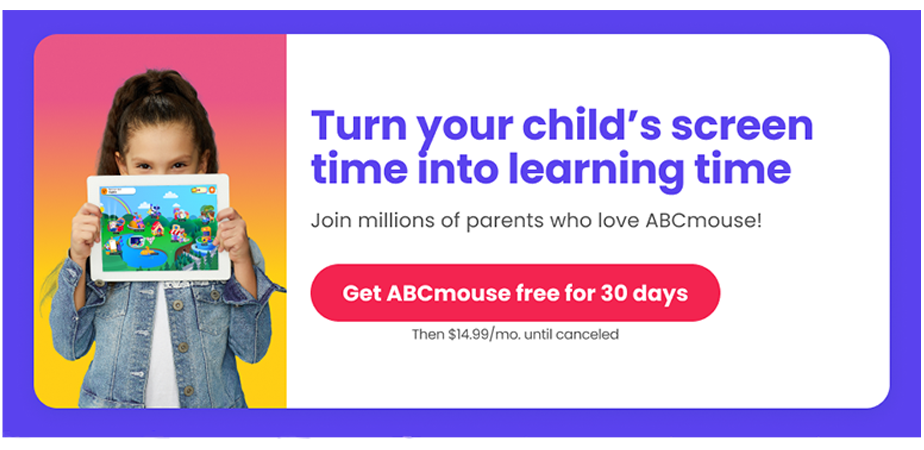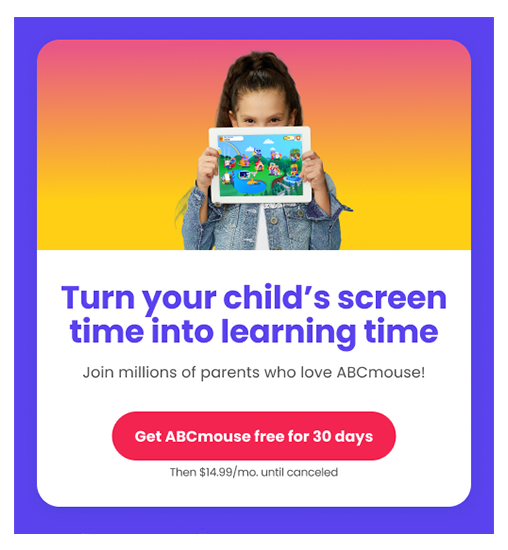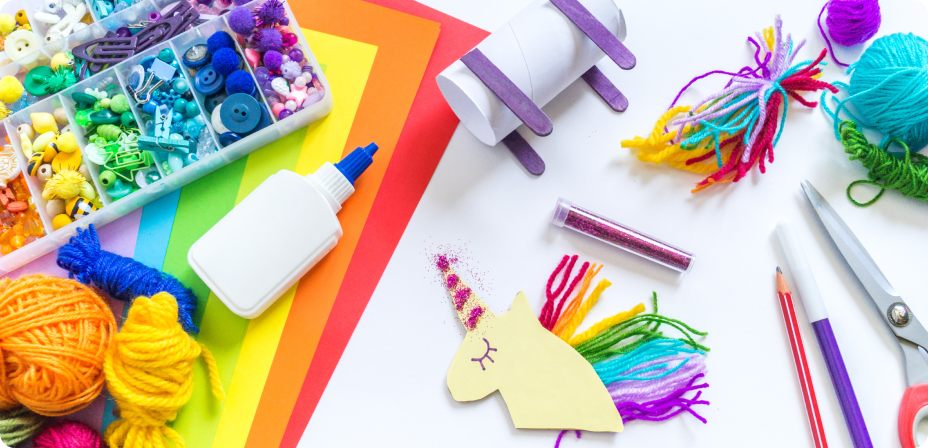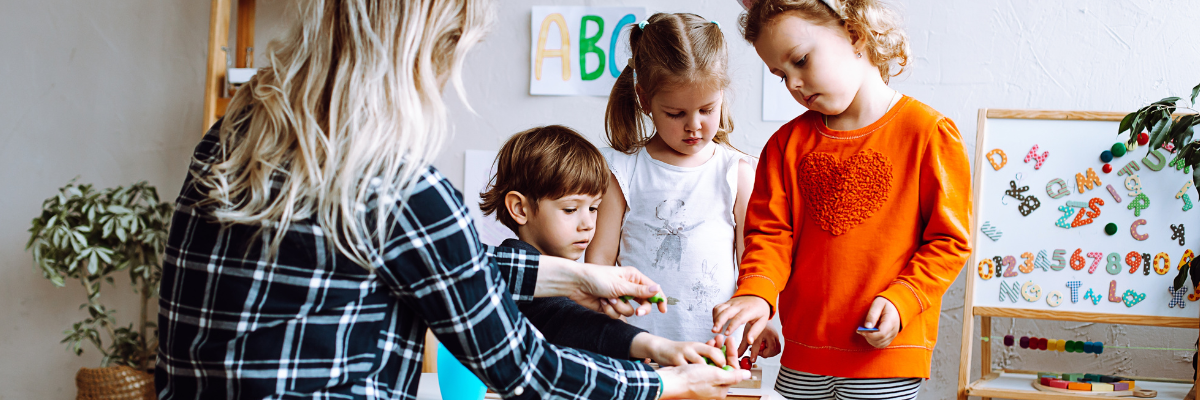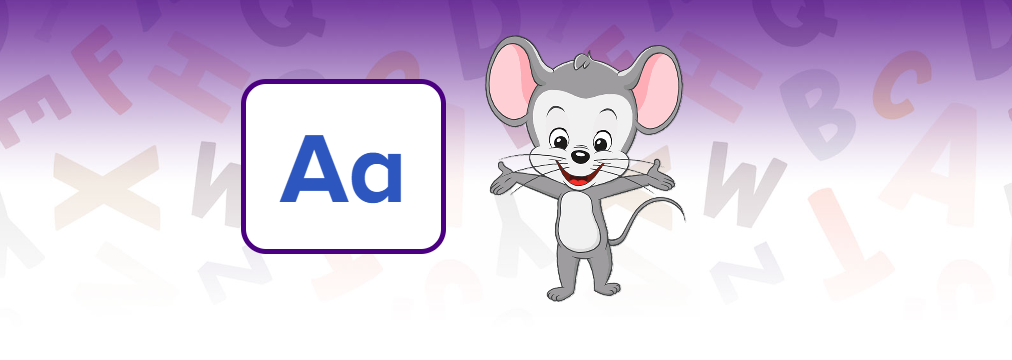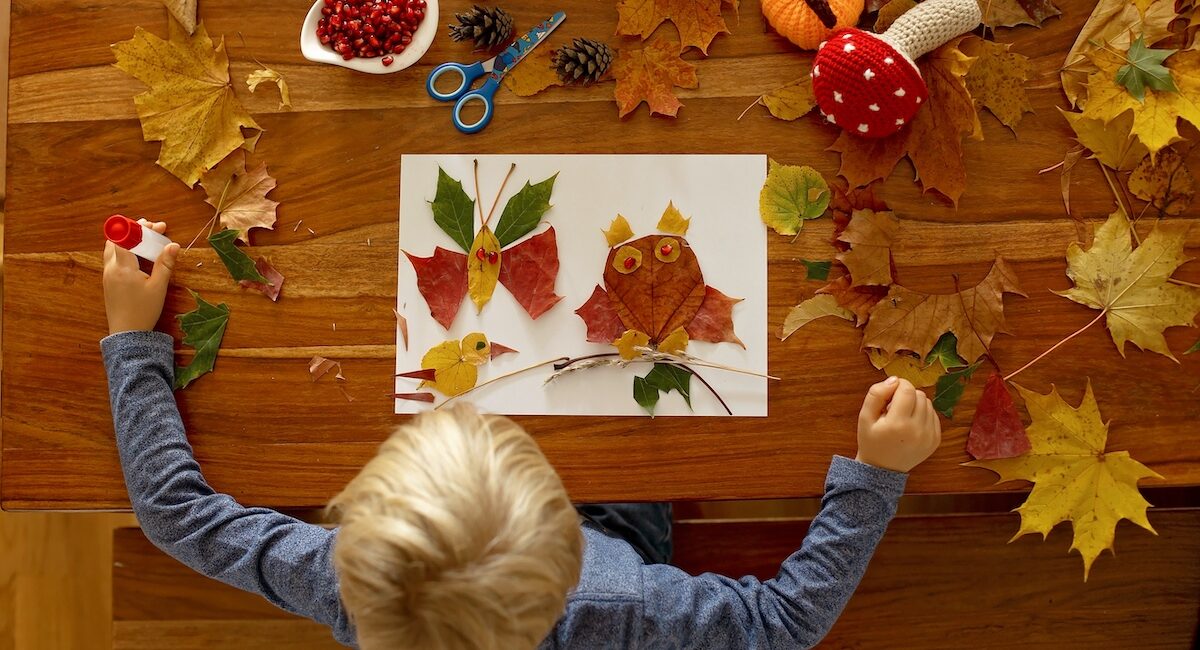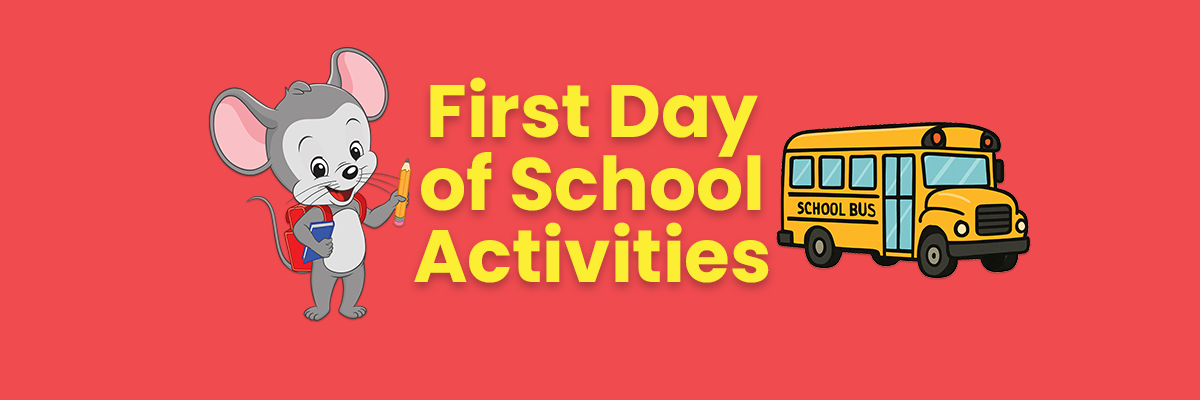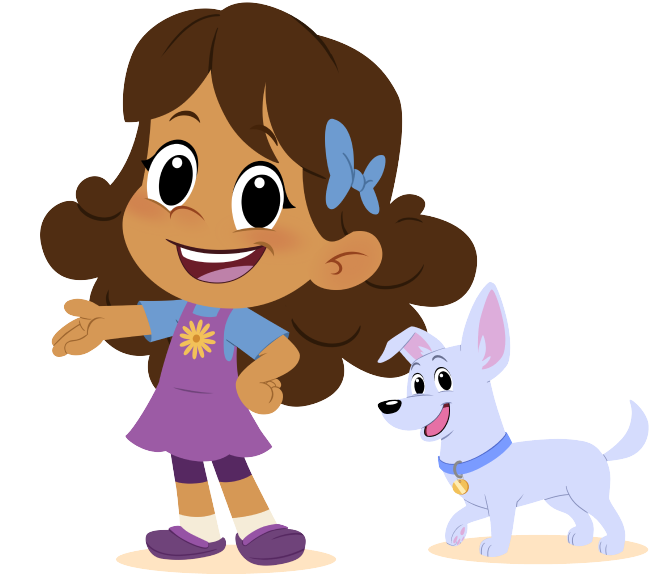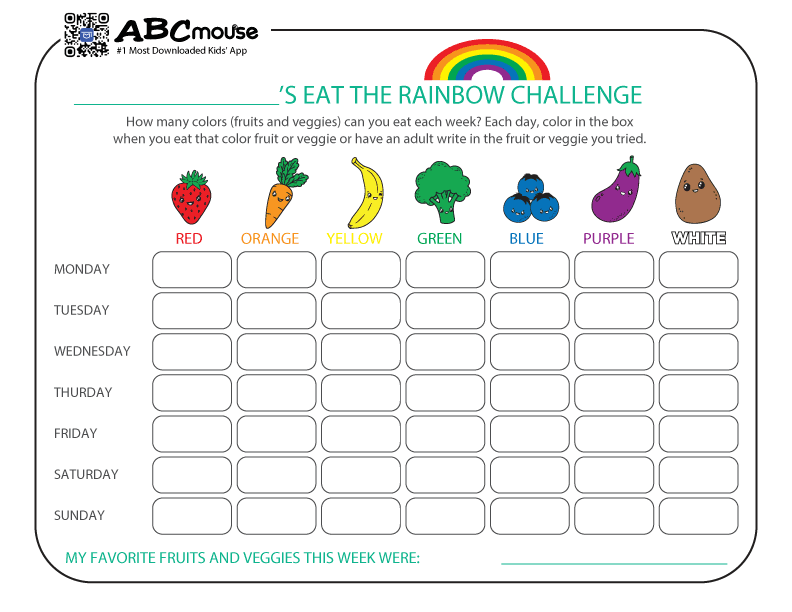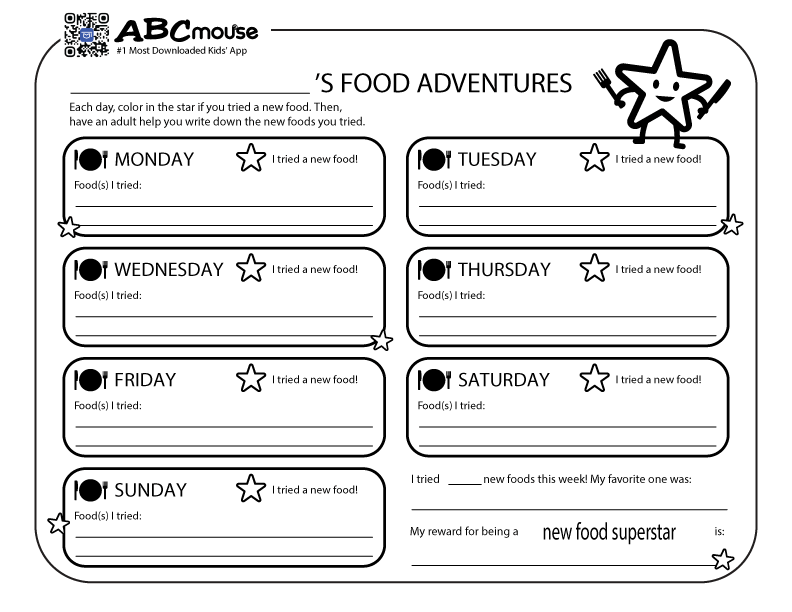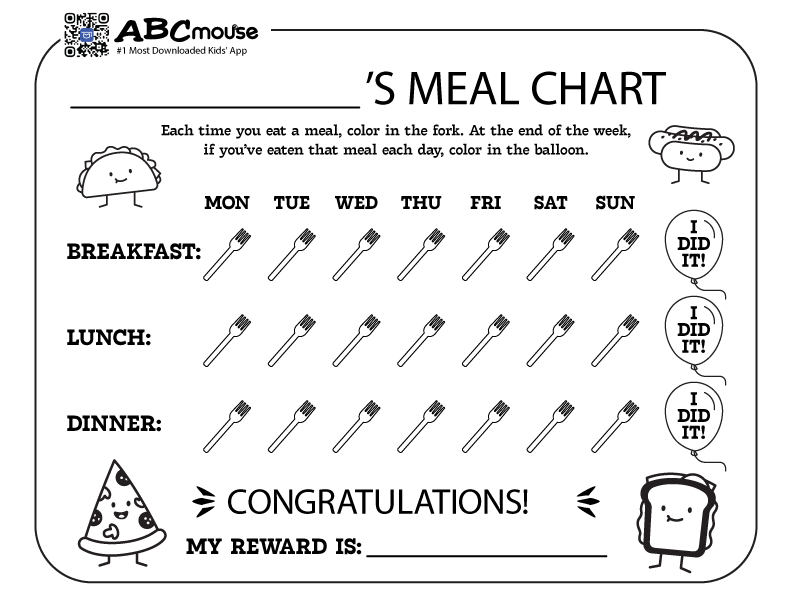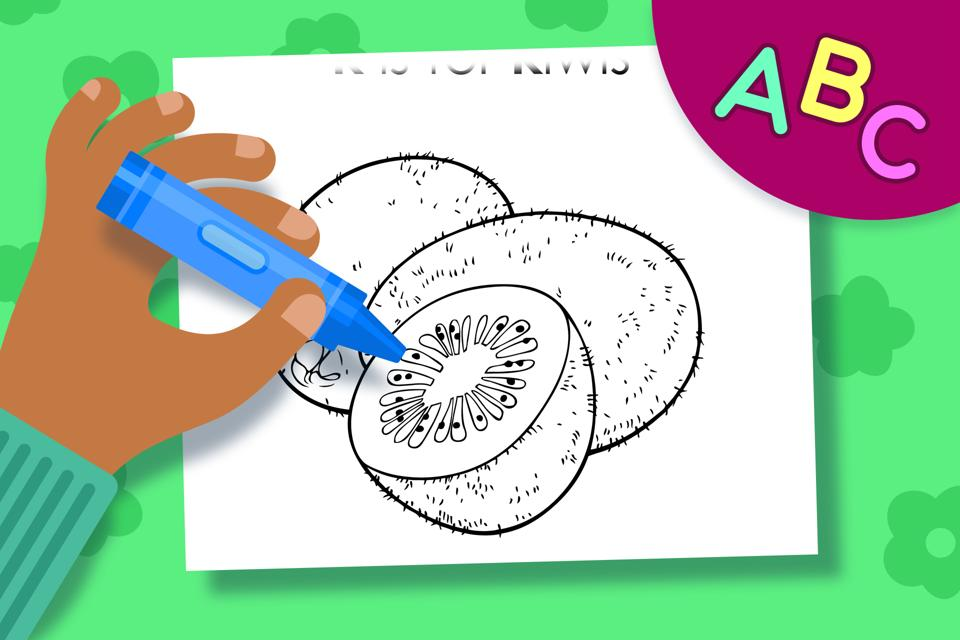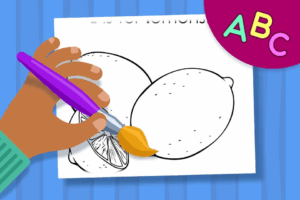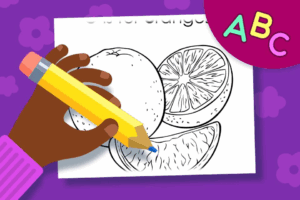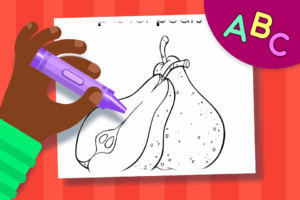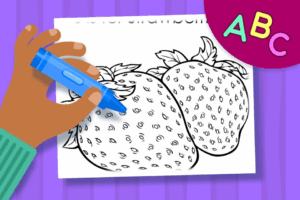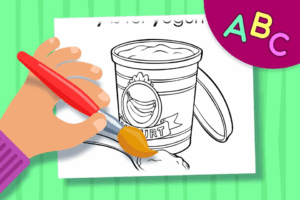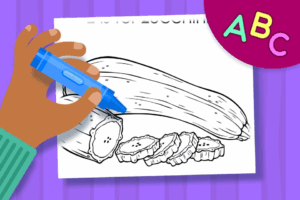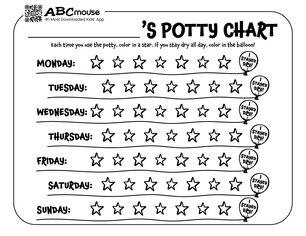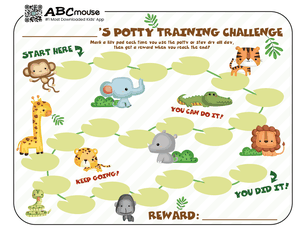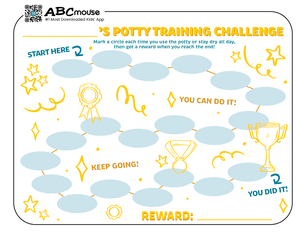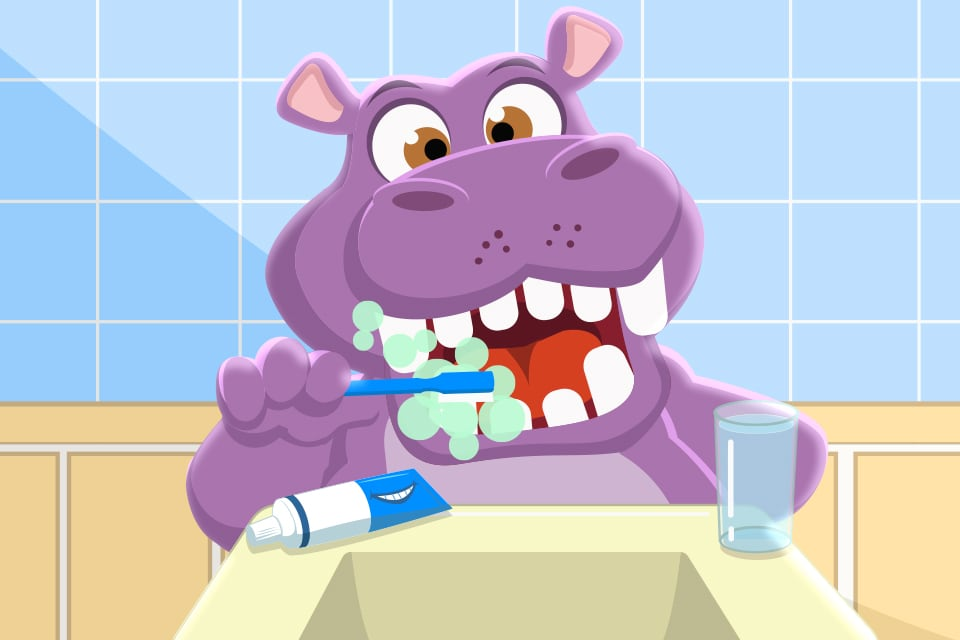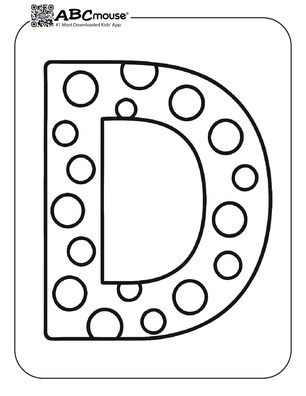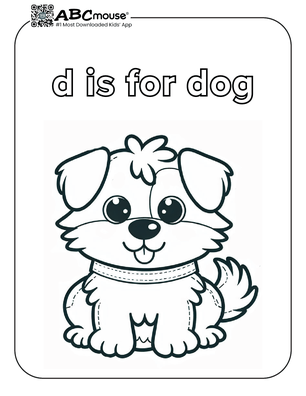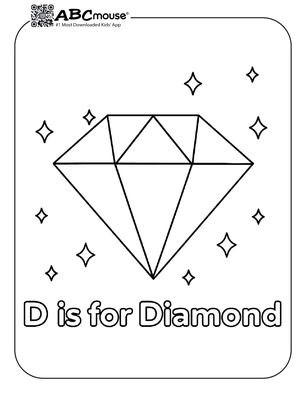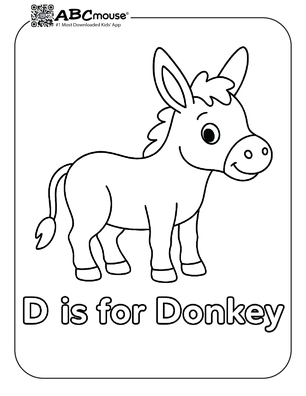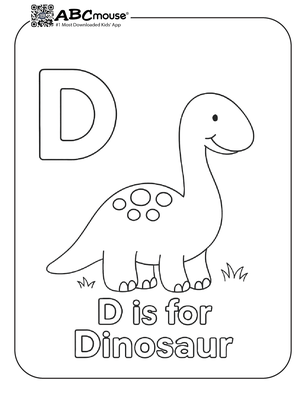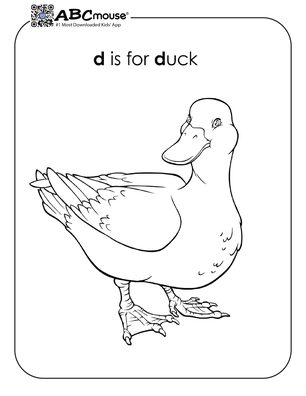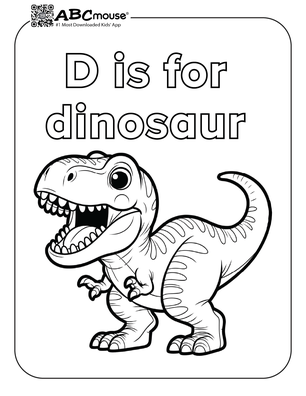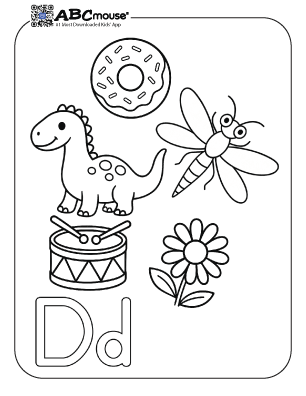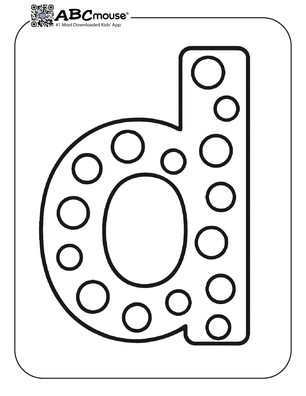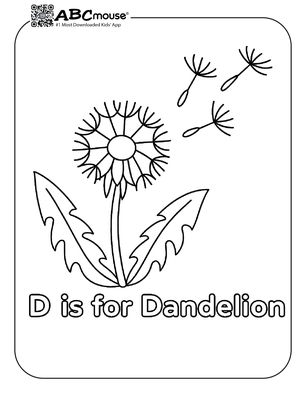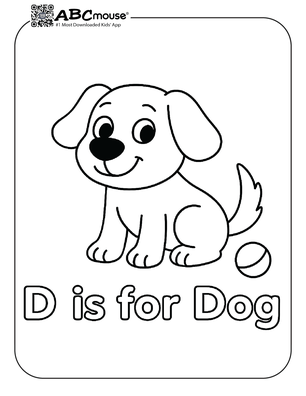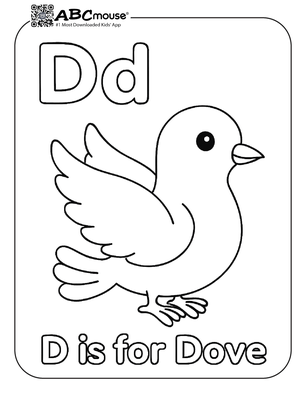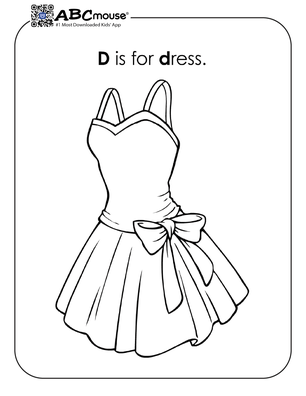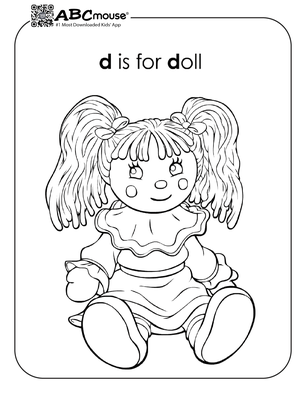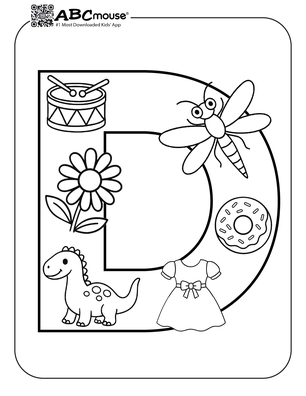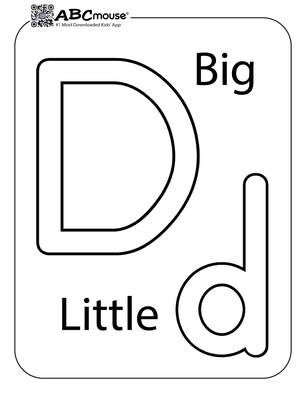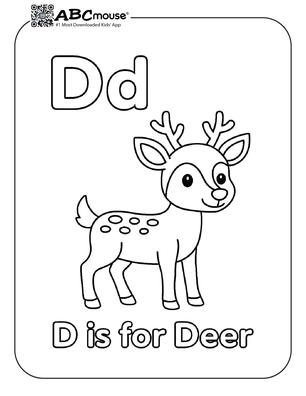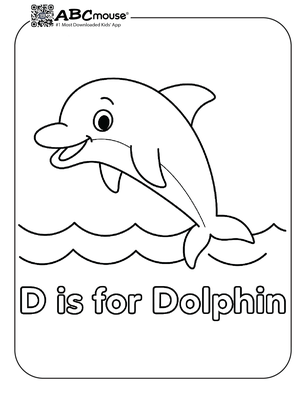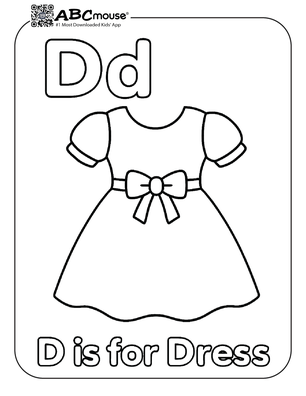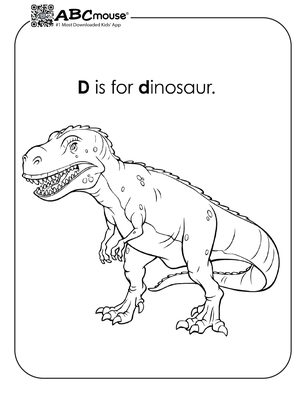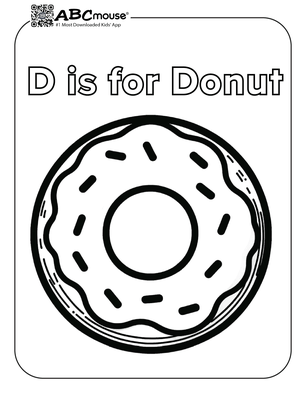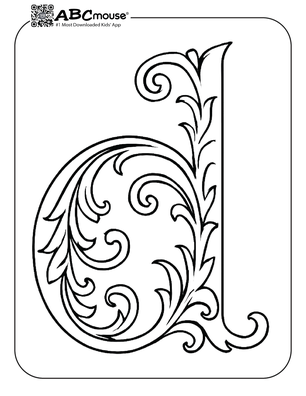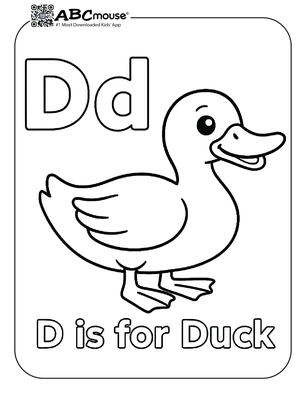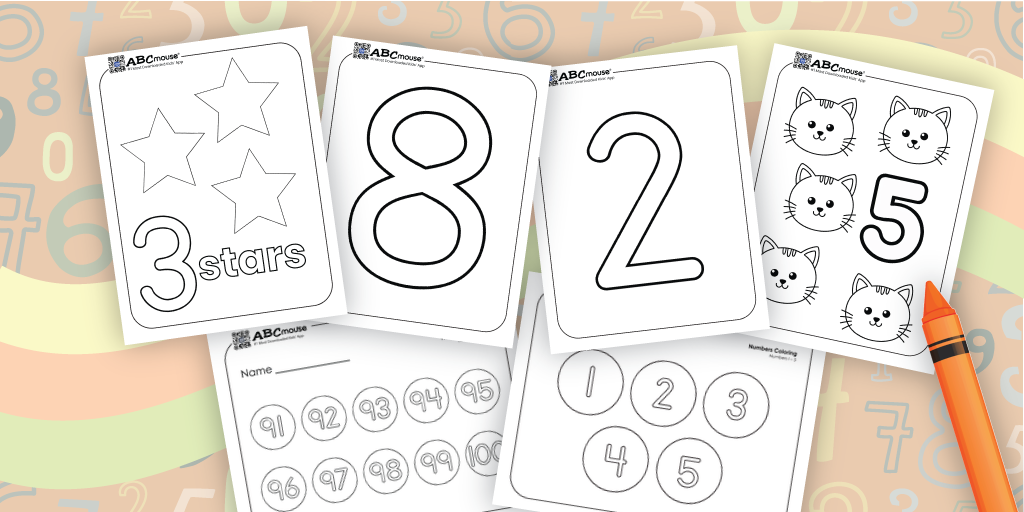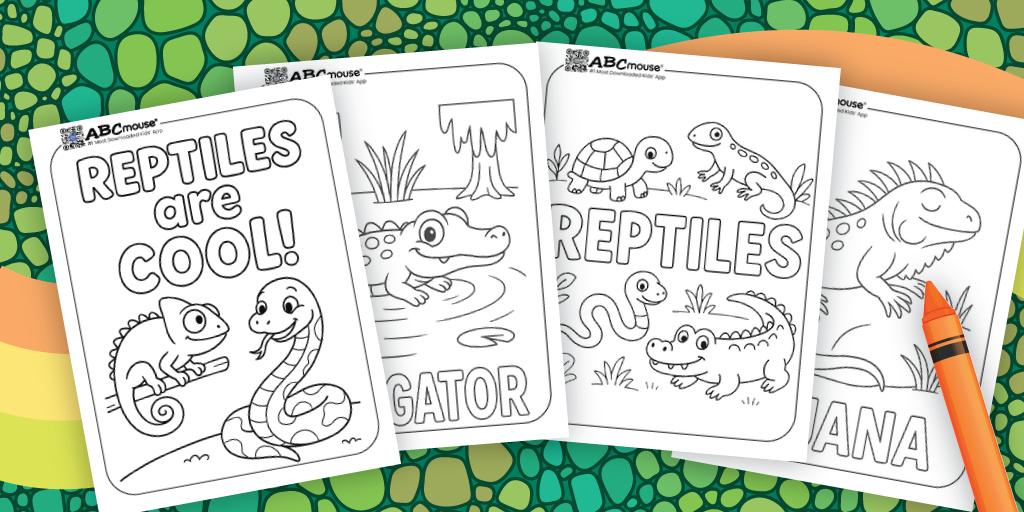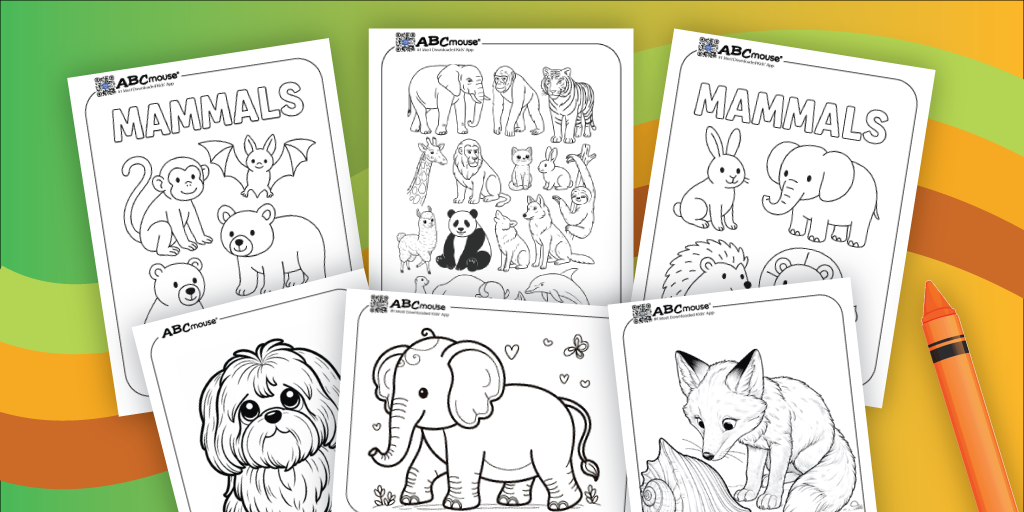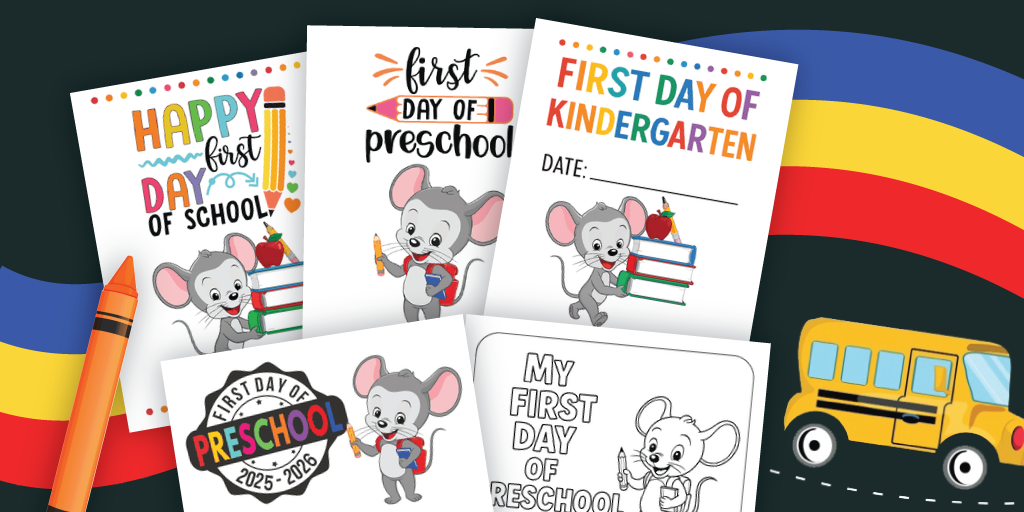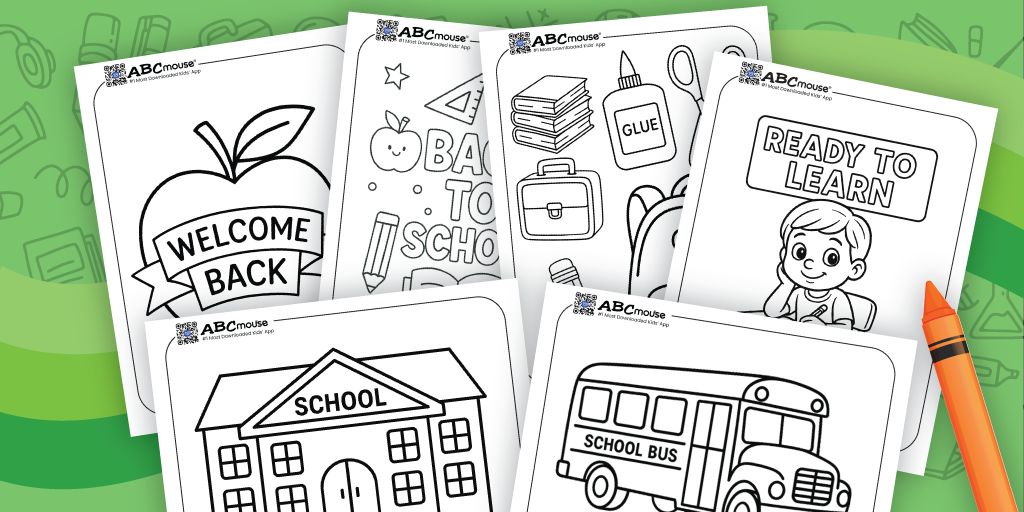
Share
15+ Sensory Play Ideas for Home or Classroom
Get ready for hands-on fun with 15 sensory play activities that support learning and development.
Sensory play is any activity that engages a child’s senses—touch, sight, hearing, smell, taste, movement, and body awareness—to boost learning and development. These hands-on experiences help children build important skills, including problem-solving, motor coordination, language, and emotional regulation.
Discover 15 easy and engaging sensory play ideas for kids that parents and teachers can use at home or in the classroom to promote creativity, curiosity, and growth. Pair them with cooperative play activities to help kids build social skills while they’re at it.
Learn more about sensory play and other types of play, such as cooperative play and the 5 stages of play in early childhood.
Sensory Play Ideas for Children
Sensory Bins
A sensory bin is just what it sounds like: a large bin with various items for kids to explore, especially through tactile play. It usually includes one or two major filler items, with smaller items mixed in and ways to interact. Here are a few ideas to try:
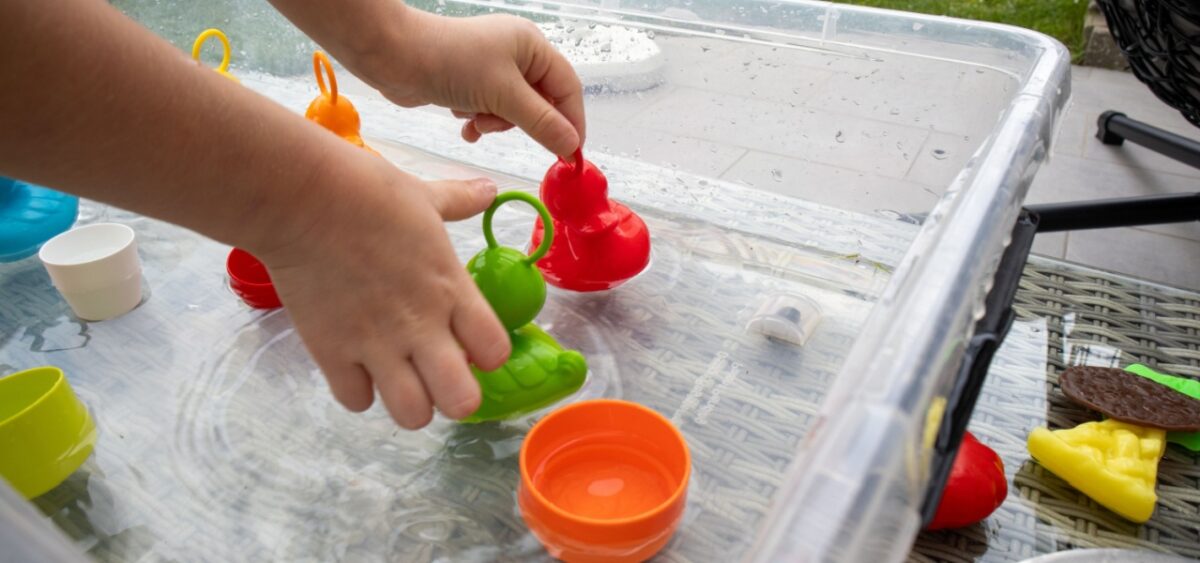
Ideas for a Water Table or Bin
Water of varying temperature, items that float or sink, and toys for measuring, pouring, spraying etc. Try a bin of cool water with plastic ice cubes, toy penguins and seals, and measuring cups, or warm water with a few drops of blue food coloring along with toy fish and squirt toys or plastic water droppers.
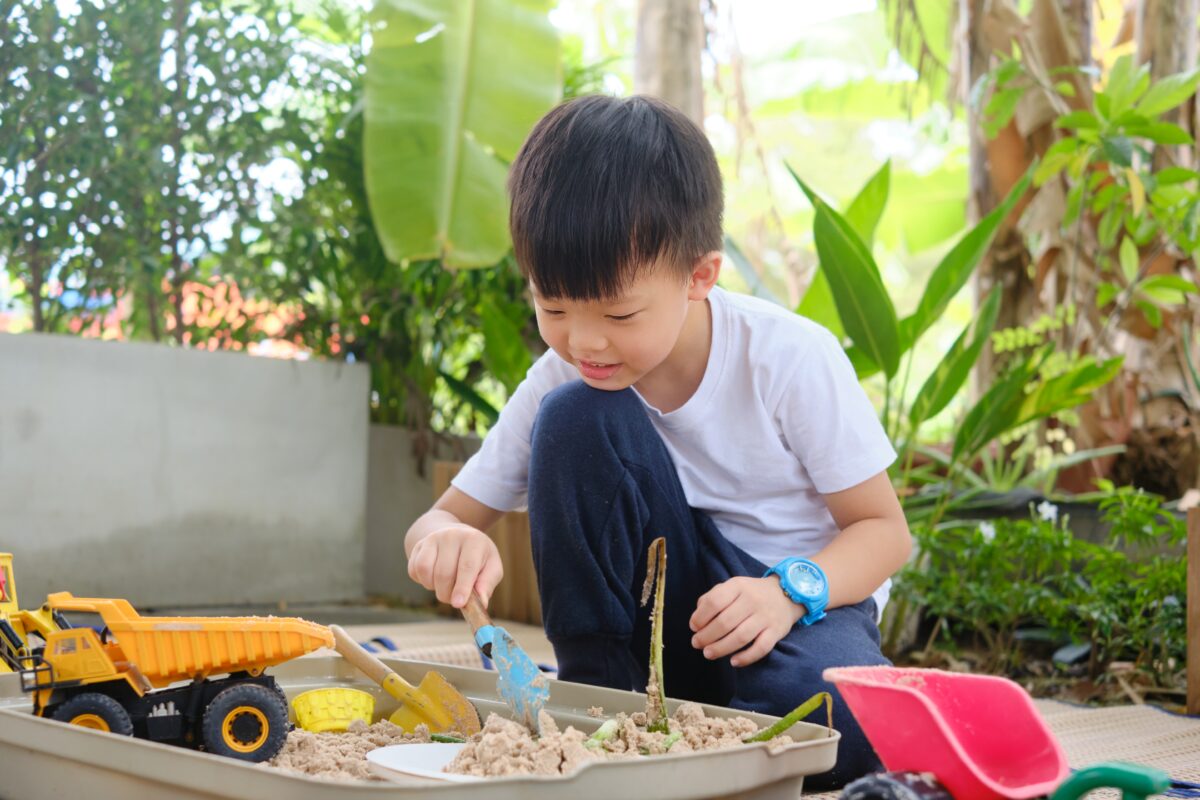
Ideas for a Sandbox or Bin
Play sand or kinetic sand, small toys and other items, and shovels, pails, spoons, or other digging tools. Add some water to change the texture and help kids mold the sand into shapes or towers.
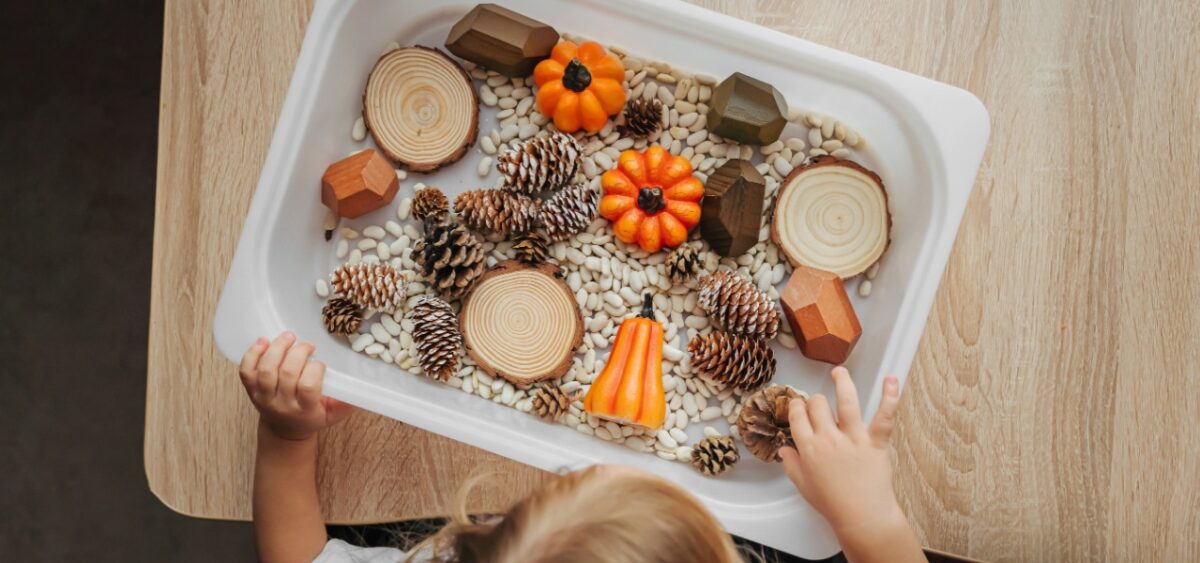
Ideas for Nature Bin
Fill the bin with soil and small rocks, twigs, leaves, berries, pine cones, and/or acorns. Then bury toy animals and use hand-held shovels or rakes to search for them.
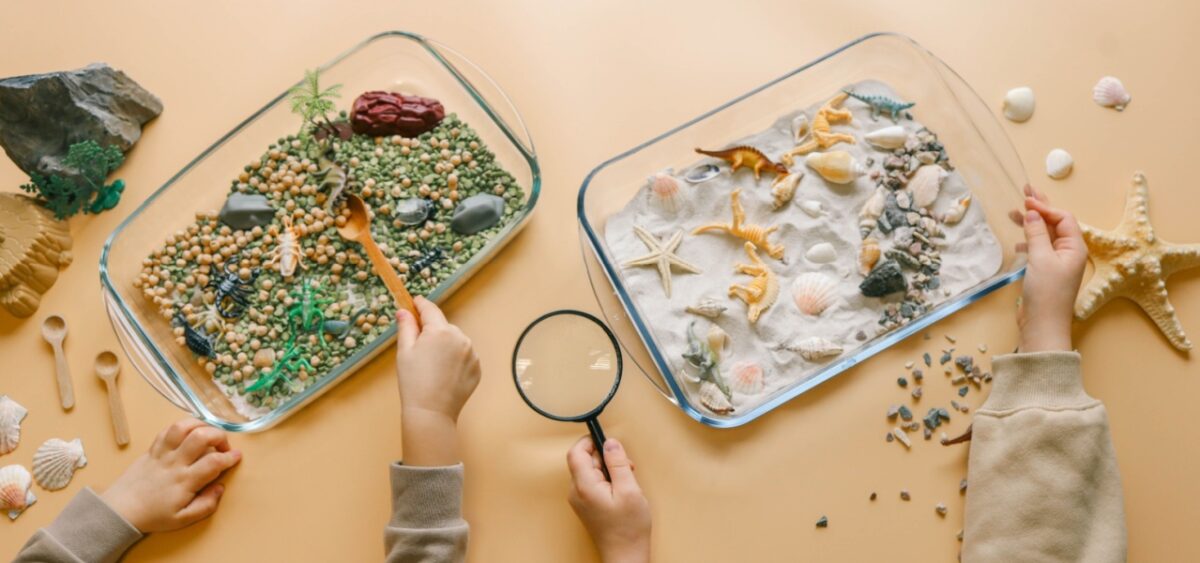
Ideas for an Explorer Bin
Fill a bin with soil or sand and bury toy dinosaurs or dinosaur bones or other artifacts or treasures, like plastic gems and coins. Provide spoons and shovels to help your child dig for buried treasures and specimens.
TIP: There are endless options for sensory bins, including alphabet sensory bins, bins with trucks and diggers, figurines buries in “clouds” (cotton balls), and so much more.
Outdoor Sensory Activities
The great outdoors is absolutely full of stimulation for the senses—try to spend time outside with your child whenever you can. Dance in the rain and splash in puddles, put on some sunscreen and enjoy the warmth of the rays on your skin, crunch through the spicy-smelling fall leaves, or dig and play in the winter snow. Here are some other fun ways to explore the outdoors through sensory play:
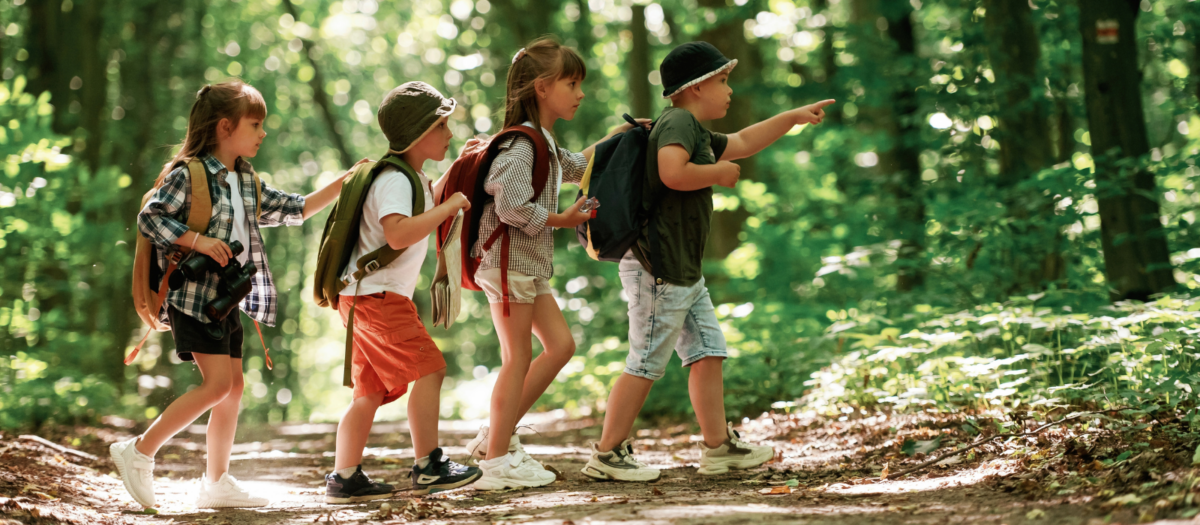
Nature Walk
Head to your favorite wild place and take a stroll, stopping from time to time to identify what you can see, hear, smell, and feel. This is also a good chance for kids to balance along logs, hop over obstacles, and climb rocks or trees.
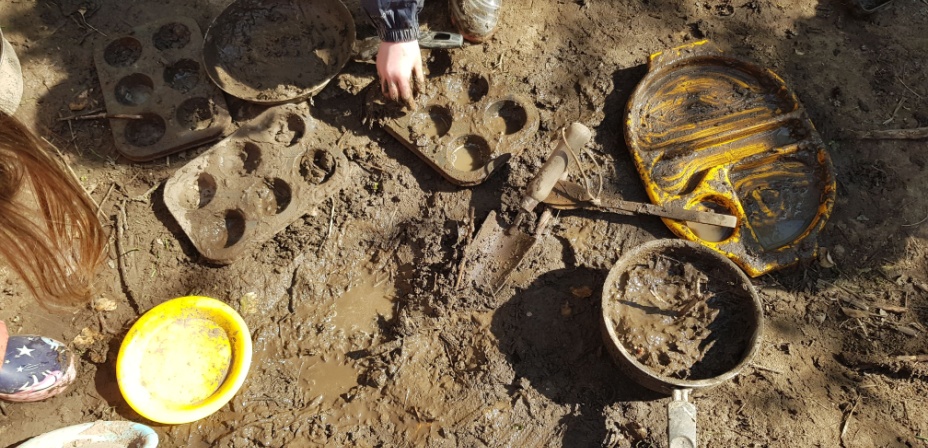
Mud Pies
Embrace the squish of cool mud! Whether you play in a local creek or mix up a bin of dirt and water at home, mud offers unusual tactile sensations. Some kids love it, some kids hate it, but experiencing it is important for brain growth and development.
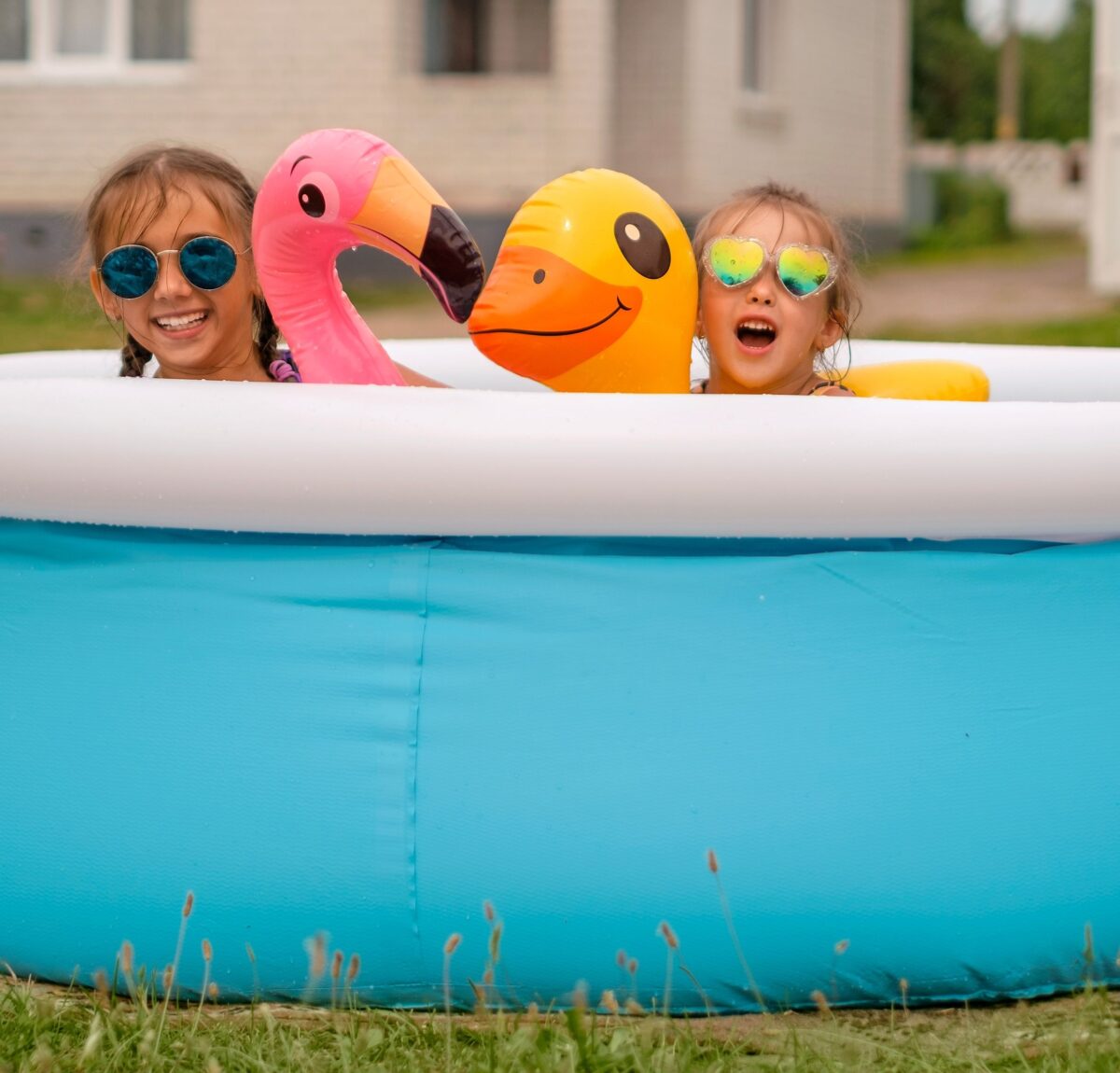
Kiddie Pool
This beloved summertime activity is all about the senses! Feel the water, hear it splash, watch the drops make rainbows in the sun—and that’s before you even bring water toys or cups and pails into the mix. Add taste and smell into the mix by enjoying a popsicle as you loaf around in the water. (Always supervise children around water of any depth.)
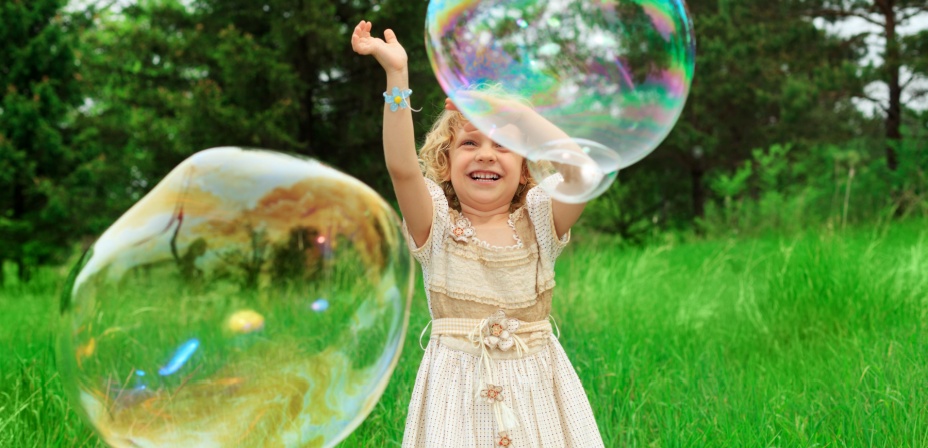
Bubbles
Looking for a calming sensory activity? Blow bubbles together; the deep inhales and measured exhales are a form of meditative breathing, and watching the bubbles float away is oh-so-relaxing. Want to make things more exciting? Turn on a bubble machine and some music, and dance around as you feel the bubbles breaking on your skin!
TIP: Find even more outdoor sensory activities with our article featuring 50+ Nature Activities for Preschoolers and our list of outdoor spring activities for kids.
Sensory Art Activities
When it comes down to it, every artistic activity is about the senses. Kid-friendly arts and crafts projects let them experience colors, patterns, textures, scents, and more. Try out these simple art ideas that engage the senses:
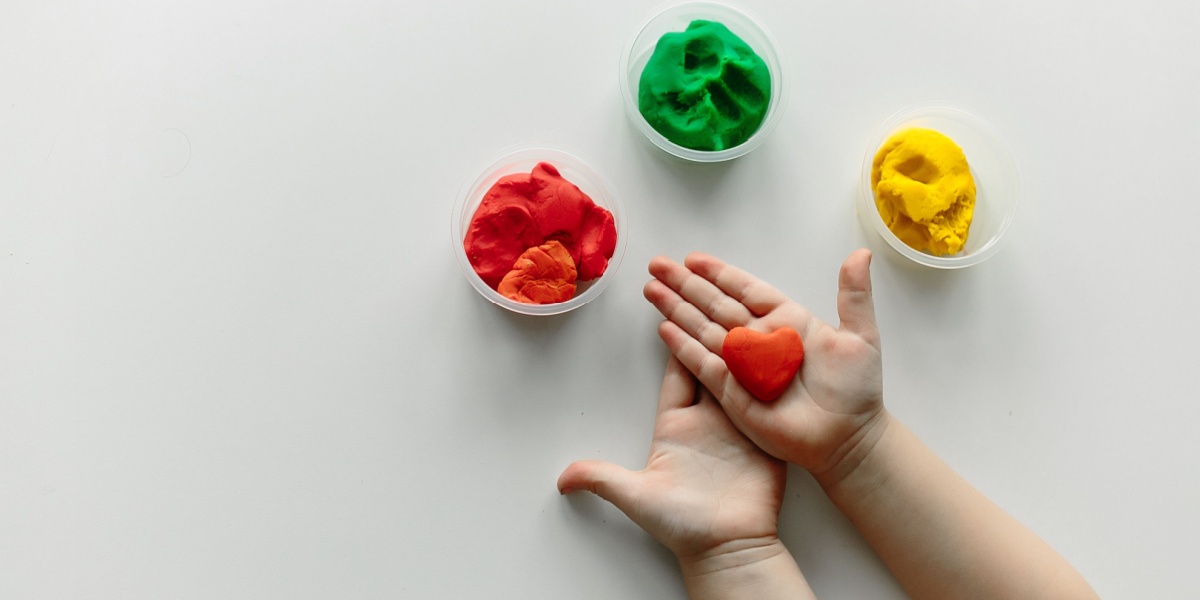
Scented Playdough
You can buy scented dough, or make your own by adding a few drops of essential oils. (Just make sure your kids know that even though it smells good, they shouldn’t eat it.)
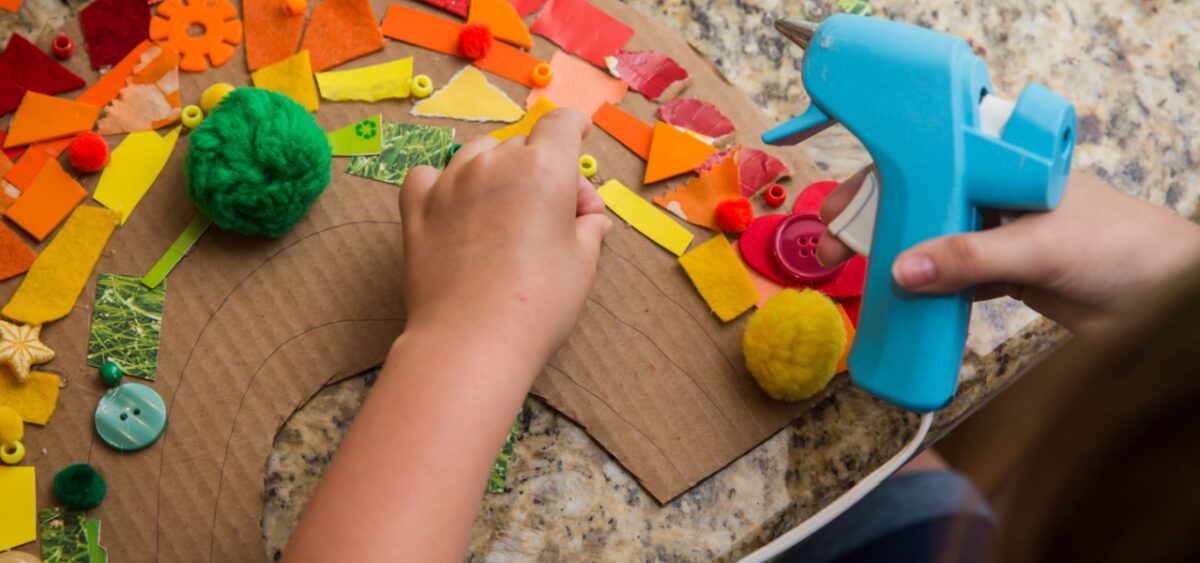
Texture Collage
Gather items of different textures and arrange them in a collage. Include things like sandpaper, faux fur, burlap, yarn, crumpled paper, and more. Hang your collage at child height so they can return to experience it again and again.
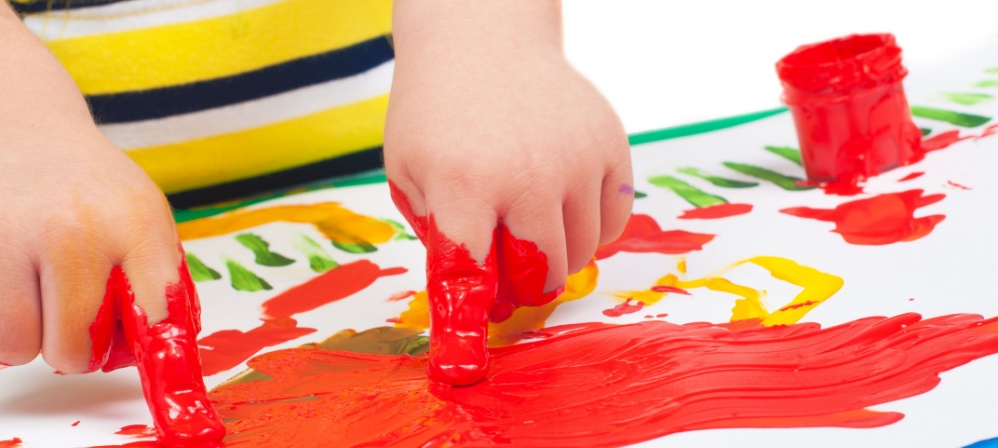
Finger Painting
Here’s another classic childhood activity that’s all about the senses. Encourage your child to consider how the paints feel on their skin, wet and dry. Smell them and listen to the sounds they make when you glop them onto the paper or spread them around.
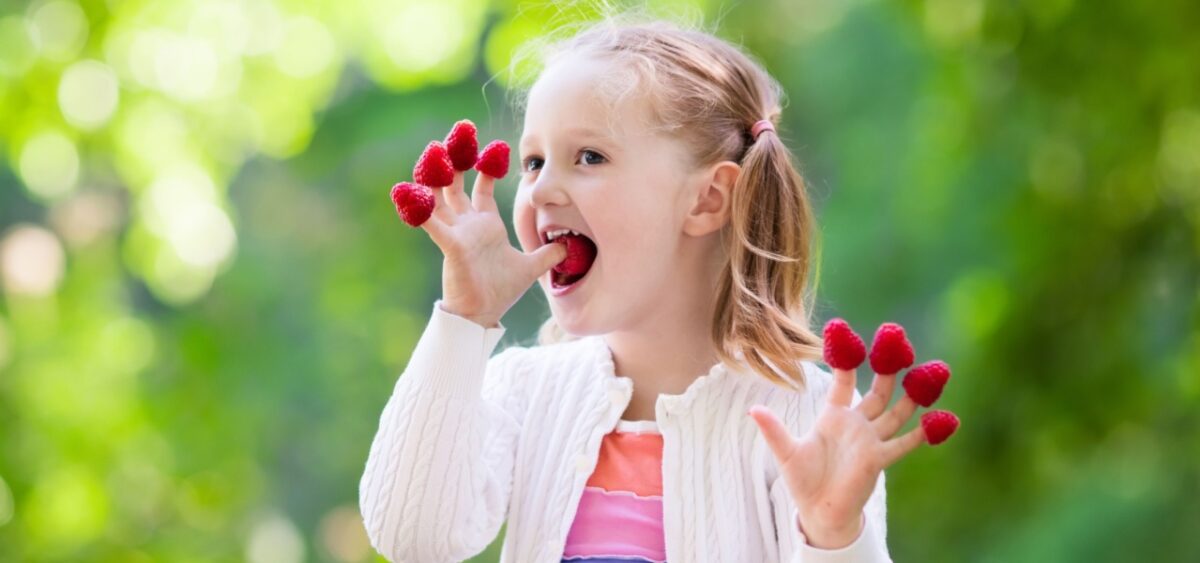
Snack Art
It’s okay to play with your food sometimes! Sort fruit by color or shape or arrange crackers and cheese to form patterns. Fill a plate with as many colors as you can, and eat slowly to enjoy the textures, scents, and flavors.
TIP: Need another sensory art activity? Try ice painting! Freeze colored ice cubes and use them to paint on paper as they melt. Learn more about ice painting here. Our Alphabet Crafts also feature many sensory-focused activities.
Quiet, Mess-Free Sensory Play Activities
Yes, it IS possible to encourage sensory play without making a mess or a racket! These ideas give parents a break, and are easier on children with sensory processing differences too.
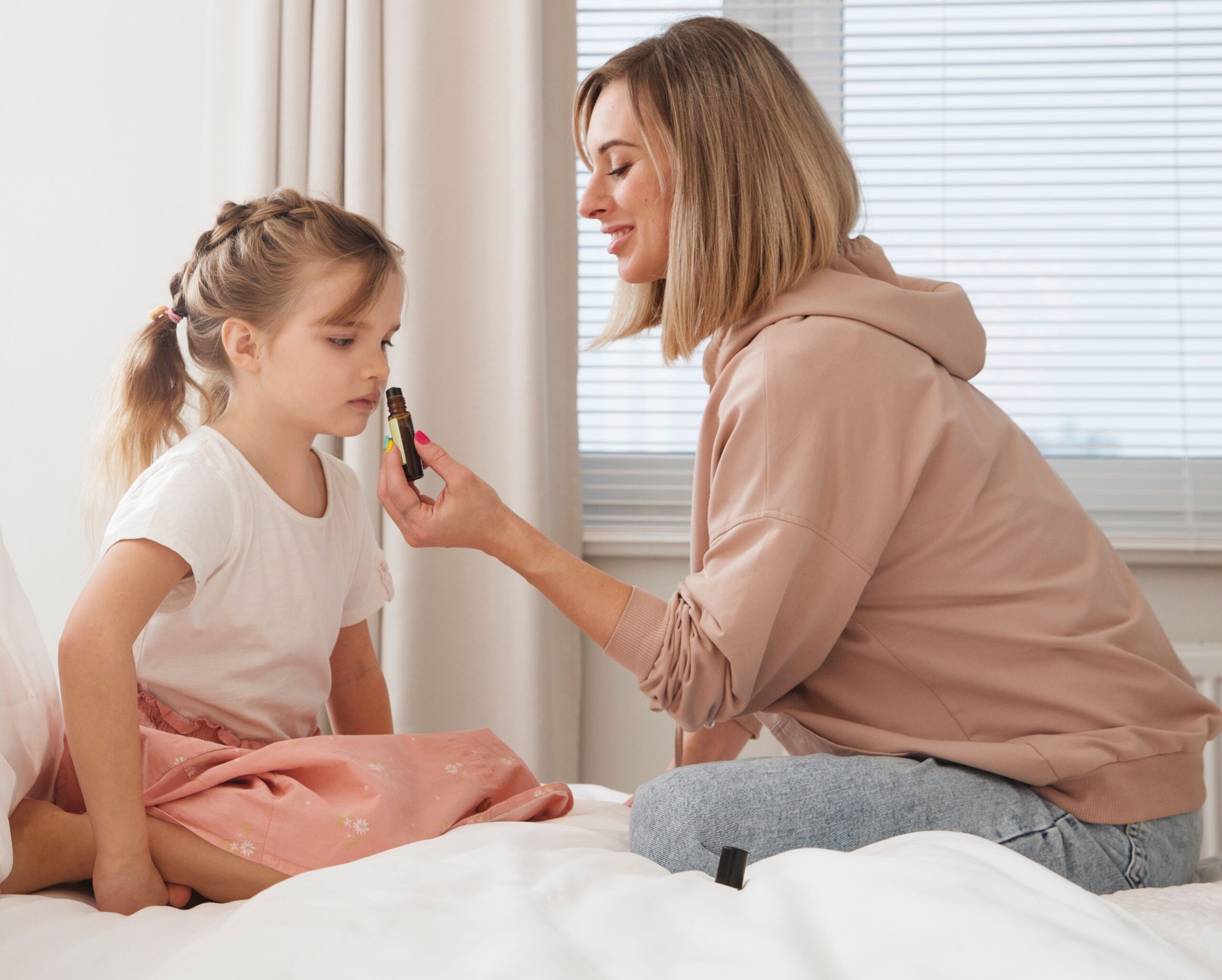
Scent Bottles
Add a few drops of essential oils to cotton balls, then place them in empty shaker bottles. Kids remove the lids and smell what’s inside, trying to identify the fragrance. You can also let them explore the various scents in your spice collection by sniffing the lids.
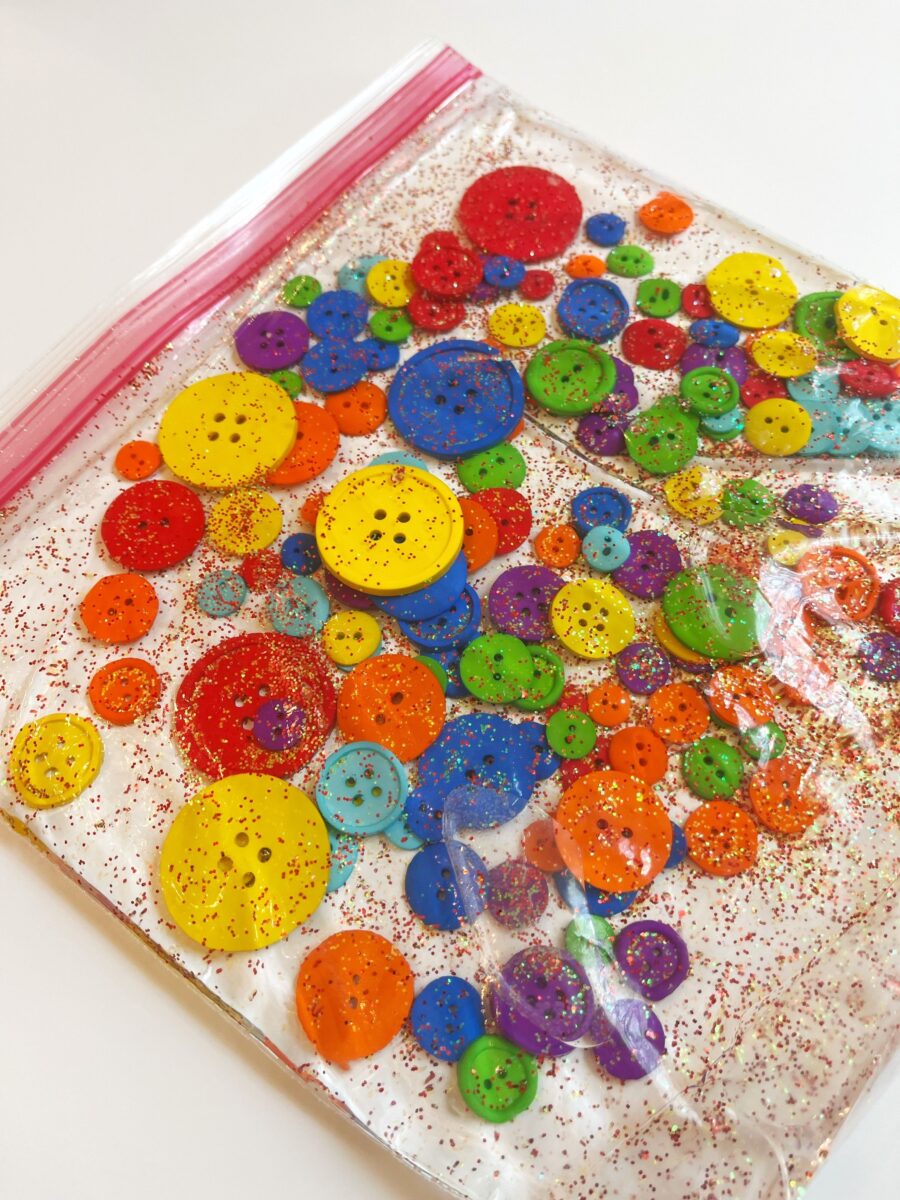
Sealed Bag Squish
Fill a plastic zipper bag half-full with slime, finger paints, water beads, buttons, or any other substance that can be squished or moved around through the plastic. Seal it and add a layer of clear packing tape around the edges for strength. Your child can squeeze and squish the bag, or lay it flat and trace shapes, letters, or numbers.
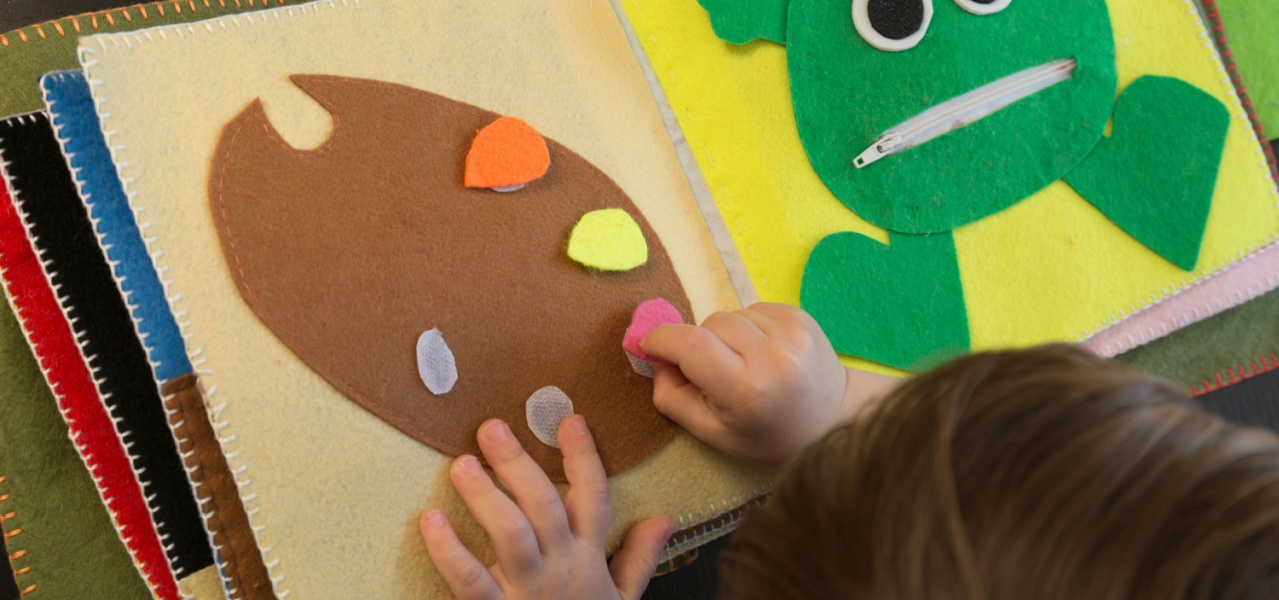
Textured Book
Collect fabric in a variety of textures and sew them together to create a book. You can also buy books purposely made for sensory play, with crinkly pages, tabs to chew on, and fabrics to touch.
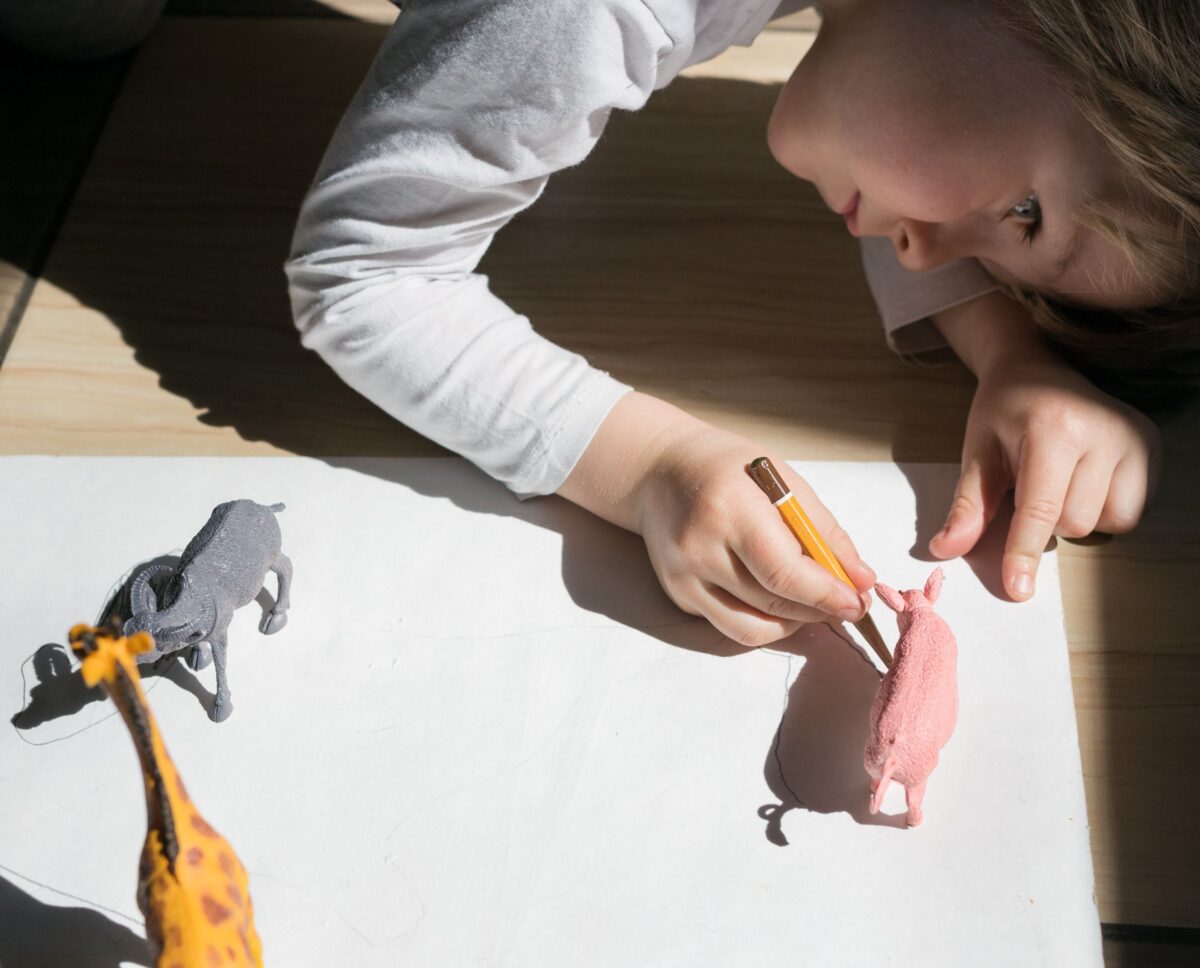
Light Table or Shadow Tracing
A light table is simply a flat lighted surface (you can make your own by placing a string of lights under an overturned shallow plastic bin). Laying various items on top allows kids to play with color, shadow, and the way light interacts with opaque, translucent, and clear objects. You can also have kids set up toys a piece of paper and trace the shadows they create.
TIP: For even more sensory play and learning ideas, check out our free activities articles here!
Tips for Sensory Play
1. Start Simple
You don’t need to invest in a lot of specialized toys or items. Just provide a variety of items, objects, and experiences that allow your child to use their senses. Use sponges and washcloths during bathtime, and compare the difference. Note the different sounds you hear when you eat different foods. Stand in a busy place and identify the smells and sights around you. Let kids balance their way along curbs and help push the shopping cart. All of these are sensory play!
2. Supervise and Guide
As adults, one important way we use our senses is to identify potential dangers and hazards around us—a red surface is often hot, poison ivy will make us itch, sharp things cause pain, etc. Supervise gently as kids learn from sensory experiences, stepping in when safety is a concern—but try not to direct their play too much. The best sensory play is unstructured and child-led.
3. Create Safe Play Spaces
One great way to give your child autonomy in sensory play is by creating a safe environment where they can try things with confidence. That’s one reason sensory bins are so popular: the items included are those that are unlikely to cause harm. Add mats to playroom floors to protect against tumbles, do messy activities on washable surfaces, and teach your child common-sense safety rules.
4. Engage Multiple Senses
If you’re planning specific sensory activities, try to find ways to include multiple senses. For example, if you’re playing with playdough, try adding essential oils for scent, mix-ins like sand or small pebbles for texture, and a variety of colors too.
5. Encourage Descriptive Language
As you and your child play, use descriptive words and invite them to do so too. “Ooh, this feels slimy and cold, but I think I like it! What do you feel when you touch it?” or “This sauce is salty, but it’s also a little sweet. What do you taste?”
6. Include Movement
Sensory play should include opportunities for vestibular (balance, movement, and spatial orientation) and proprioceptive (the body’s sense of movement and position) development too. Jumping, spinning, hopping on one foot, and balancing on a small box are sensory play; so is learning to ride a bike or scooter, swimming, and playing catch.
7. Respect Sensitivities and Preferences
Some children are naturally more sensitive or may have sensory processing disorders. But all of us have certain sensory experiences we just don’t like—maybe you just can’t stand touching slimy things, or the sound of chewing drives you nuts. Respect your child’s preferences, and support exploration without pressure. Encouragement is good; forcing unfamiliar sensations can backfire, especially with sensory-sensitive kids.
8. Rotate Materials Regularly
We can become accustomed to sensory experiences very quickly—think about how you’re able to tune out the sound of the neighbor’s lawn mower or don’t even notice the beautiful flowers in a garden you pass through eight times a day. When you regularly offer new experiences and materials, your child will continue to experience the new stimuli that encourage proper brain development.
9. Work Clean-Up Into the Routine
Sensory play can be messy! And while that’s just fine, it also means there’s clean-up to do afterwards. Make sure your child gets into the habit of helping out with the mess. Even very little kids are able to wipe things with a cloth or put playdough back into its containers. Keep kids involved in sensory play from start to finish for the most meaningful experiences.
10. Combine Sensory Play with Mindfulness
When we feel overwhelmed, that’s often because our senses are overloaded in one way or another. Sensory play can actually promote emotional regulation by helping us identify how we’re feeling, and why we’re feeling that way. Try the five senses meditation: Stop where you are and look for 5 things you can see, 4 distinct sounds, 3 things you can feel (like the breeze on your skin or the floor under your feet), 2 things you can smell, and 1 you can taste (even if it’s just your own saliva).
Sensory Play Tips for Children With Sensory Processing Differences
There are a variety of ways that people process sensory experiences differently. Some children may be easily overstimulated by noise, touch, or movement, while others may seek intense sensory input in ways that don’t fit the setting, such as constant spinning or chewing on non-food items.
When it comes to sensory play for all types of children, the key is to be flexible and responsive. Remember, a child’s sensory needs can change from day to day—what’s comfortable one time may feel overwhelming the next. These tips may help, but it’s also recommended to consult a professional in the field:
- Go slowly at first. Limit the sensory play to one or two new experiences, introducing them gradually. For example, with new textures, let children touch them first with a stick or a gloved finger before using their bare hand.
- Offer control and choice. “Would you like to taste the spice, or do you just want to smell it for now?” Respect their refusals, and demonstrate the behavior yourself instead. “You don’t want to touch the worm? How about I touch it and tell you how it feels? It feels a little slimy, but also smooth, and it wriggles!” If child declines something, remember that opting out isn’t necessarily a setback—it could be them learning to recognize and communicate their needs.
- Note and limit challenging sensory experiences. Some kids have no trouble sticking their hands into a bucket of slime, but hate loud noises. Others love fireworks, but don’t like to be touched. Ask your child to describe how various forms of sensory play make them feel, and don’t force them into experiences that could cause them to feel overwhelmed.
- Explain what to expect. “We’re going to use this new playdough. It has some sand mixed in, so it will feel a little rough, and it smells like cinnamon, just like your favorite cookies.” This gives kids a chance to prepare and opt out if they need to.
- Don’t judge. No one can know exactly how a sensory experience affects someone else. If your child tells you the music is too loud or the colors are too bright, respect their feelings and thank them for sharing. If you can’t alter the situation itself, ask your child what might make it easier for them. “It is pretty loud in here—thanks for telling me that it makes your ears hurt. Do you want to put your hands over your ears until it’s over?”
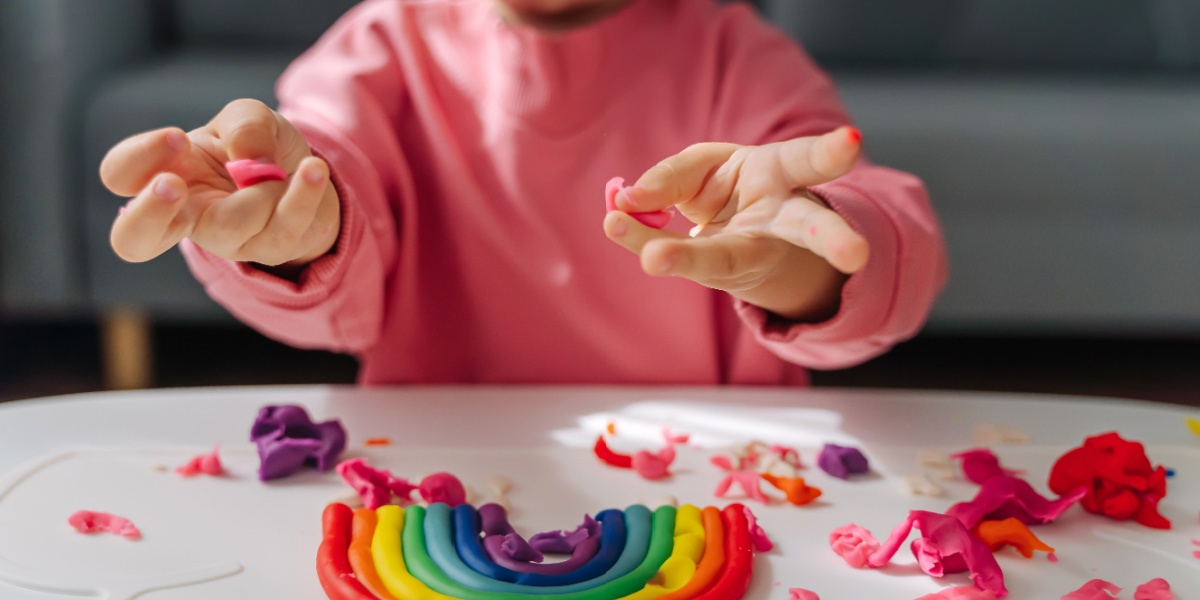
Share
What Is Sensory Play? Benefits, Ideas, and Activities for Learning
Learn how touch, sound, movement, and more help kids grow through play.
Table of Contents–Jump to Each Section
What Is Sensory Play? Definition and Examples for Kids
Sensory play is any activity that engages a child’s senses to support learning and development. This includes sight, sound, taste, touch, and smell, as well as the “hidden” senses of general body awareness and balance.
Characteristics of Sensory Play
- Interactive and hands-on
- Exploratory and immersive
- Creative and engaging
- Sometimes loud or messy
Sensory play starts almost as soon as a child is born born, as infants watch, touch, and listen to all the new stimuli around them. The first of the six stages of play, unoccupied play, is full of unstructured sensory play and exploration. It’s why babies seem to put just about everything in their mouth and grab anything new they see. Every sensory experience is new to them, and they use everything at their disposal to learn more about it.
As children get older, sensory play can become more structured, through activities specifically designed to stimulate the five senses, as well as build general body awareness. Parents and teachers can help by providing sensory activities and games throughout childhood, offering kids the chance to explore using their senses as often as possible.
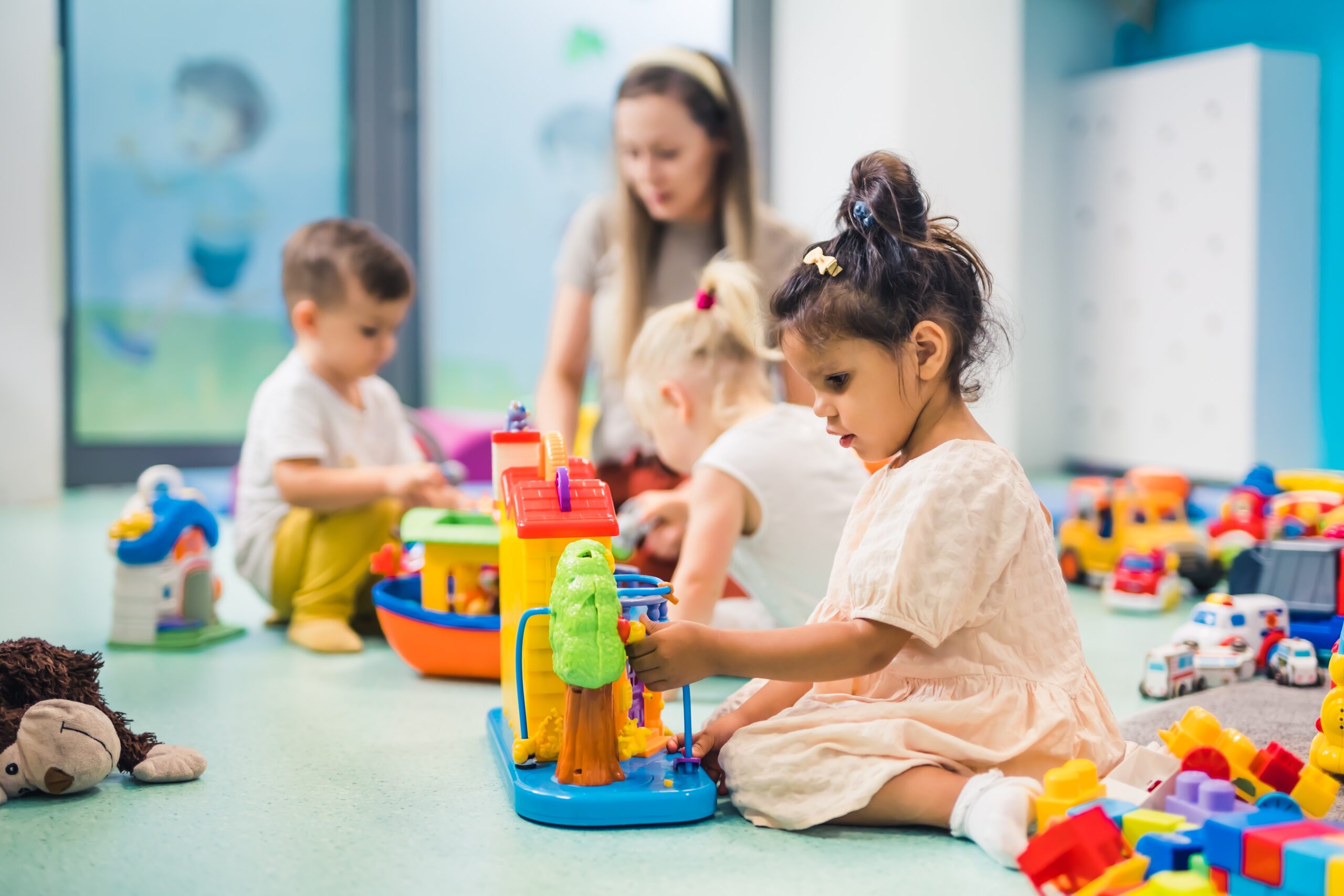
Research Behind Multisensory Learning
The multi-sensory theory suggests that engaging several senses at once—like sight, hearing, and touch—can make learning more effective and memorable. For example, this 2022 study determined that a “multisensory approach helps students link new information to prior knowledge and understand relationships between concepts.”
Additionally, research published in Frontiers in Education highlights that a “multi-sensory approach to processing not only enriches our comprehension of the received information but also ensures that learning is more robust and durable.”
Benefits of Sensory Play for Learning and Child Development
Sensory play helps the brain develop neural connections, building the foundations for learning and self-regulation. According to a report from Harvard University’s Center on the Developing Child: “Appropriate sensory input (e.g.,through hearing and vision) … build[s] healthy brain architecture that provides a strong foundation for lifelong learning, behavior, and health.”
A wide range of sensory experiences supports development of important skills and abilities like these:
Gross and Fine Motor Skills
In a 2024 study published in Brain and Behavior, scientists noted, “Motor and sensory developments are intertwined during infancy and early childhood. Sensory feedback guides improving movements and coordination; sensory experiences provide essential input for motor skill acquisition.”
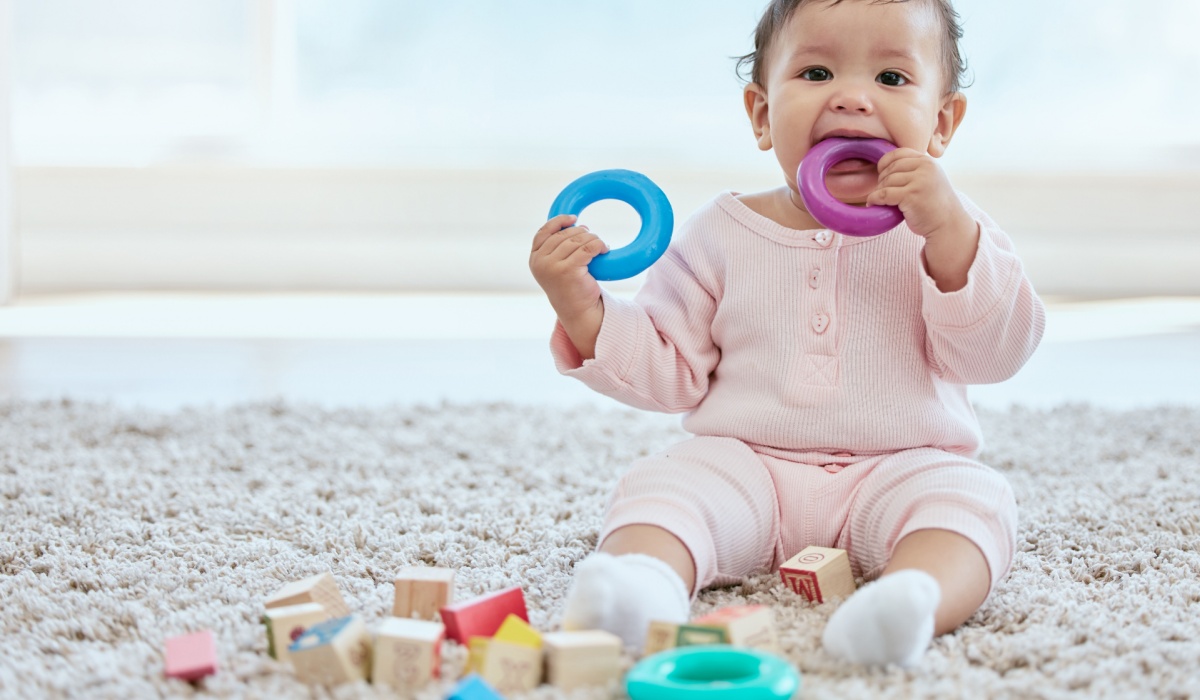
Their research shows that infants and babies who lack sensory experiences may face motor skills challenges and deficiencies as they get older. Babies track objects with their eyes, then begin to reach out and learn to grab, pinch, and manipulate. Sensory input spurs them on to learn and move, first crawling and then walking.
TIP: Providing children with sensory play opportunities right from the start encourages strong gross and fine motor skills as they grow.
Emotional Regulation
The link between emotions and sensory input is obvious to many of us: a few notes of a song can take us back to a school dance decades earlier; the smell of ginger and cloves instantly transports us back to our grandmother’s kitchen at the holidays. We not only experience the memories tied to those sensations—we also experience the emotions.
A 2023 report in Trends in Cognitive Science states, “Research indicates (i) the process of sensation is inherently emotional; (ii) sensation-driven emotion can be deliberately harnessed; and (iii) sensation relatively effortlessly activates emotional processes. Together, this work suggests that sensation constitutes a tool that people can use to deliberately manage their emotions.”
In other words, the way we perceive the world using our senses is directly tied to how we feel. What’s more, we can use our senses to help understand and, in turn, regulate our emotions. This is an incredibly challenging skill for most people to develop—it starts in early childhood and essentially continues throughout our entire lives.
TIP: Sensory play can be both stimulating and calming. Through this kind of play, kids learn how various types of sensory input affect their own emotions (it’s different for everyone) and can find ways to use their senses to manage difficult emotions and big feelings.
Language Development
Learning to talk is a complex process. It involves not only the ability to manipulate your mouth and tongue muscles to produce the appropriate sounds, but also an understanding of the meaning of words themselves. In their preschool years, children build their vocabulary at an astonishing rate. Studies show that by age one, children recognize about 50 words; by age three, they recognize about 1,000 words; and by age five, they recognize at least 10,000 words!

During sensory play, children encounter new experiences that require new words to describe them. It’s much easier to experience something that’s “squishy” than to try to define it.
TIP: Encourage your child to describe what they encounter using their senses to help build a stronger vocabulary as they grow.
Sensory Processing
In recent years, medical science has started to recognize and understand the major impact of sensory processing disorders (SPD). Some people are hypersensitive to sensory input and are easily overstimulated to the point of being unable to function. Others have difficulty making sense of sensory input, which can make daily life feel confusing and uncomfortable. SPD is often observed in individuals on the autism spectrum or those with ADHD and can also contribute to anxiety.
In sensory play, children with SPD can experience sensory input in a safe and controlled environment. Over time, they can develop tolerance for otherwise uncomfortable experiences or learn the adaptations they’ll need to thrive. Sensory play can also help kids learn to better understand what their senses are telling them, an important skill that doesn’t come naturally for all. It’s often used by occupational therapists to treat SPD.
Types of Sensory Play
There are five types of sensory play related directly to our five senses, plus two more that correlate with our body overall. Read through this overview of each type, then apply them with our list of 15+ Sensory Play Activities for Kids:
Tactile Play
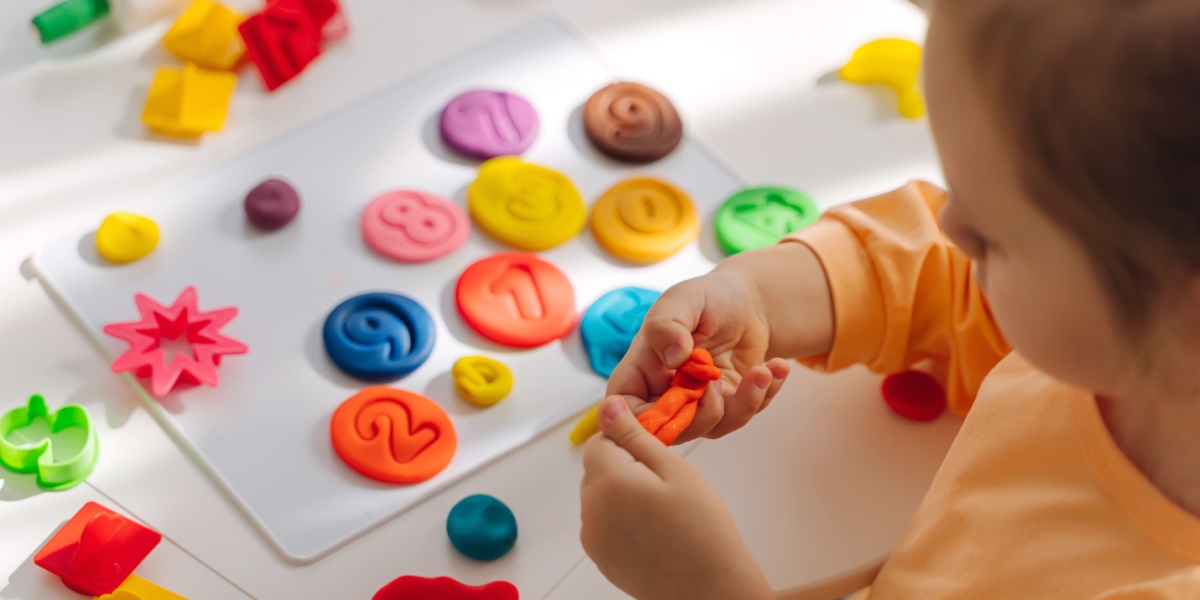
Tactile play is all about touch and the way we experience the world through the sensory receptors in our skin and other parts of the body. This can include textures, temperature, pressure, and vibration.
Through tactile play, kids develop fine motor skills by grabbing, pinching, and otherwise manipulating materials. They also pick up new vocabulary to describe what they’re experiencing: soft, rough, squishy, sticky, etc. Tactile play helps develop emotional regulation, as many calming and soothing behaviors are tactile, such as stroking soft fur or receiving a hug.
Examples of Tactile Play:
- Running fingers through sand, rice, or beans
- Splashing in warm or cold water
- Squishing and building with playdough
Visual Play
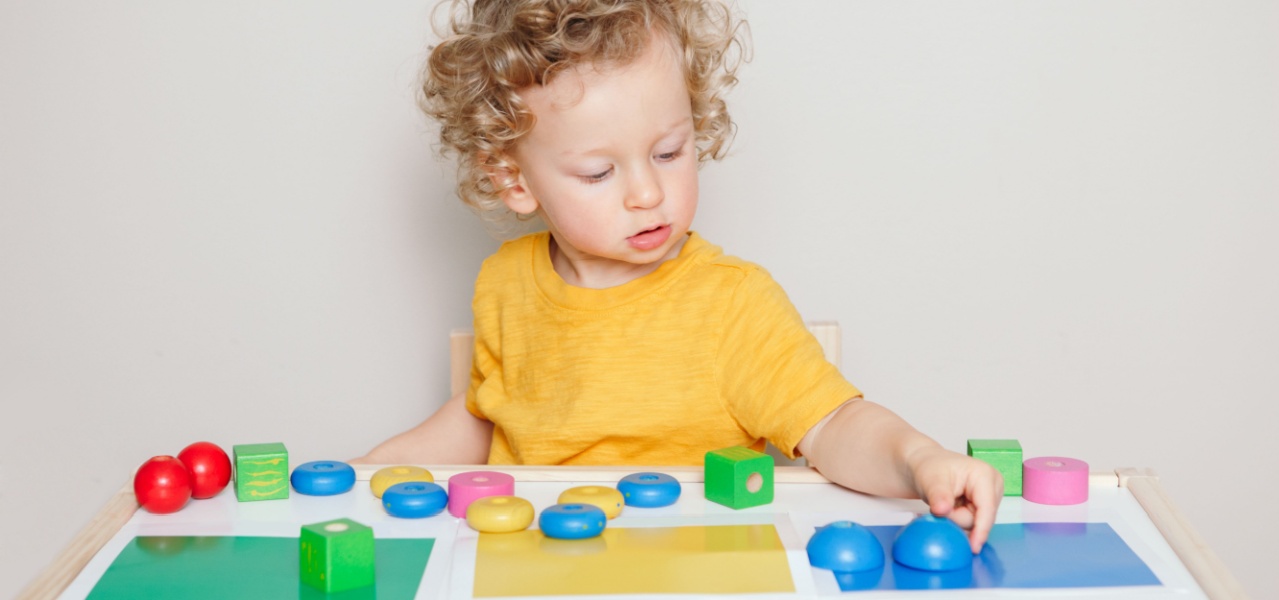
Visual sensory play uses the eyes, or child’s sense of sight. In visual play activities, children explore colors and patterns, shapes, visual tracking and focus, and spatial awareness. Visual play can help strengthening how children process and respond to what they see, which supports their ability to read, write, solve problems, and more.
Examples of Visual Play:
- Watching mobiles, ceiling fans, bubbles, or pinwheels
- Sorting objects by size, shape, or color
- Solving “hidden picture” puzzles
Auditory Play
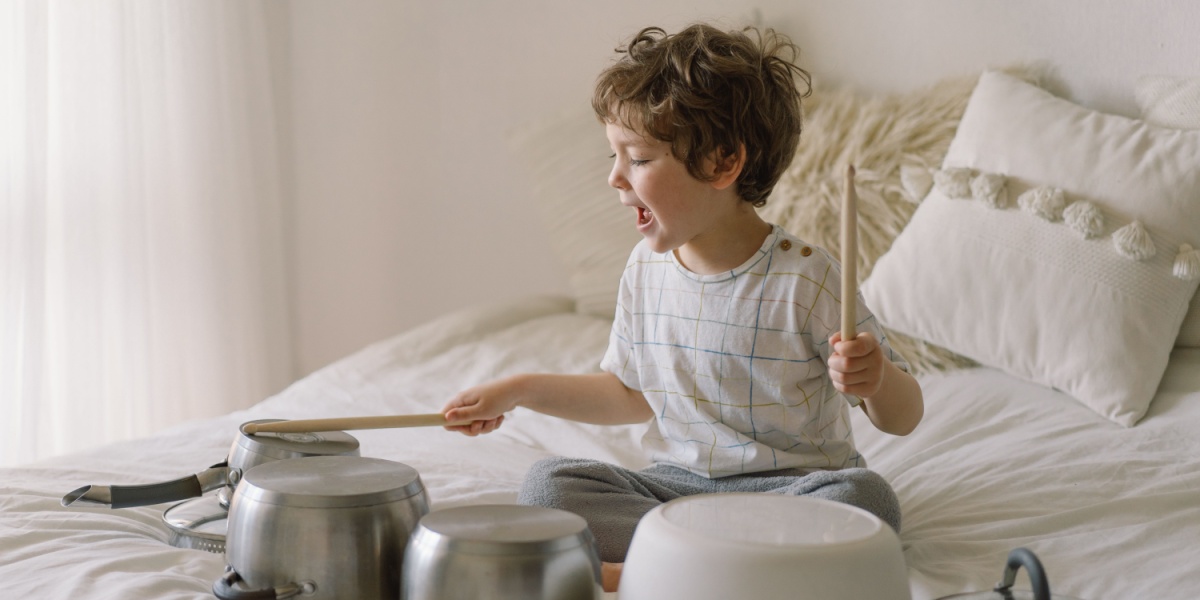
Auditory play explores the sense of hearing using our ears. It’s a vital form of play for speech and language development—the ability to discern various sounds allows children to begin imitating them. Auditory play also helps kids learn to read, develop a sense of volume, pitch, and rhythm, and become active listeners.
Examples of Visual Play:
- Making noise by banging objects together
- Singing along or playing instruments while listening to music
- Listening to and identifying nature sounds
Olfactory Play
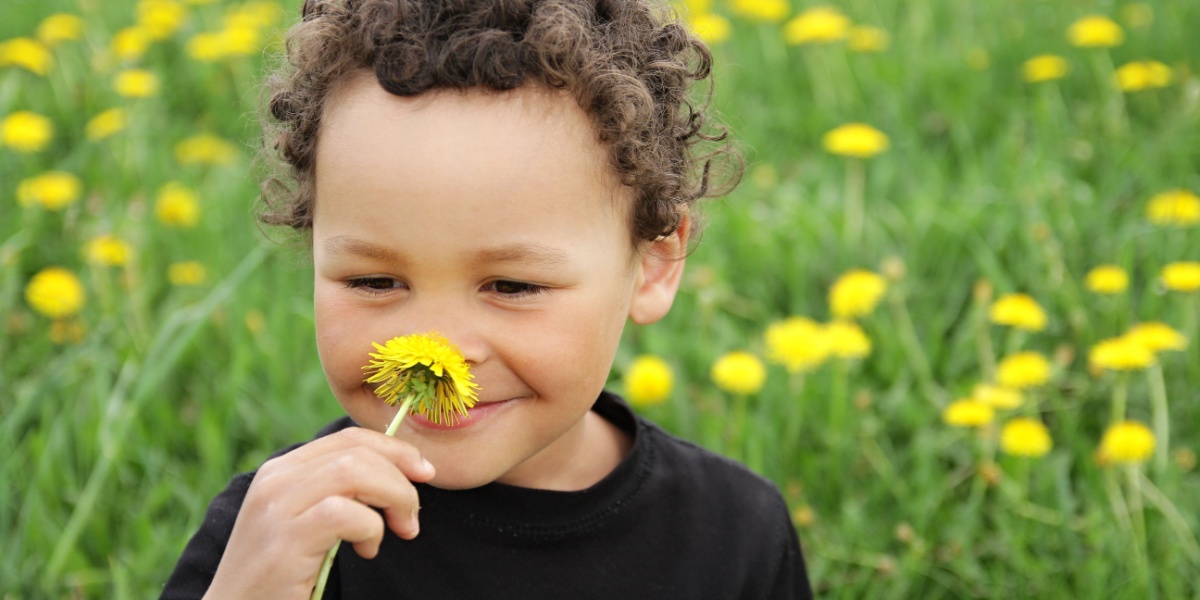
In olfactory play, kids use their nose and sense of smell. Research shows that smells and memory have a strong link, so strengthening our olfactory sense may also improve our memories.
Smell and taste are closely related as well, and our noses can help us know when something might not be safe (for example, the bad smell of rotting food tells us we shouldn’t eat it). Some fragrances can also have a soothing effect, improving emotional regulation.
Examples of Olfactory Play:
- Using scented markers or playdough
- Smelling the flowers and plants in a garden
- Playing “guess-the-scent” games
Gustatory Play
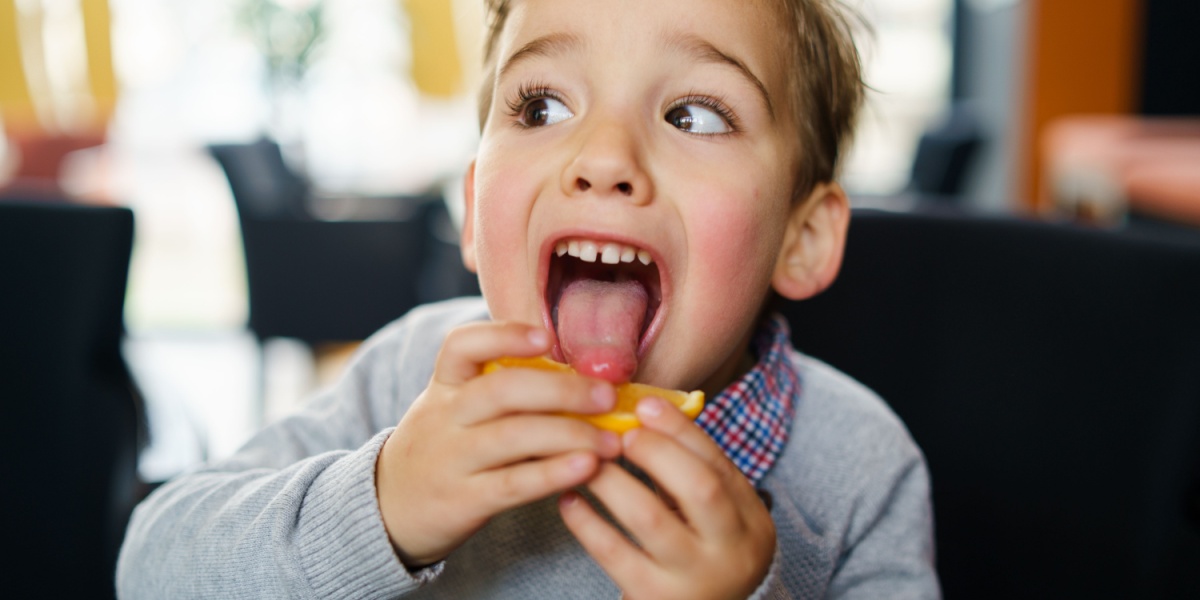
In gustatory play (also called taste exploration), kids explore various tastes using the receptors on their tongue. They learn to recognize flavors like sweet, sour, salty, bitter, and umami (savory or meaty).
Young children who experience a wide variety of flavors through diverse foods are less likely to become picky eaters as they get older. Gustatory play helps support oral motor development too, strengthening the muscles used for chewing and swallowing.
Note: In this type of play, it’s especially important to supervise children to ensure they are only putting safe items into their mouths.
Examples of Gustatory Play:
- Taste-testing games
- Trying new foods
- Experiencing unique textures (i.e. the smooth but stretchy texture of mochi)
Vestibular and Proprioceptive Play
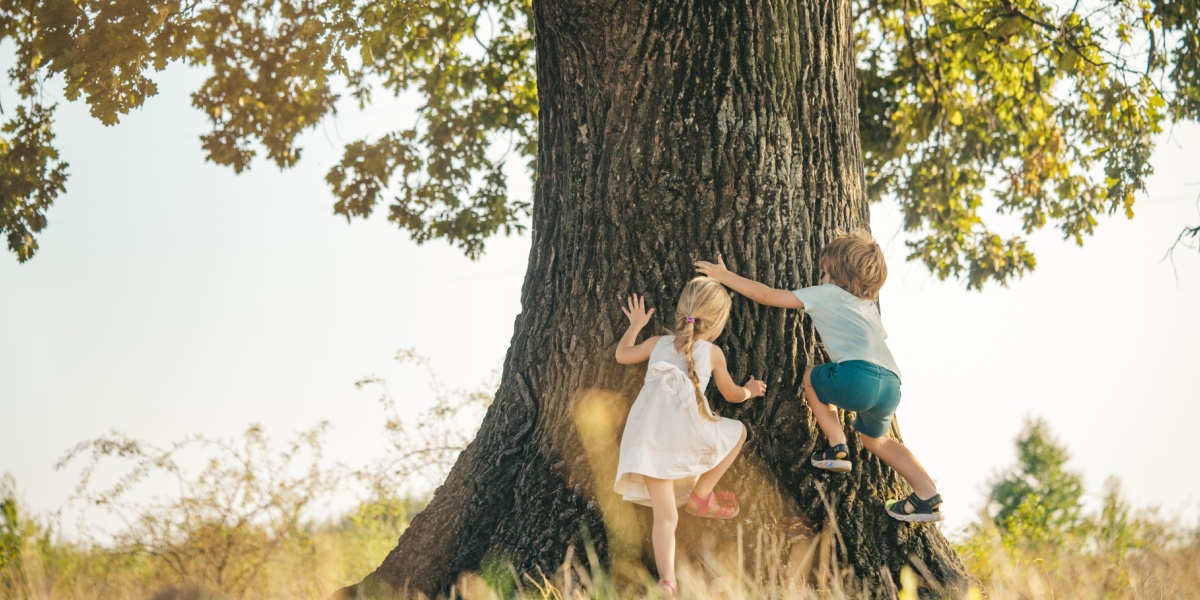
These two types of sensory play are often overlooked, but they’re incredibly important. Vestibular play refers to balance and movement. It’s what enables us to learn to walk, ride a bicycle, or walk up or down stairs without falling over. Proprioceptive play refers to body awareness–where our body is in relation to the space around us, how heavy or light something is to lift, or the pressure we feel from outside objects (i.e. the strength of a hug).
Examples of Olfactory Play:
- Climbing trees
- Pulling a wagon up a hill
- Walking along a narrow log
Learn About Other Types of Play
Sensory Play Frequently Asked Questions (FAQ)
What is the purpose of sensory play?
Sensory play stimulates brain development, develops fine and gross motor skills, supports language development and communication skills, promotes emotional regulation, and encourages creativity and imagination. When children encounter new sensory experiences on a regular basis, they develop an awareness of their bodies as well as of the world around them.
What age is best for sensory play?
Sensory play is most important in early childhood (birth to age 6), but children of any age can benefit from it. It can be especially helpful for older children with neurological differences, like ADHD, autism, or sensory processing challenges.
How does sensory play help learning and development?
Research shows that sensory play has a direct effect on the development of the neural pathways in our brains. During the early childhood years, when our brains grow faster than at any other time in our lives, sensory experiences build and establish the cognitive pathways that enable us to learn, think critically, and communicate with others. It also promotes body and spatial awareness, balance, and hand-eye coordination.
What materials are best for sensory bins?
While you can use almost anything in sensory bins, be sure to choose those that are age-appropriate and safe. For very small children, watch for potential choking hazards since they tend to put everything in their mouths. Observe your child closely for any potential allergic reactions, and clean and sanitize materials regularly, especially if they’re used by multiple children. Common sensory bin items include uncooked rice and beans, popcorn kernels, sand, soil, flour, water beads, water and ice, rocks and pebbles, pompoms, fabrics and paper, scented items, and small toys and tools.
Can I do sensory play with children who have sensory sensitivities?
Yes, sensory play can help them develop a stronger tolerance for uncomfortable sensory experiences and learn to manage their emotional responses to sensory input. The key is to be flexible and responsive, limiting stimuli and respecting the child’s preferences and perceptions. If you have concerns, talk with your child’s pediatrician or health care expert.
Is sensory play appropriate for older children?
Yes. As kids get older, sensory play is especially helpful for both language development and emotional regulation. Using their senses helps kids develop a wider vocabulary as they look for words to describe their experiences. Plus, understanding how different sensory activities make them feel allows kids to narrow down the ones that cause them stress or provide a sense of calm. Sensory play also makes older children more observant of the world around them, expanding their horizons and increasing their tolerance for a variety of different ways to live.
Legal disclaimer: Any information, materials, or links to third-party resources are provided for informational purposes only. We are not affiliated with and do not sponsor/endorse these third parties and bear no responsibility for the accuracy of content on any external site. All information provided in this article is current as of May 2025.
Comparing ABCmouse to ABCmouse 2
ABCmouse 2 is not just a visual refresh—it’s a total reimagination of the learning experience. It’s the next generation of early learning, built on trusted foundations of ABCmouse and redesigned for today’s kids.
This article provides a side-by-side comparison of ABCmouse vs. ABCmouse 2, highlighting the differences in curriculum, user experience, accessibility, and content updates to highlight what truly sets ABCmouse 2 apart.
The best news for current ABCmouse subscribers: Your ABCmouse subscription includes Premium Access to ABCmouse 2 at no extra charge. This 2-for-1 bonus is good for as long as your ABCmouse subscription is active. Learn more here.
Table of Contents – Jump to Each Section
- Learning Through Unstructured Play
- App Appearance and Navigation
- Subscription Options
- Learning Paths
- Number of Activities
- How You Can Access the Programs
- ABCmouse 2 vs. ABCmouse: Feature Comparison
Learning Through Unstructured Play
ABCmouse 2 includes updated versions of kid-favorites from the original app, giving classic activities a fresh and exciting upgrade. Building on that fun, it also introduces My World—a brand-new area with five engaging zones that encourage kids to explore, play, and learn in new ways.
- Bot Beats (Coding):
Kids program a robot to dance, introducing them to early coding concepts in a fun and interactive way.
- Pet Town (Narrative Play):
An upgraded version of Pet Park, this zone inspires creativity and storytelling with more dynamic options.
- Safari (Life Science):
Go on an African safari to spark curiosity and teach life science through immersive exploration.
- Hamster Maze (Spatial Logic):
Solve puzzles and care for a pet hamster to develop spatial reasoning and problem-solving skills.
- Aquarium (Social-Emotional Learning):
Feed and care for fish to build empathy and emotional awareness.
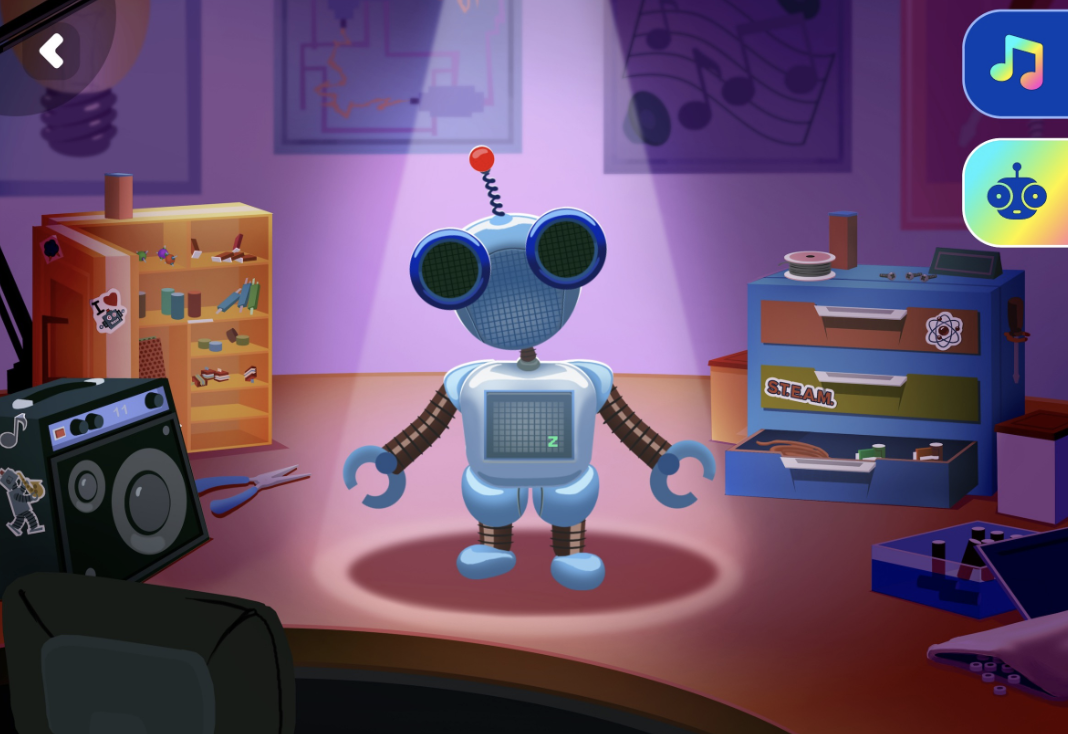
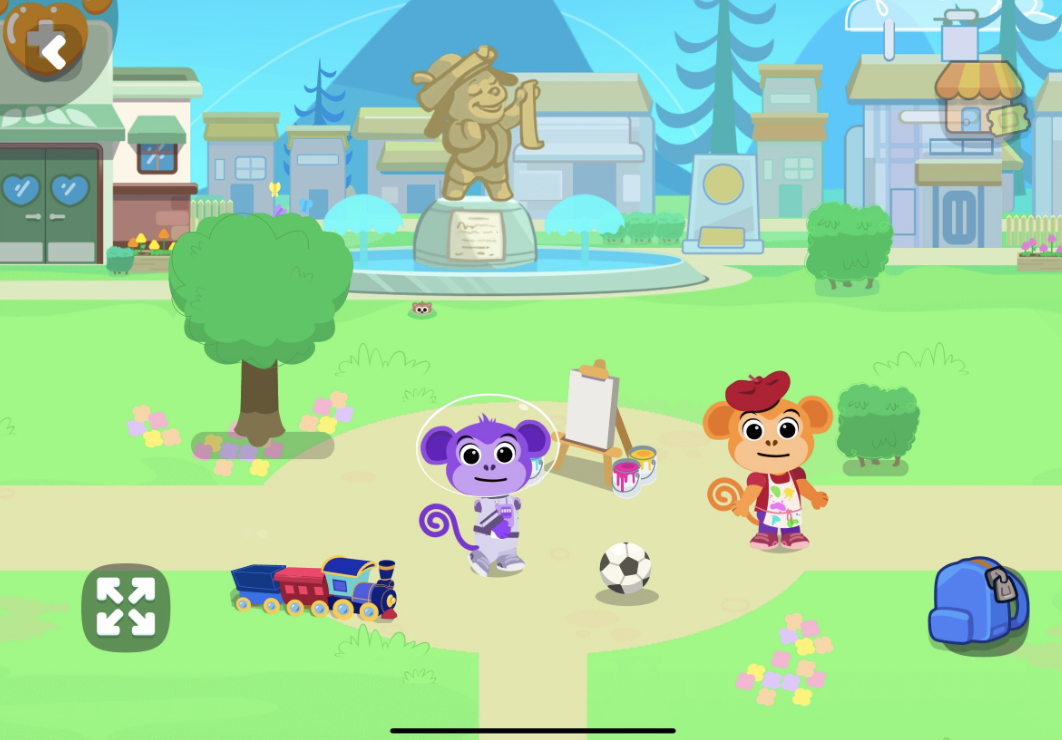
In the original ABCmouse app, kids can enjoy the following activities—found in the My Avatar section:
- My Aquarium – Feed and care for fish to encourage empathy and responsibility.
- My Hamster – Solve mazes and play with a pet hamster to build spatial and problem-solving skills.
- Pet Park – A playful space for kids to interact with virtual pets.
- My Room – Decorate a personalized room with furniture and accessories.
App Appearance and Navigation
ABCmouse 2 – Engaging Mobile User Interface: The bright and inviting ABCmouse 2 home screen was designed with usability for young children in mind. And kids who are used to working with apps will find it intuitive to explore this colorful and engaging world of education.
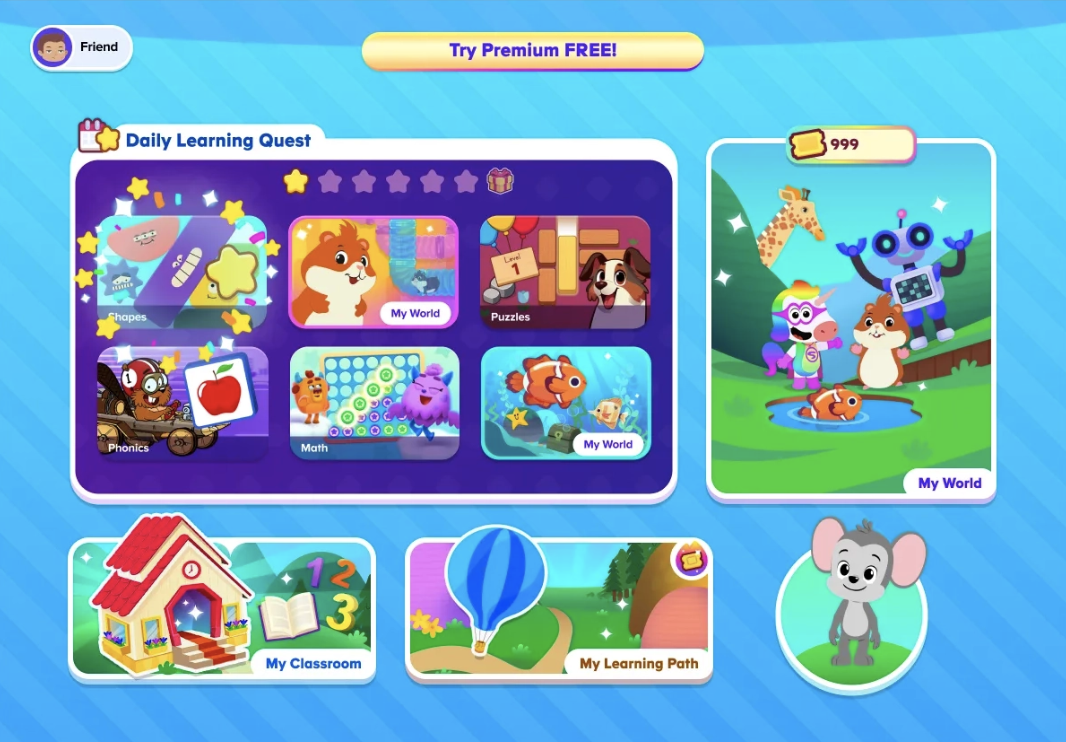
ABCmouse – Lots of Options to Click On: How you navigate the original ABCmouse will depend somewhat on which version (mobile, desktop, web) you are using, but the user interface on all will be more filled with options, which is exciting to some and more overwhelming to others. Navigation is more click/tap based than the swiping used to access content on the ABCmouse 2 app.
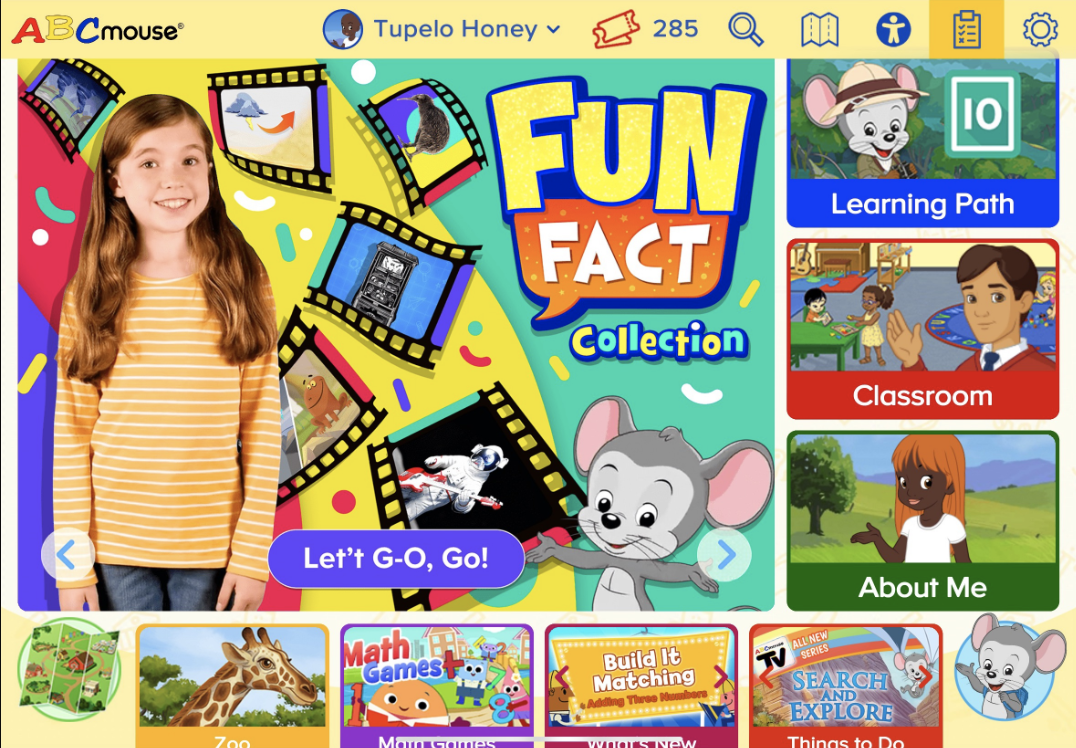
Subscription Options
ABCmouse – Lots of Options to Click On: How you navigate the original ABCmouse will depend somewhat on which version (mobile, desktop, web) you are using, but the user interface on all will be more filled with options, which is exciting to some and more overwhelming to others. Navigation is more click/tap based than the swiping used to access content on the ABCmouse 2 app.
ABCmouse – Annual and Monthly Subscription Options: Monthly plans with the First Week Free (Apple) or First Month Free (Google) are available, in addition to discounted annual plans, which offer much greater longterm savings.
Learning Path(s)
ABCmouse 2- Separate Math and Reading Learning Paths: The single Learning Path offered in our original ABCmouse program has been split into separate paths for two reasons. One: It allows children to focus on one area at a time, whether that’s because they love to read most or because they need to work on math skills more frequently. Two: It allows parents and caregivers to set each Learning Path at a different grade level if that’s more personalized for their child. Many children are more proficient with either math or reading skills and this lets them work on activities that are “just right” for each skill.
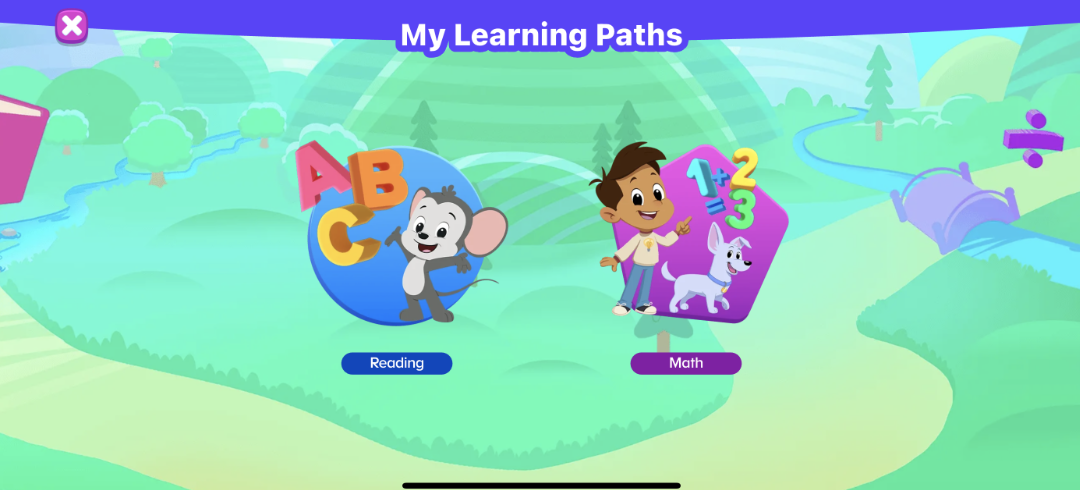
ABCmouse – One Learning Path: For some children, who have equal skills in math and reading and no favorite subject, having a mix of subject types on the Learning Path offers greater variety and engagement. If children do want to focus only on math or reading during any gameplay session they can do so outside of the Learning Path.
Number of Activities
ABCmouse 2 – 5,000+ Learning Activities, and Growing: Already, the new ABCmouse 2 app offers a comprehensive early learning curriculum featuring more than 5,000 activities, with more added all the time. In the ABCmouse Classroom section, you’ll see the exact number of activities available for each subject and game type. ABCmouse 2 activities encompass Reading, Math, Social Studies, Arts and Colors, and Music.
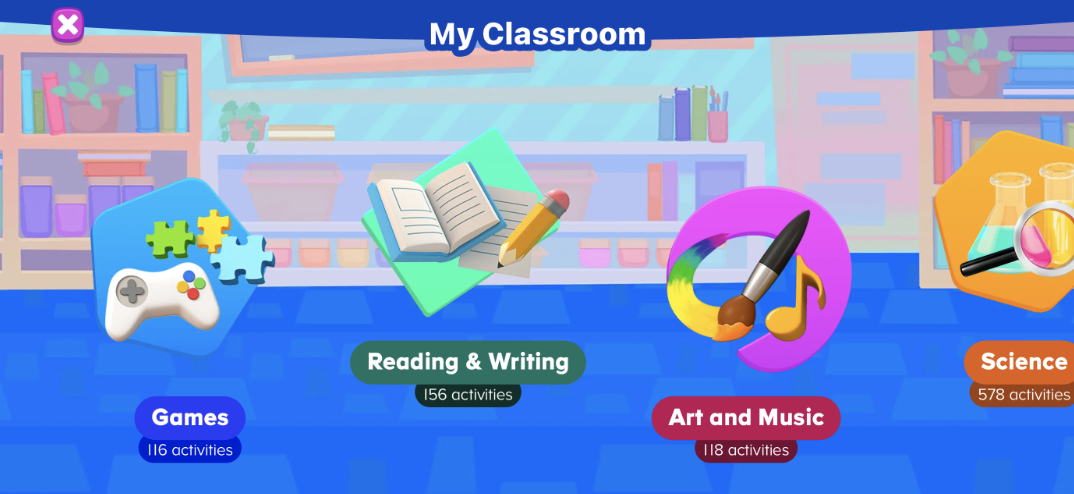
ABCmouse – 10,000+ Learning Activities: Right now, ABCmouse does have more learning activities than the ABCmouse 2 app, but the activities on ABCmouse 2 are all-new and optimized for the app, and new activities are being added to the ABCmouse 2 app rather than the original ABCmouse app. There’s more than enough in each app to satisfy an eager learner for a long long time. ABCmouse activities encompass Reading, Math, Social Studies, Arts and Colors, and Music.
How You Can Access the Programs
ABCmouse 2 – Mobile Only (Apple, Google): The new ABCmouse 2 has been built from the ground up as a mobile app, using the latest technology and techniques for an incredibly fast and fully optimized mobile experience on tablets and phones. The app is available in Apple’s iTunes store or the Google Play Store (Amazon Kindle Fire is not yet supported). Desktop app and browser versions of the program are not currently available.
ABCmouse – All Platforms: Our original ABCmouse program is available on mobile devices, in addition to a desktop app and via a web browser at www.ABCmouse.com.
ABCmouse 2 vs ABCmouse: Feature Comparison
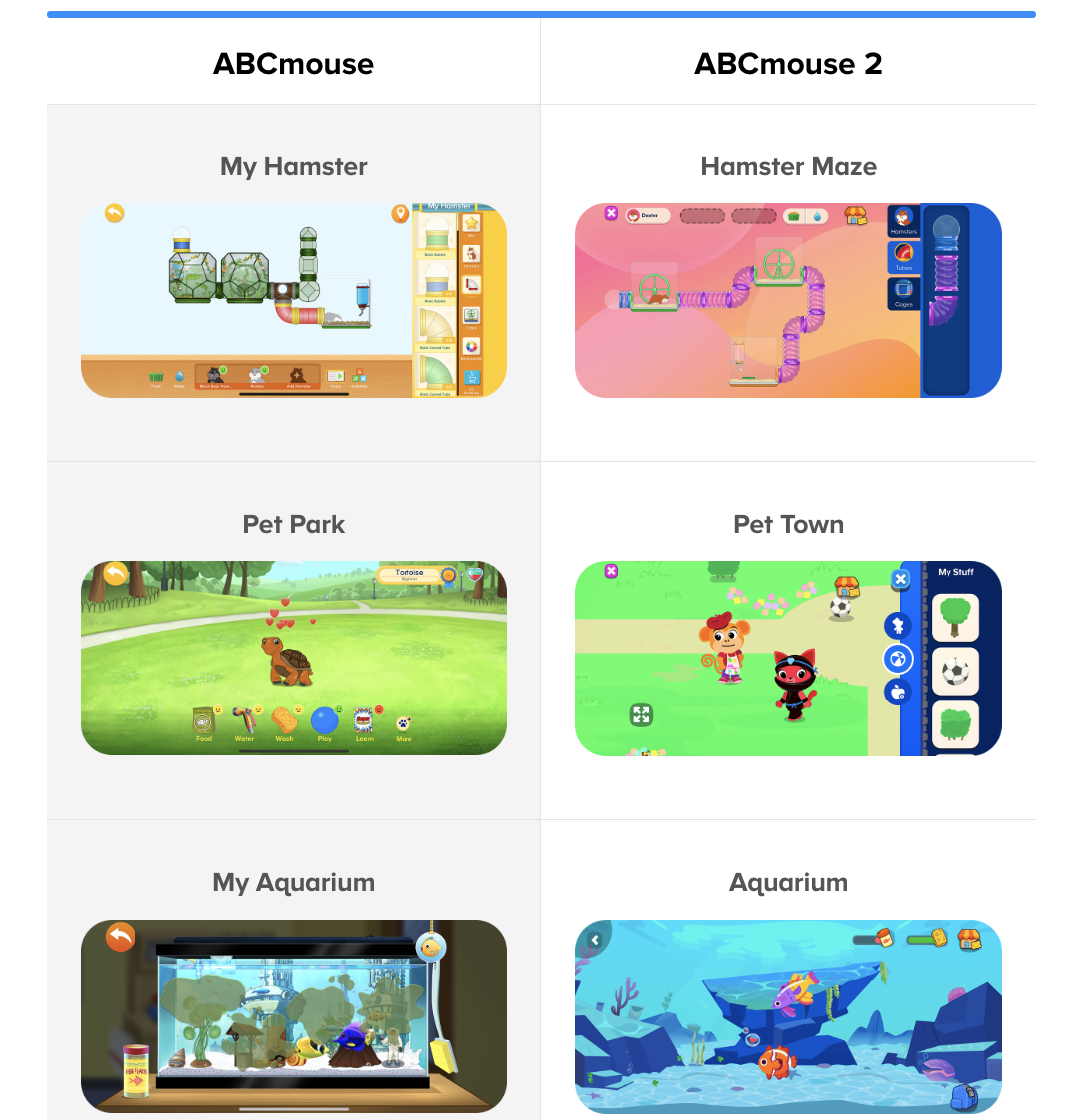
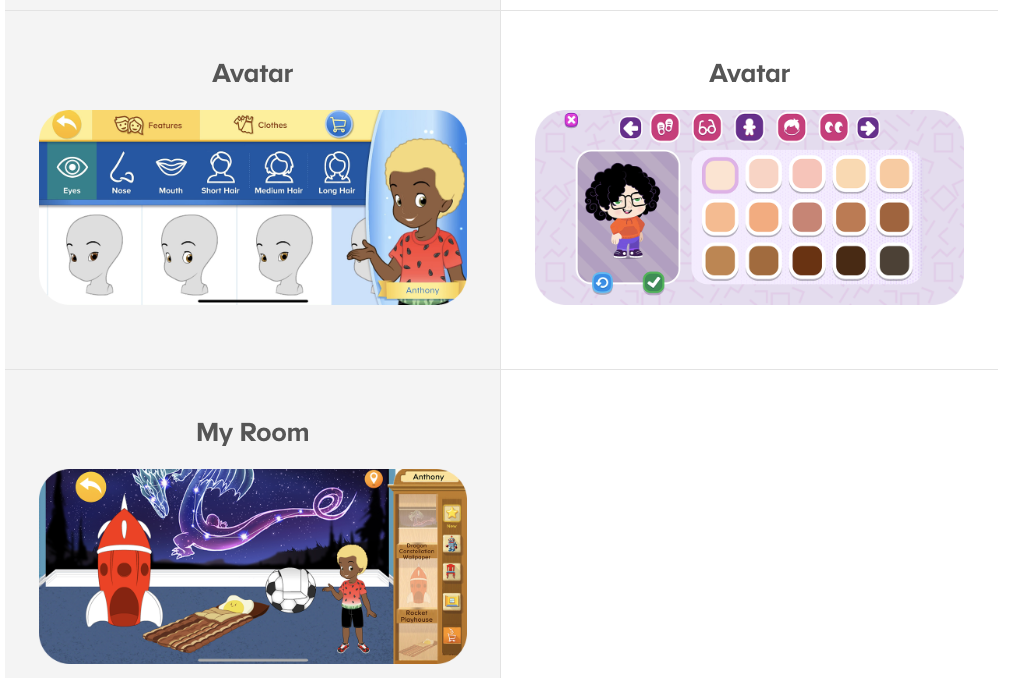
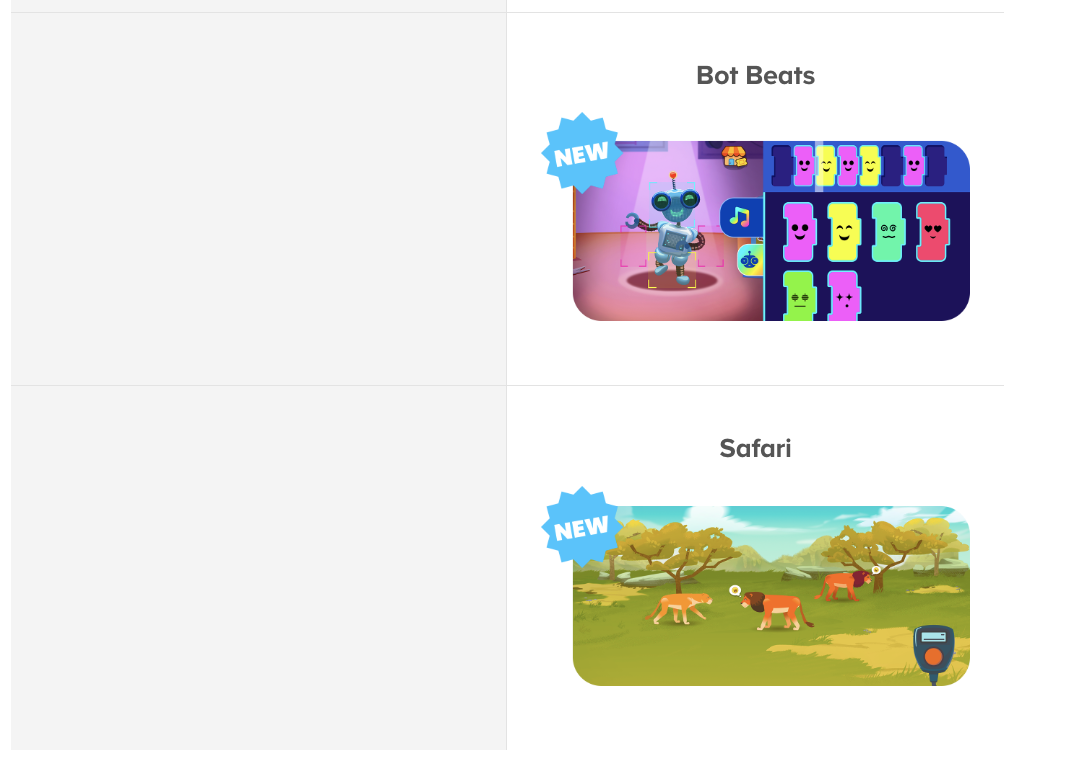
App Appearance and Navigation
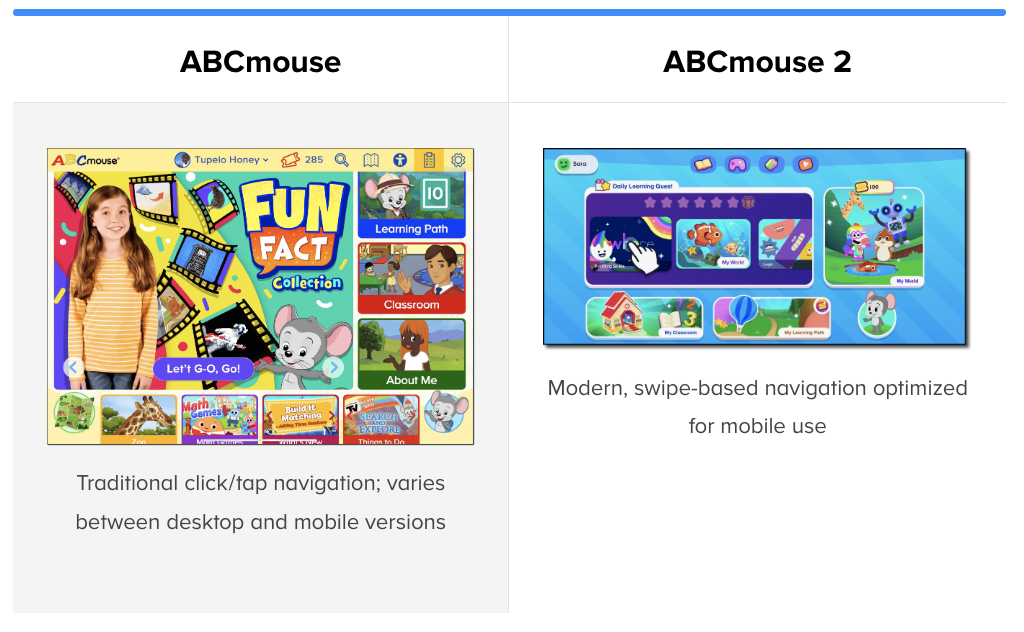
Subscription Options
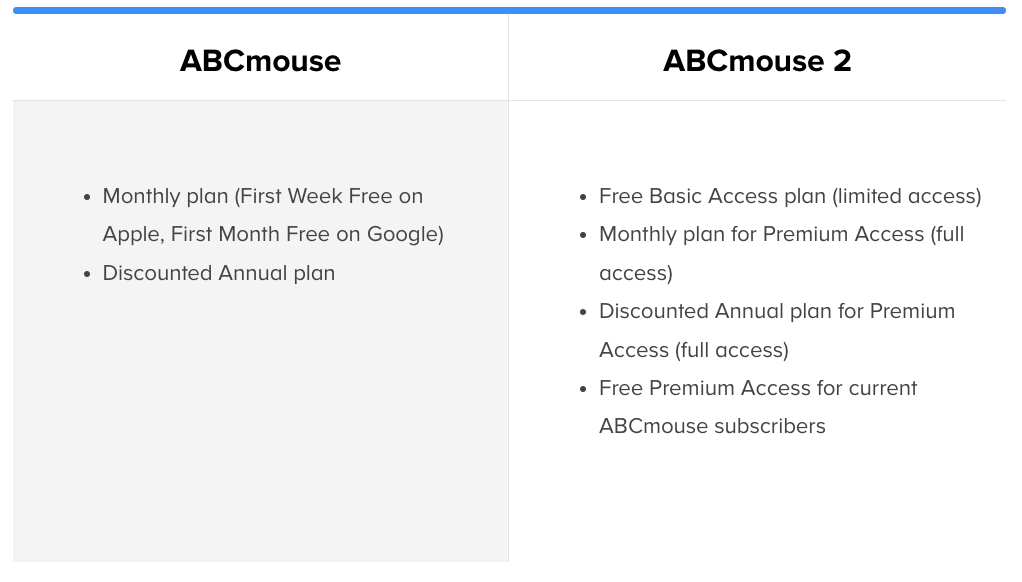
Number of Activities

How You Can Access the Program

Data Migration

Account Setup
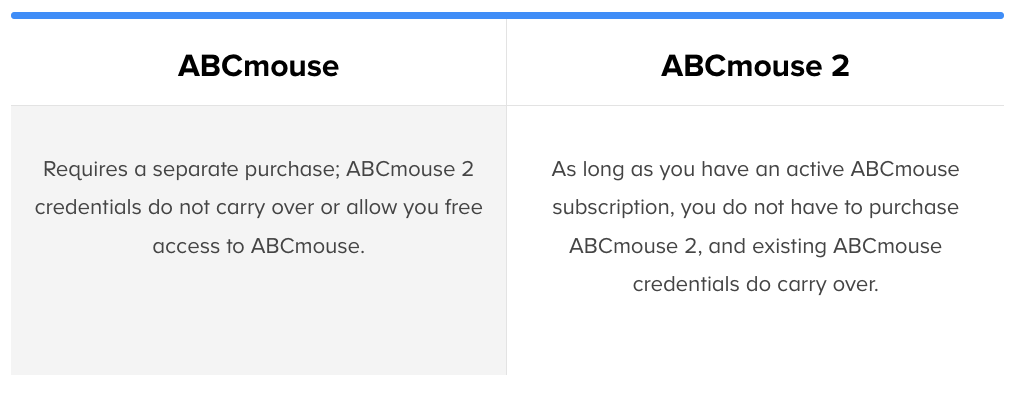


85+ Interesting New York Facts Kids Will Love to Learn
(Free Printable List)
Share

New York City is rightfully famous worldwide, but it’s not the only fascinating place in the state of New York! From the Great Lakes to the Adirondacks, Niagara Falls to the Baseball Hall of Fame, this state is full of places to explore. It also has a rich history dating back thousands of years, representing people from around the globe. Discover more with these New York facts for kids!
Share this information with your child or classroom using our free printable bundle, which includes all the New York facts found here plus maps, illustrations, and more.

NEW YORK STATE FACTS
State Nickname:
Empire State
Date of Statehood:
July 26, 1788
State Capital:
Albany
State Animal:
Beaver
State Motto:
Excelsior (Literal translation: “Higher”)
State Beverage:
Milk
State Insect:
Nine-spotted Ladybug
State Reptile:
Snapping Turtle

State Bird: Eastern Bluebird

State Flower: Rose

State Tree: Sugar Maple

State Flag:
Flag of New York
?
DID YOU KNOW?
The Great Seal of New York was adopted in 1778. The seal appears on a field of deep blue on the official state flag, which wasn’t adopted until 1901.

FUN FACTS ABOUT NEW YORK
Fun Fact #1:
New York is #30 on the list of U.S. states by size, at 47,224 square miles. It’s the fourth most populous state, with nearly 20 million residents.
Fun Fact #2:
Niagara Falls lies between Lake Ontario and Lake Erie, bordering both New York and Ontario, Canada. 757,500 gallons of water go over the falls every second!

New York State Capitol building in Albany, New York
Fun Fact #3:
The state capital of New York is not New York City—it’s Albany, located in upstate New York. Other major cities include Yonkers, Rochester, Syracuse, and New Rochelle.

Fun Fact #4:
It’s illegal to walk around New York City with an ice cream cone in your pocket on Sundays.

Lake Placid village sign
Fun Fact #5:
Lake Placid is a village in New York’s Adirondack Mountains that has hosted the Winter Olympics twice, in 1932 and 1980. It’s one of only three places in the world to have done so.

Stone building, lower Manhattan, New York
Fun Fact #6:
In 1664, the English took the area called New Amsterdam from the Dutch and renamed it New York to honor the Duke of York, who was the brother of King Charles II of England.

Letchworth State Park
Fun Fact #7:
Letchworth State Park is called the “Grand Canyon of the East.” The Genesee River rushes through a deep gorge, crashing over three big waterfalls between tall cliffs, some as high as 600 feet.

Recreation of the moon landing and lunar module, Garden City, NY
Fun Fact #8:
New York helped send astronauts to space! The Apollo lunar module was built on Long Island, at the Grumman facility in Bethpage.

New York Stock Exchange Building
Fun Fact #9:
New York’s major industries include agriculture, technology (including video game development), financial services, entertainment, and tourism.

Sleepy Hollow, NY
Fun Fact #10:
Washington Irving’s short stories, “The Legend of Sleepy Hollow” and”Rip Van Winkle,”are both set in New York’s Hudson Valley, where Irving himself lived.

NEW YORK GEOGRAPHY FACTS
Regions:
Western NY, Finger Lakes, Southern Tier, Central NY, Mohawk Valley, Capital Region, Mid-Hudson, New York Cit, Long Island, North Country
Climate:
Humid Continental

Location:
New York is bordered by Vermont, Massachusetts, and Connecticut to the east; New Jersey and Pennsylvania to the south and west. It shares a northern border with Ontario and Quebec.

Niagara Falls
Landmarks:
Niagara Falls, Finger Lakes, Ellis Island, Fort Ticonderoga, Statue of Liberty, Times Square, Brooklyn Bridge, Central Park, Baseball Hall of Fame

Cityscape view of Central Park
Central Park:
Central Park is famous for its 843 acres of green space in the heart of New York City. Designed by Frederick Law Olmsted and Calvert Vaux, the park’s first section opened in 1858.

A scenic shot of the Adirondacks
Mountain Ranges:
Adirondacks and Catskills (part of the Appalachian Mountains)

Long Island
Islands:
New York is best known for the islands of Manhattan, Staten Island, and parts of Long Island. However, the state includes more than 1,000 islands.

Canandaigua Lake in the Finger Lakes region of New York
Finger Lakes:
The Finger Lakes are a group of 11 long, narrow, and deep lakes in central New York, formed by glacial carving during the last Ice Age, which shaped the landscape into their distinctive finger-like shapes.

Erie Marina Basin and Buffalo skyline
Great Lakes:
New York borders Lake Erie and Lake Ontario

Image from the highest point in New York State
Highest Point:
Mount Marcy is the highest point in New York state at 5,344 feet high.

Brooklyn Bridge over the Hudson River
Major Rivers:
Hudson River (longest), Susquehanna River, Mohawk River, Genessee, Raquette

NEW YORK WILDLIFE & NATURE FACTS

Whitetail Buck Deer Stag
Common Mammals:
White-tailed deer, eastern gray squirrel, raccoon, red fox, eastern cottontail rabbit, beaver, striped skunk, black bear, eastern chipmunk

Blue Jay
Common Birds:
American robin, northern cardinal, mourning dove, blue jay, black-capped chickadee, house sparrow, red-tailed hawk, Canada goose, tufted titmouse
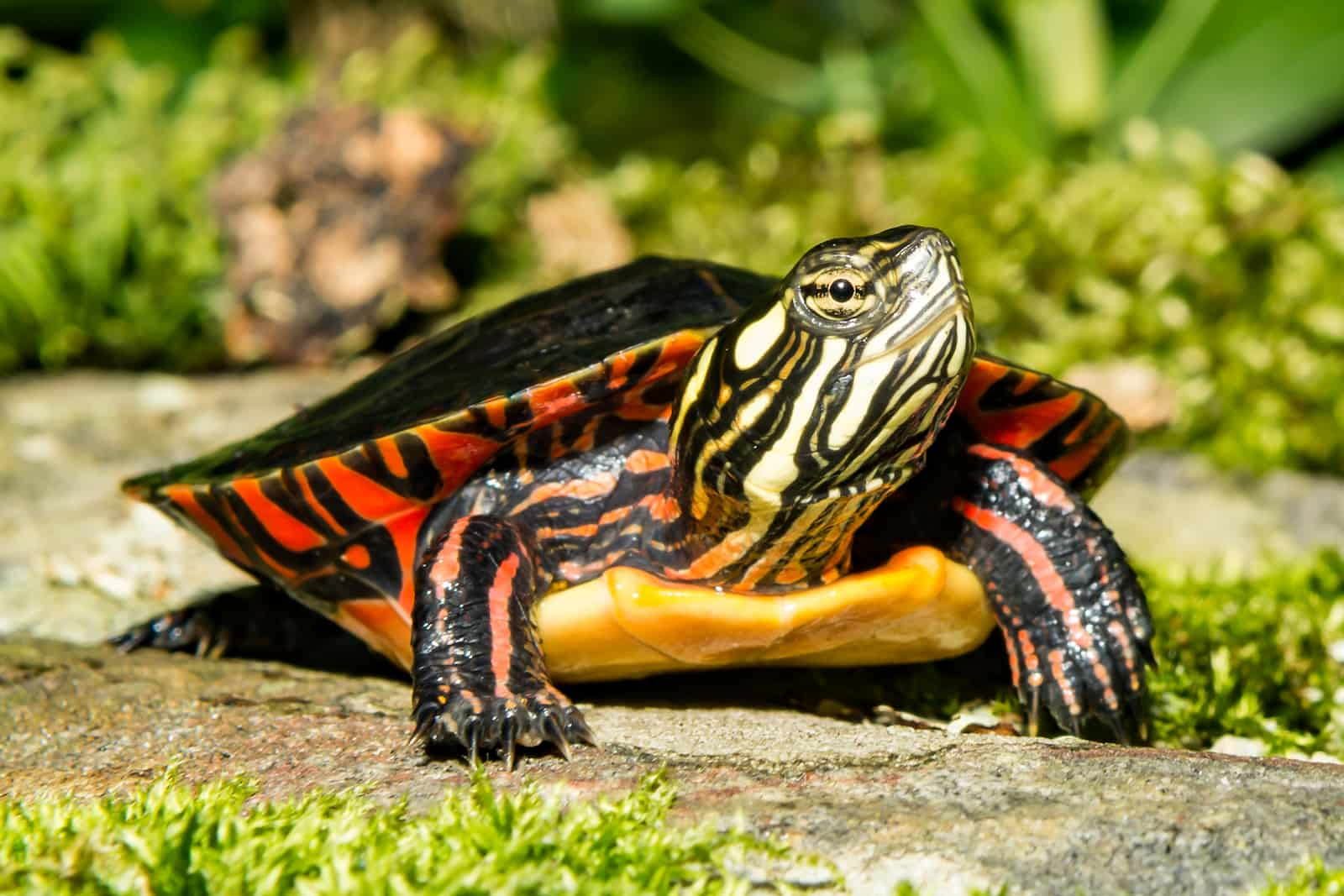
Eastern Painted Turtle
Common Reptiles and Amphibians:
Eastern painted turtle, snapping turtle, eastern rat snake, northern watersnake, eastern box turtle, American bullfrog, spring peeper, eastern newt, northern leopard frog, spotted salamander
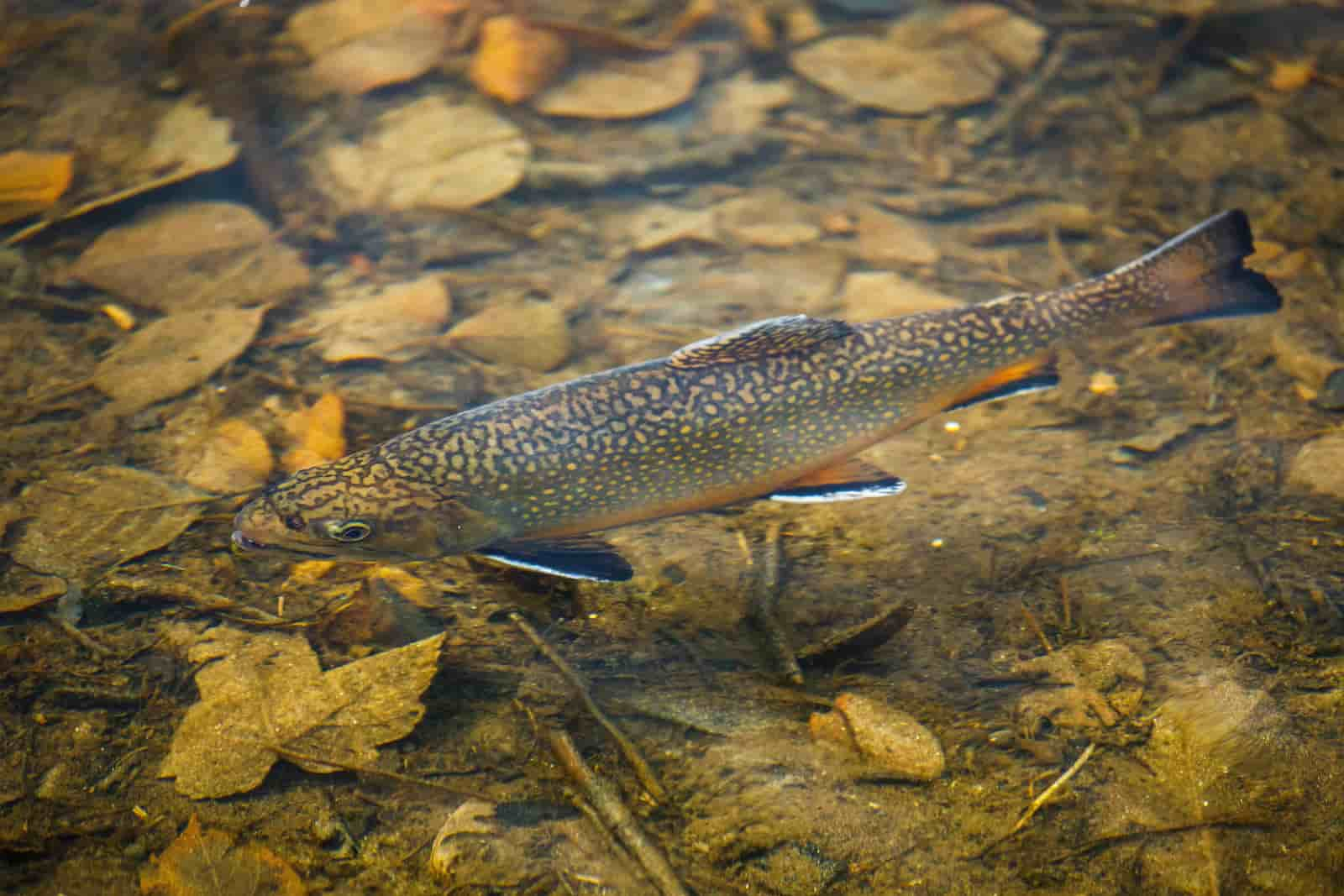
Brook Trout
Common Fish:
New York has freshwater and saltwater fish, including brook trout, striped bass, perch, salmon, and cod.

Tulip Poplar Tree
Common Trees:
Sugar maple, red oak, eastern white pine, American beech, tulip poplar, white ash, and northern red cedar

Indian Paintbrush
Common Plants and Flowers:
Purple coneflower, goldenrod, trillium, joe-pye weed, black-eyed Susan, milkweed, bloodroot, New England aster, wild bergamot, blue flag iris

Karner Blue Butterfly
Selected Endangered Species:
Karner blue butterfly, Atlantic sturgeon, eastern tiger salamander, peregrine falcon, piping plover, short-eared owl, gray wolf, cougar

Asian Longhorn beetle
Selected Invasive Species:
Selected Invasive Species: Emerald ash borer, Asian long-horned beetle, spotted lanternfly, hydrilla, sea lamprey, mitten crab, peppermint shrimp
?
DID YOU KNOW?
The Eastern hellbender, one of the largest salamanders in North America, lives in the clean, fast-flowing streams in New York’s Catskills and Adirondacks but is very rare and elusive.

NEW YORK HISTORY FACTS

Arrowheads found in East Texas
First Inhabitants:
Indigenous people have lived in what is now New York for at least 13,000 years. They moved from place to place but often stayed near places like Lake Champlain, the Hudson River Valley, and Oneida Lake.

National Museum of the Native American in New York
Federally Recognized Tribes:
There are eight federally recognized Native American tribes in New York today: Cayuga Nation, Oneida Nation, Onondaga Nation, Seneca Nation of Indians, Shinnecock Indian Nation, St. Regis Mohawk Tribe, Tonawanda Band of Seneca, and Tuscarora Nation.
Iroquois Confederacy:
The Iroquois Confederacy, also known as the Haudenosaunee, was a group of Native American nations that joined together to support each other and live in peace. They lived in what is now the upstate New York region. It included five nations: the Mohawk, Oneida, Onondaga, Cayuga, and Seneca; later, the Tuscarora joined too. They made decisions using a council where each nation had a voice, and their system of government inspired parts of the U.S. Constitution.

Sculpture of Giovanni da Verrazano in Battery Park
First European Visitors:
In 1524, an Italian explorer named Giovanni da Verrazano became the first European to explore the East Coast of America when he sailed into what is now New York Bay. Today, the Verrazano-Narrows Bridge in New York is named after him to remember his journey.

Henry Hudson Plaque
Early Explorers:
Henry Hudson explored the Hudson River Valley as part of his unsuccessful quest to find a water route from Europe to the Far East. Samuel de Champlain mapped the upstate New York region around the Great Lakes; Lake Champlain is named for him.
New Amsterdam:
The Dutch started the colony of New Netherland in 1624, which included New York City and nearby areas, and they built a town called New Amsterdam on the southern tip of Manhattan Island. In 1626, the Dutch governor Peter Minuit “bought” Manhattan from the local Native American tribe. Because the native Manhattan people (the Lenape) had a different understanding of land ownership, conflicts soon started, eventually leading a war.
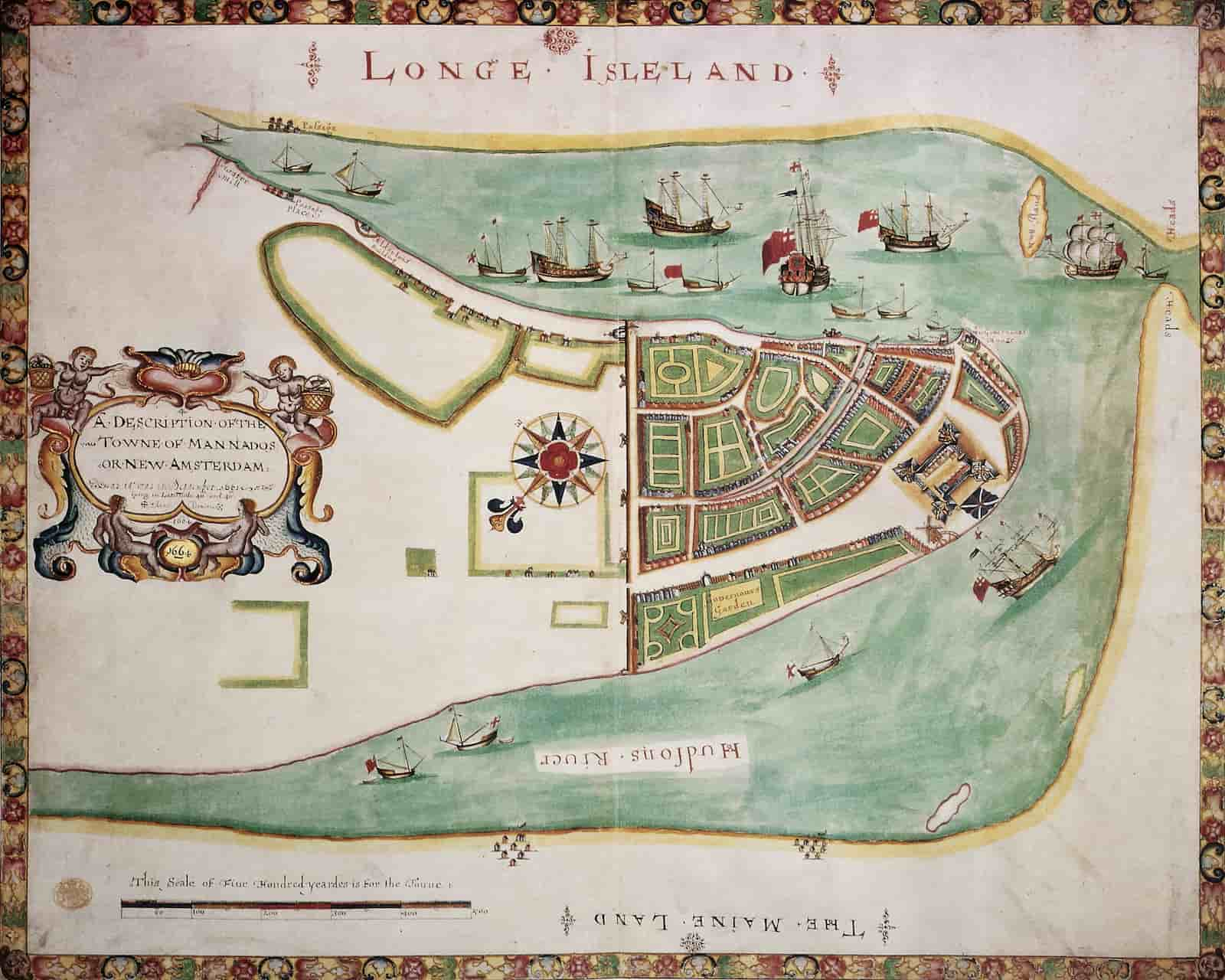
New York map, published 1664
Original Colony:
In 1664, after many years of fighting over it, the English took control of New Amsterdam from the Dutch, renaming it New York. It was one of the original 13 colonies that would later become the United States.
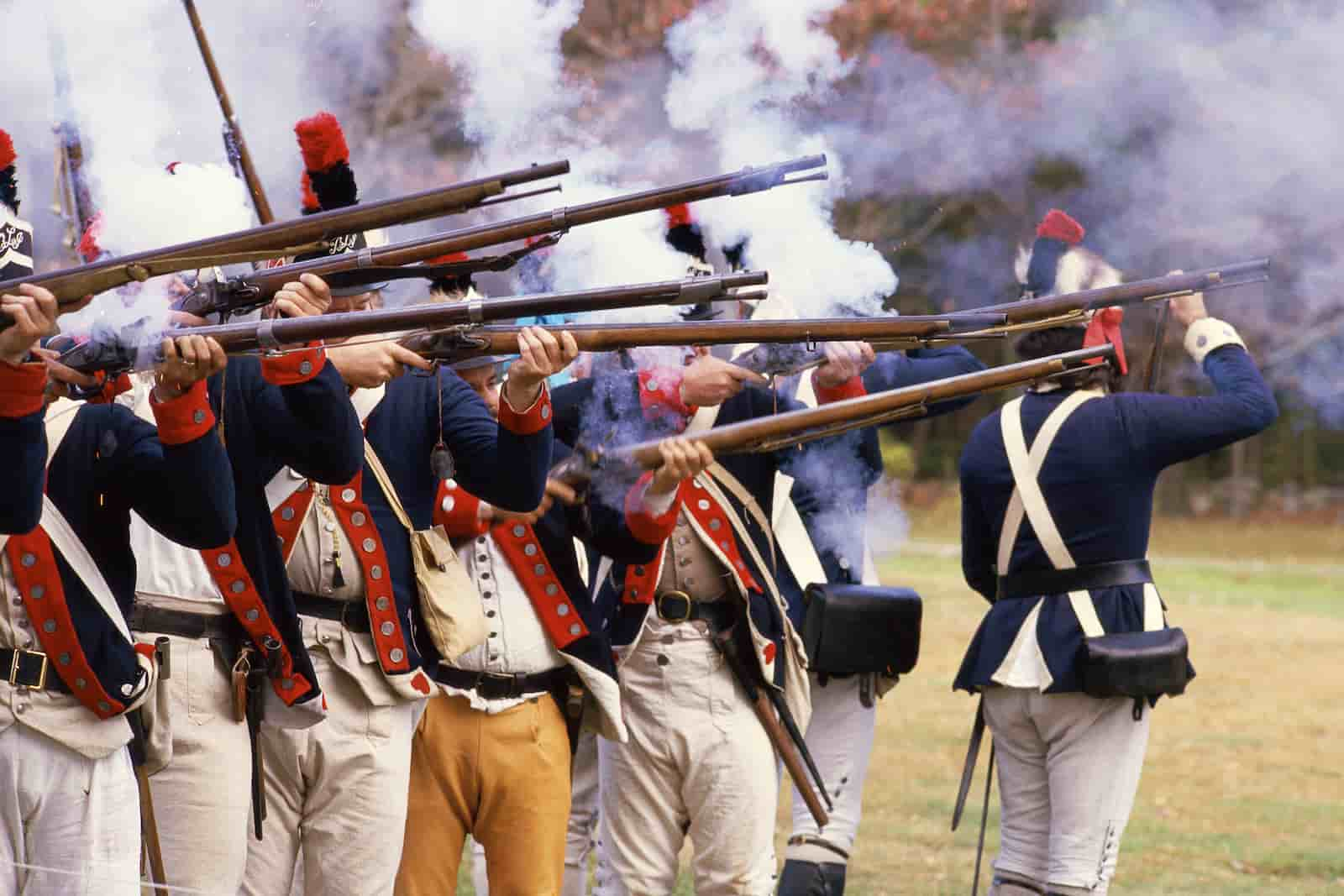
American Revolutionary War re-enactment, NY
Revolutionary History:
New York was a central site for Revolutionary War action, with many major battles taking place in the state. The Saratoga Campaign in 1777 is one of the most famous, as the American victory lifted spirits and helped convince other countries to support the young nation.
?
DID YOU KNOW?
The British captured New York City in 1776 and held it for the duration of the Revolutionary War. There were many battles in and around the city, including the Battle of Harlem Heights and the Battle of Long Island.

Statue of Liberty next to USA flag
U.S. Capital:
After the Revolutionary War ended, New York became one of the original 13 states when it ratified the U.S. Constitution in July 1788, the 11th state to do so. New York City became the first capital of the United States under the Constitution, and George Washington took his first Oath of Office there in 1789. A year later, the capital moved temporarily to Philadelphia, and then permanently to the newly built Washington, D.C. in 1800.

Bridge over the Erie Canal in Upstate New York
Erie Canal:
Built between 1817 and 1825, this 363-mile-long waterway connects the Great Lakes to the Hudson River and the Atlantic Ocean. It was only four feet deep, but had 83 locks to help boats travel up and down hills. The Erie Canal helped people and goods travel much faster and cheaper, which helped New York grow quickly.

Suffragists
Seneca Falls:
In 1848, the Seneca Falls Women’s Rights Convention became the first big meeting to specifically address women’s suffrage in the United States. Leaders like Elizabeth Cady Stanton and Lucretia Mott spoke about the need for equal rights, including the right for women to vote.

Wall Street, New York City
Wall Street:
Named after a wall built by Dutch settlers in the 1600s, Wall Street became a place to buy and sell stocks in the late 1700s. In 1817, it became home to the New York Stock Exchange, where the stock ticker was born in 1867.
?
DID YOU KNOW?
In 1917, New York was the first eastern state to change its constitution to allow women the full right to vote. Three years later, the U.S. passed the 19th Amendment to the U.S. Constitution, guaranteeing suffrage to women nationwide.

Aerial view of Ellis Island, New York City
Ellis Island:
In the late 19th and early 20th century, millions of people came to the United States from countries like Ireland, Germany, Italy, and China to escape war and hunger or to find better jobs. 12 million of these people passed through Ellis Island in New York City between 1892 and 1954, starting new lives and helping the U.S. grow and thrive.
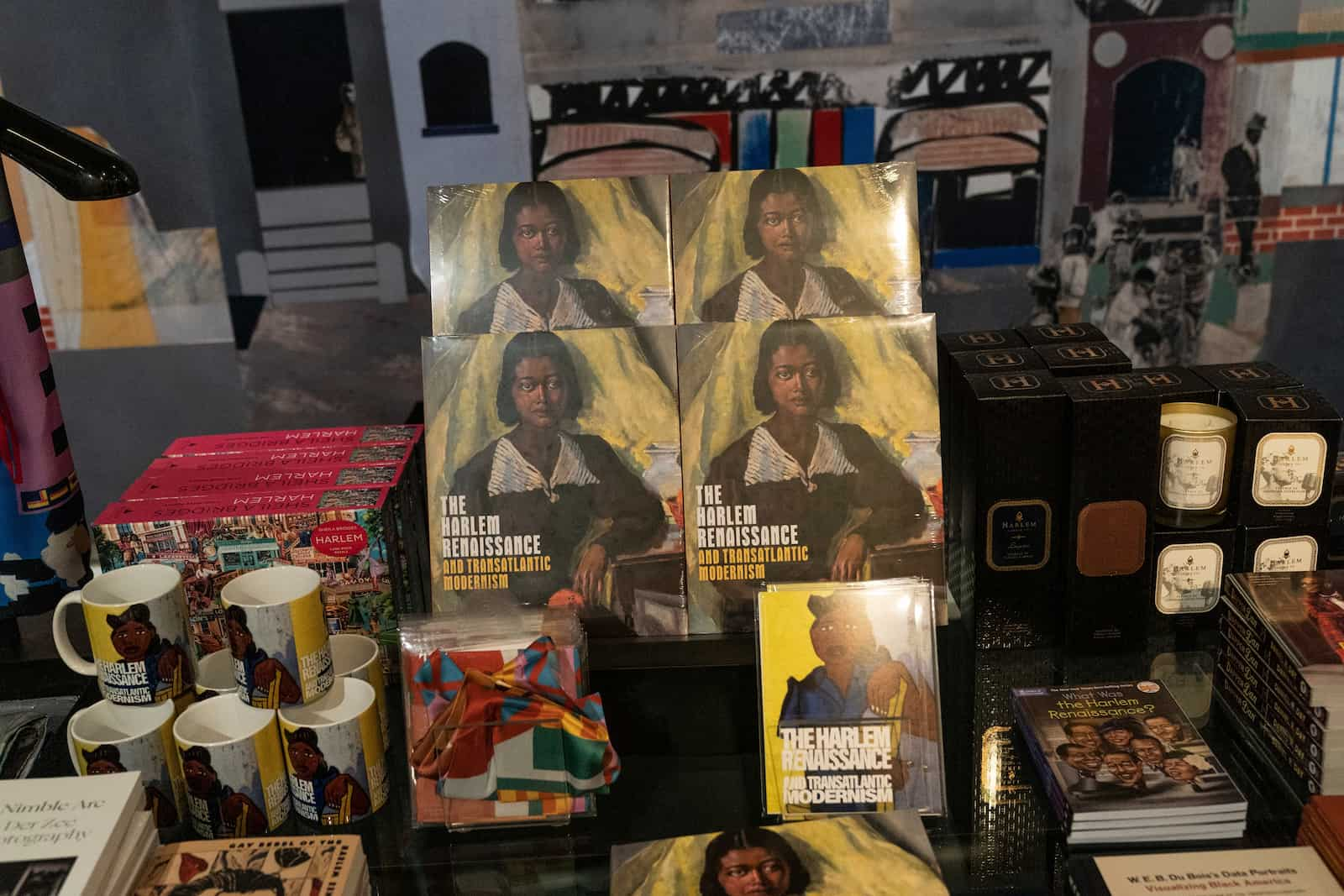
Merchandise from Harlem Renaissance Exhibit
Harlem Renaissance:
During the 1920s and 1930s, Black artists, writers, and musicians in Harlem, New York, created exciting new music, books, and art, helping celebrate Black culture and inspiring pride and creativity across the country. Well-known artists included Langston Hughes, Zora Neale Hurston, Aaron Douglas, Louis Armstrong, and Duke Ellington, who performed at the famous Cotton Club.

Aerial view of the Empire State Building
Empire State Building:
Built in just one year and 45 days, the Empire State building officially opened on May 1, 1931. At 102 stories, it was the tallest building in the world until the North Tower of the World Trade Center finally beat it in 1971.

Interior of the 9/11 Memorial Museum in New York City
September 11, 2001:
As part of a major terrorist attack, two airplanes were hijacked and crashed into the Twin Towers of the World Trade Center in New York City. Both towers ultimately collapsed and more than 2,700 people from dozens of nations were killed. Today, a new tower called One World Trade Center stands in its place, alongside the 9/11 Memorial & Museum.
?
DID YOU KNOW?
France gave the Statue of Liberty to the U.S. in 1885. Emma Lazarus’s famous sonnet “The New Colossus” was written to raise funds for its installation. Her words appear today on the statue’s pedestal: “Give us your tired, your poor, your huddled masses yearning to breathe free…”

More Activities…
-
15+ Sensory Play Ideas for Home or Classroom
Explore fun sensory play ideas to spark creativity and support child development—perfect for home or classroom activities.
-
15+ Cooperative Play Activities for Home or Classroom
Explore 15+ fun cooperative play ideas that help kids build teamwork, communication, and social skills at home or in the classroom.
-
25+ Play-Based Learning Activities for Preschoolers and Kindergarteners
Discover 25+ fun and educational play-based learning activities for preschoolers and kindergarteners. Boost creativity, motor skills, and critical thinking through play!
-
Letter A: Free Games, Printables, Crafts, and Song for Kids
Discover free Letter A games, worksheets, crafts, and songs for kids! Make learning the letter A fun and interactive with engaging activities for home or classroom…
-
33 Fall Crafts and Art Activities for Preschool and Early Elementary
Discover 33 easy and fun fall crafts for preschool and kindergarten that spark creativity using everyday materials and seasonal themes.
-
40 Fun First Day of School Activities & Games
Start the school year with fun icebreakers, crafts, printables, and games that help students connect and feel excited to learn.
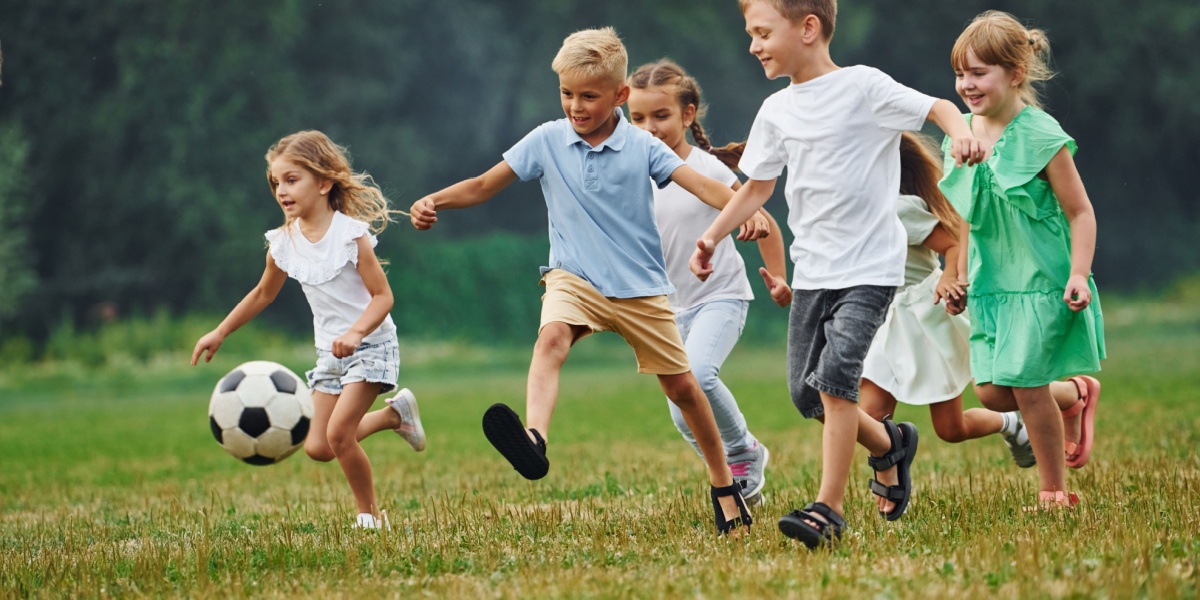
Share
15+ Cooperative Play Activities for Your Home or Classroom
Encourage this important stage of play with these fun and simple activities for indoors and out!
Table of Contents–Jump to Each Section
Cooperative play is an important part of early childhood development. It teaches kids how to work together, share ideas, and solve problems as a team, helping them build strong social-emotional skills that support learning and friendship.
Cooperative Play Explained:
- Cooperative play happens when kids work together toward a shared goal (like building something, playing a game, or acting out a story.)
- Cooperative play is a more organized and interactive way to play that helps children learn how to collaborate, solve problems, and connect with others.
- Around age 4 or 5, children start moving from solo or side-by-side play to more social, team-based activities that can naturally develop into cooperative play.
- In cooperative play, kids talk things through, make rules, assign roles, and share materials.
Learn more about cooperative play and the other 5 stages of play in early childhood.
Here are 15+ fun and easy cooperative play activities that are perfect for home or the classroom—designed to encourage connection, teamwork, and a whole lot of fun.
Cooperative Play Ideas for Children
Many of these ideas are classic kids’ activities, but they also provide excellent opportunities for cooperative play to erupt naturally.
Indoor Cooperative Play Activities:
Puppet Show:
Whether you make your own finger puppets and create a “theater” from a cardboard box or have a more elaborate setup, it definitely takes teamwork to create and put on a show!
Cooperative Board Games:
Look for games where players win or lose together, the game is the opponent, players collaborate toward a common goal, and/or play requires communication and collaboration. You can find a few cooperative board game ideas here.
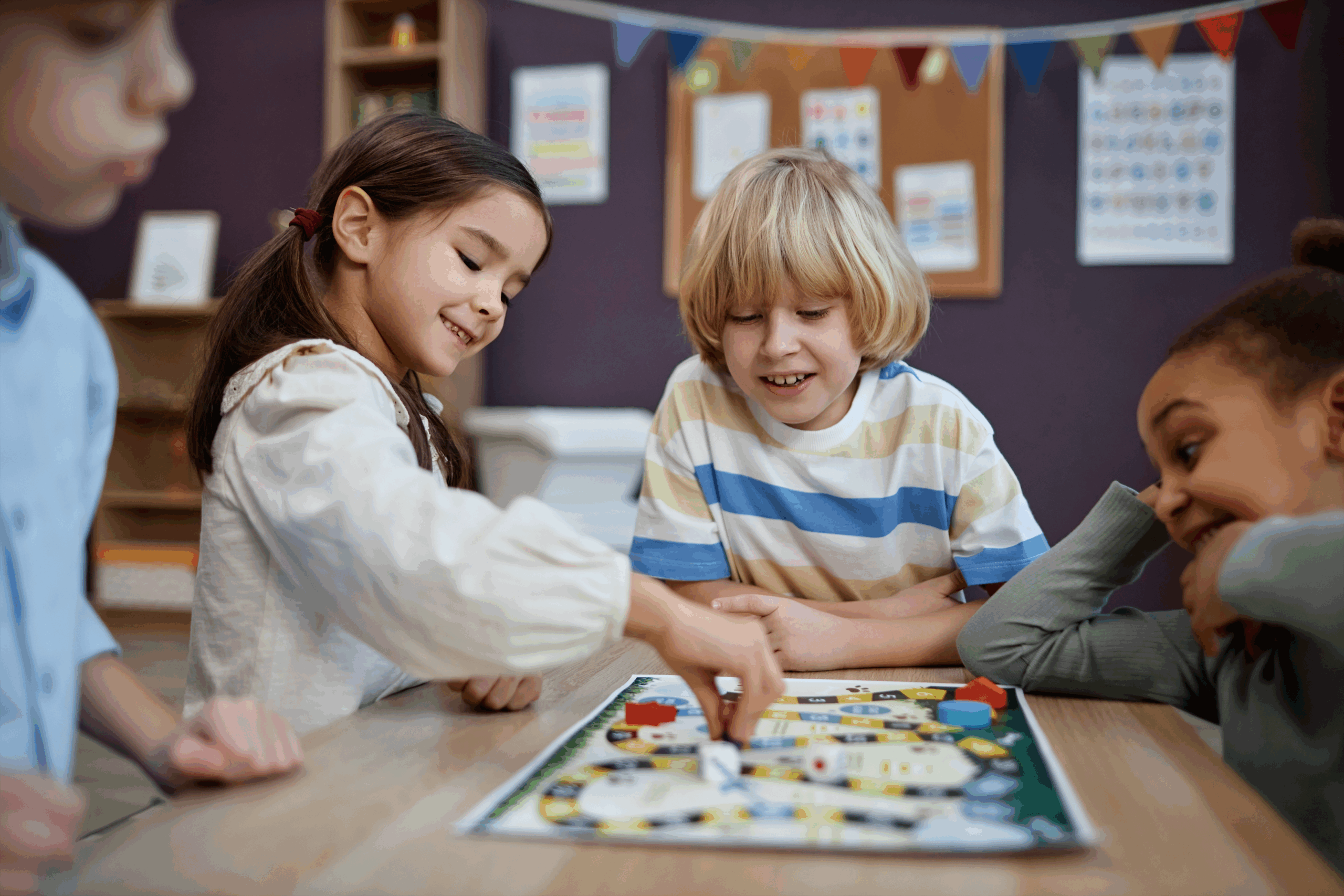
Pretend Restaurant or Store:
These classic pretend games, along with House, School, and others, let kids try out future adult responsibilities and careers while enjoying cooperative play. Provide materials like dress-up clothes, toy food and kitchen utensils, or other vocational toys to encourage this sort of cooperative play for preschoolers.
Jigsaw Puzzles:
Putting together a puzzle can definitely be a group endeavor. Assign various sections to different people, and be sure to use a big space where everyone has room to work on their section comfortably.
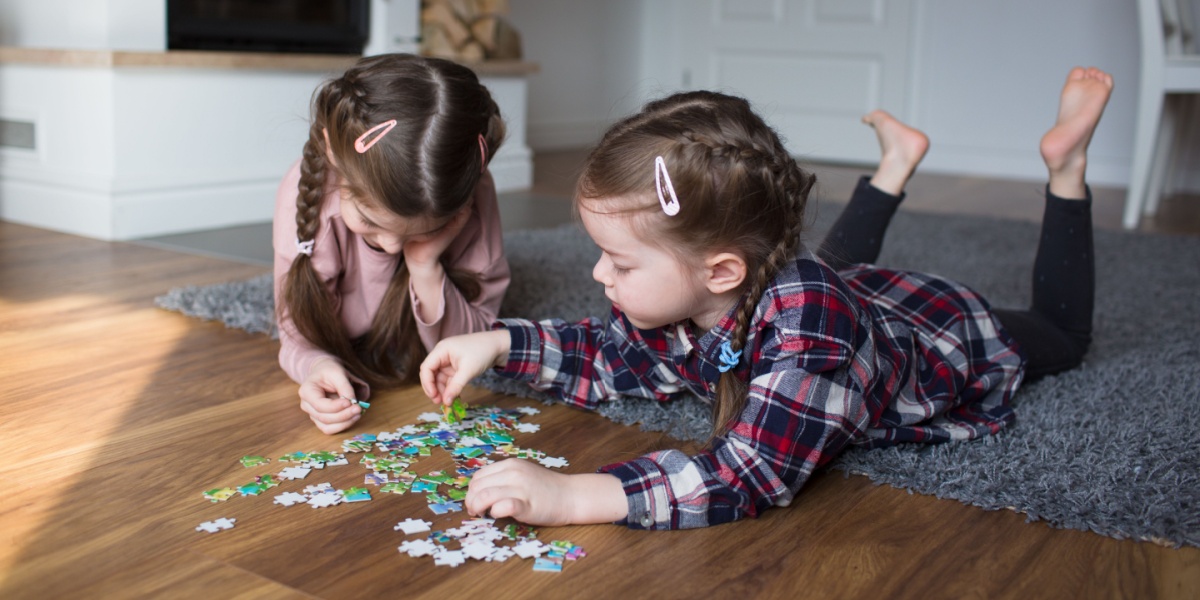
Blanket Fort:
Here’s another childhood classic. Kids can build a fort alone, but it’s a lot more fun when you collaborate. As they plan, gather materials, and then construct, they’ll need to navigate conflicts and solve problems along the way. When they’re done, they can use their fort for more cooperative play!
Outdoor Cooperative Play Activities:
DIY Obstacle Course:
Making a plan, gathering materials, choosing people to work on different sections—these are all collaborative tasks that culminate in an obstacle course kids can be proud of together.
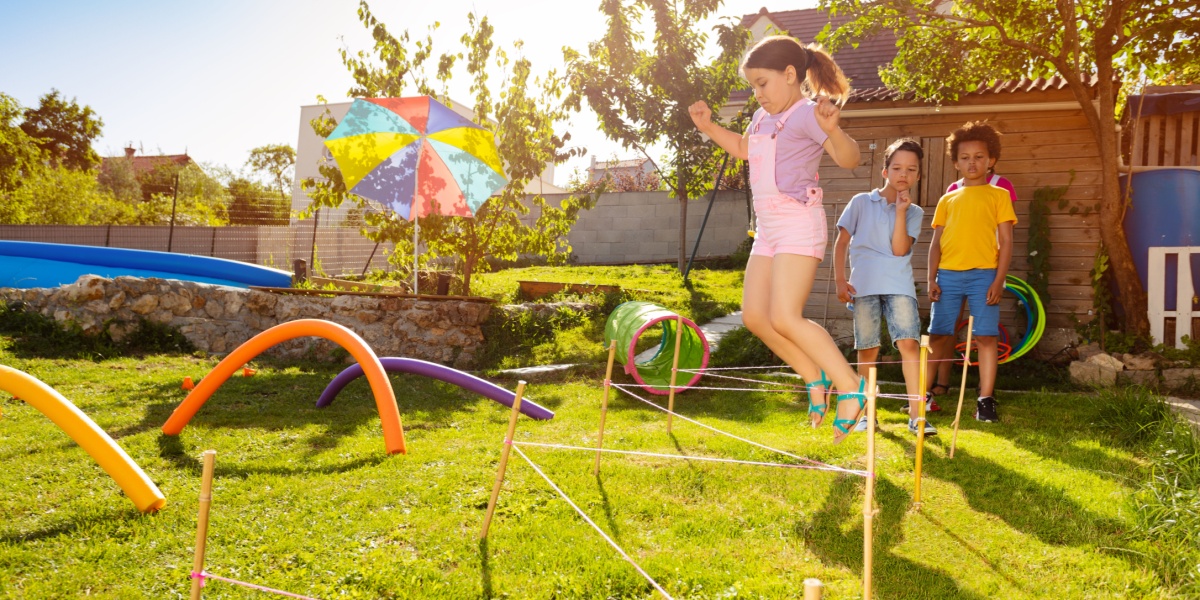
Build a Playhouse:
Whether kids construct their house from temporary materials like outlining rooms with sticks and making furniture from rocks, or actually gather building materials and piece together something more permanent, this is the kind of group project with a role for everyone who wants to join.
Tag Variations:
Games with a competitive slant can still be cooperative. Kids must decide on the rules together, then follow them and keep each other honest as they play.
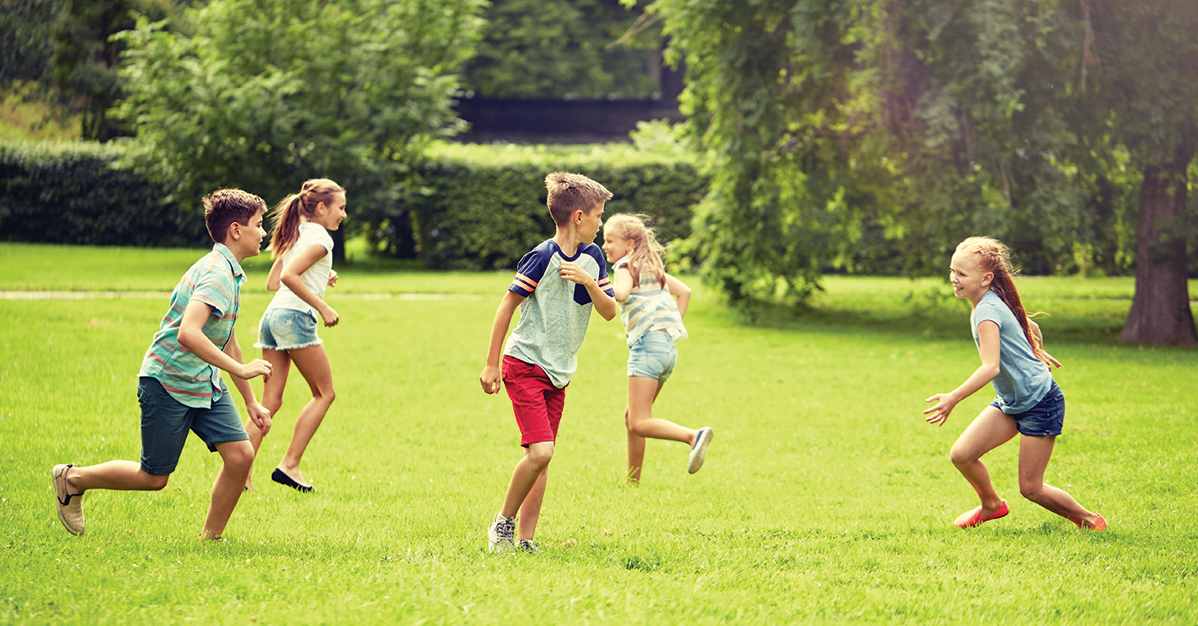
There are endless tag variations for kids to try, like Freeze Tag, Shadow Tag, Blob Tag, and Sharks & Minnows. Or, encourage kids to collaborate and come up with their own rules!
TIP: Our free printable Backyard Games for Kids features several tag variations kids can try.
Relay Races:
Divide a larger group of kids into smaller teams, then set a goal for each team to complete together. Try the classic relay where one player runs down and back, then tags the next runner. Or, get creative with a pop-the-balloon race, egg-and-spoon race, or pass-the-water race.
Gardening:
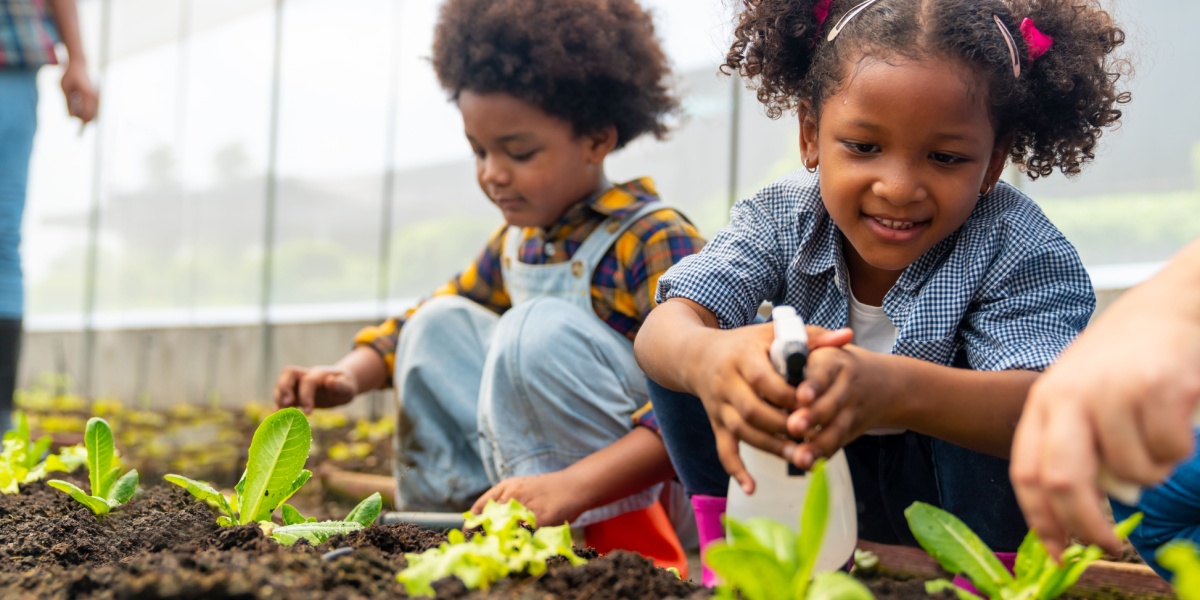
Give kids child-sized shovels, rakes, and other gardening tools and a patch of bare ground. They can make a “pretend” garden by planting pebbles and then sticking flowers into the ground to simulate a growing garden. Or, make the activity more meaningful by showing them how to plant real seeds and tend an actual garden!
Small Group Projects for Cooperative Play:
Joint Art Project:
Unleash everyone’s creativity with a big collaborative project like a wall mural or mosaic. Let kids lead, generating the design, choosing the materials, assigning jobs, and ultimately creating the finished work of art.
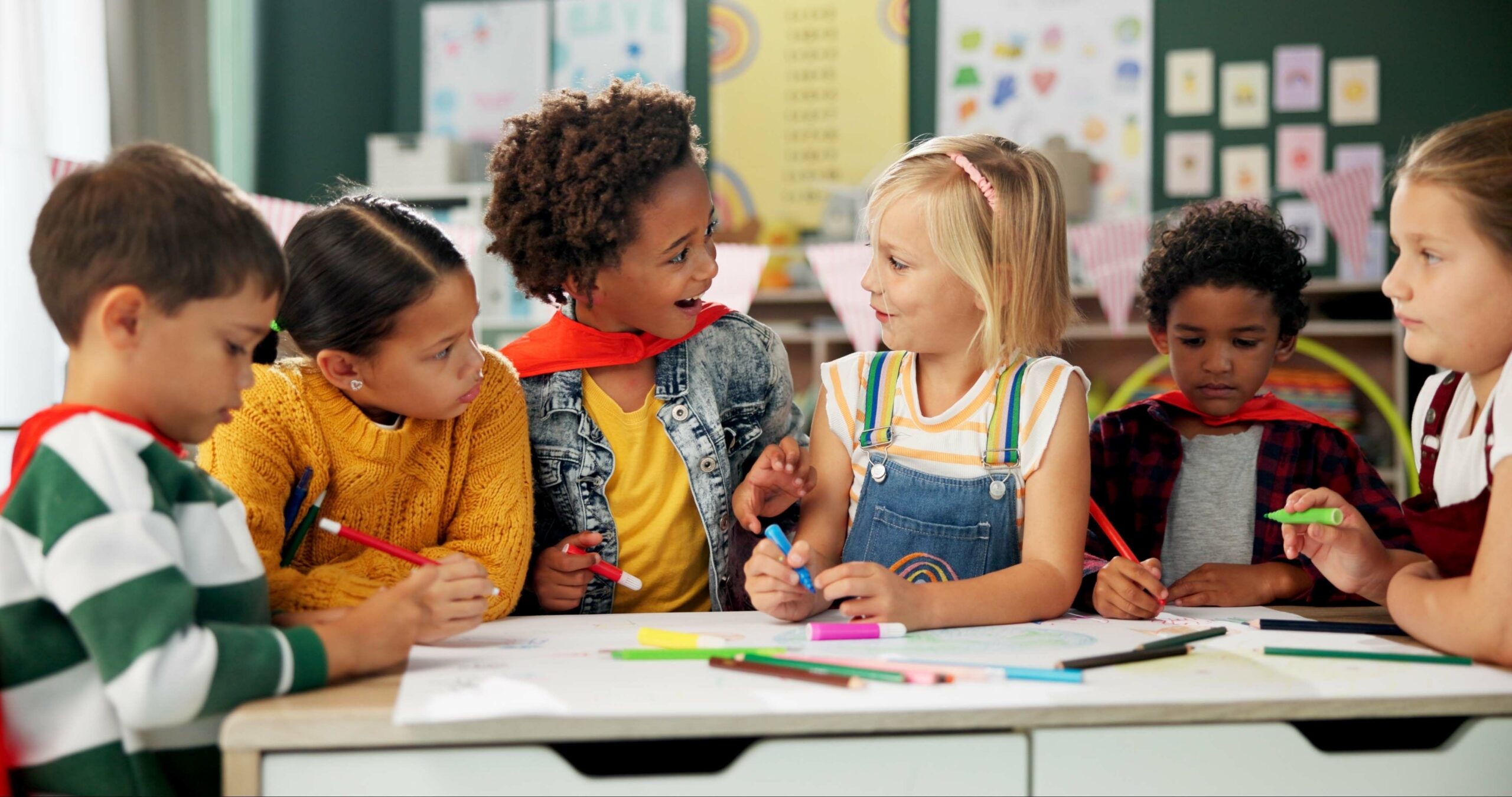
STEM Challenge:
These challenges require kids to work together to solve a problem. For instance, ask them to use aluminum foil to make a boat that floats and also holds 15 pennies. Or, given some newspaper and masking tape, how tall of a tower can they build?
TIP: Check our our 90+ STEM Activities for Kids to get more STEM-related projects that inspire cooperative play.
Collaborative Book:
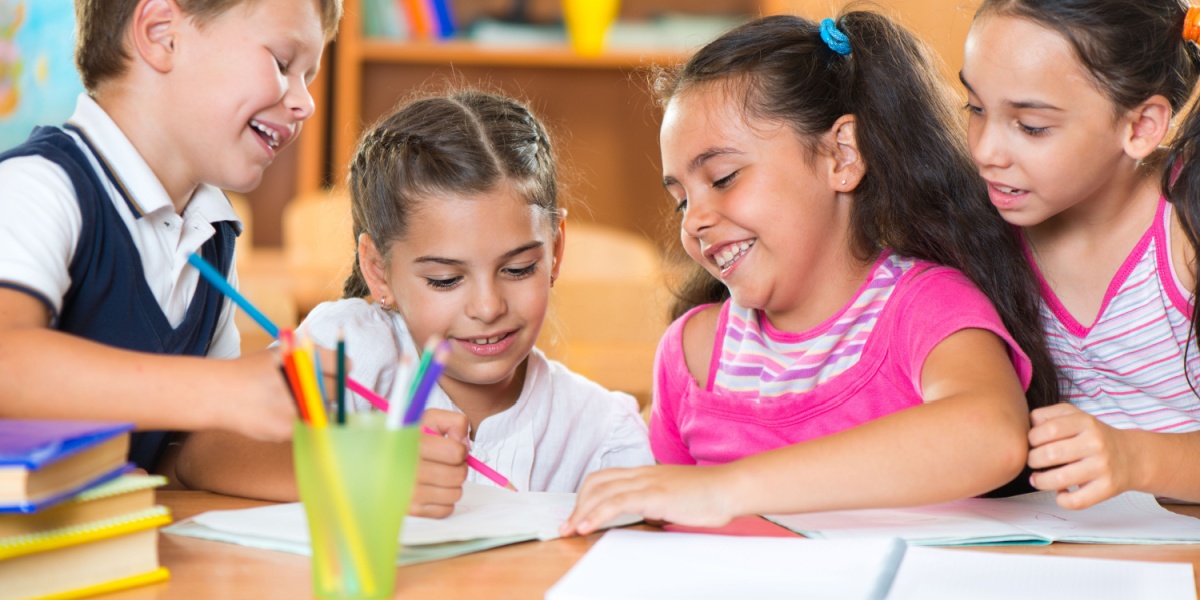
This is a cooperative project that allows kids to lean on their strengths. One child might write the story, another could illustrate it, while a third figures out how to use paper, yarn, and a hole punch to turn it into an actual book.
Cardboard City:
Provide a giant stack of cardboard boxes and some rolls of masking tape, and you’ll be amazed at what a group of kids playing cooperatively can come up with!
Group Dance Routine:

Choose a song everyone loves, then work out a group routine. Perform it for friends and family, or even at your next school talent show!
Tips to Encourage Cooperative Play at Home or in the Classroom
As children get older, most naturally begin to play cooperatively, given the chance. It’s up to parents and teachers to provide those opportunities, then offer guidance and encouragement as needed. Try these ideas and tips to encourage cooperative play.
1. Provide Materials That Naturally Promote Group Effort
Some toys and games are automatically more fun with several players. Cooperative board games, puppet theaters, imaginative play scenarios like dress-up clothes or play kitchens, and relay races are all excellent ways to encourage cooperative play.
2. Model Cooperative Behavior
Children learn from watching adults and older peers, so set a good example. Use collaborative language and invite children to join you in cooperative activities or games. Show them what it looks like to take turns and listen actively, and model good conflict resolution skills when disagreements pop up.
Examples:
“Ashby and Logan, do you want to help me build a blanket fort? I’ll get the pillows and blankets, and you can talk about what it should look like.”
“Logan, I like your idea to add a space just for reading! Ashby, what do you think should go in that space?”
“Okay, you each want to sit in the new reading nook, but it’s not really big enough for both of you. Should we take turns, or try to make it big enough for more people?”
3. Give Children Shared Goals or Roles
When you notice children playing associatively (near each other but without a common goal), nudge them into cooperative play by suggesting ways they can play together. You can also invite onlookers to join in the fun.
Examples:
“You three are doing a terrific job of sharing these LEGOs! What if you worked together to build something, like a town or a big castle?”
“Your restaurant seems to be a hit! Why don’t you ask Jose to come join in and be your next customer?”
“It seems like everyone wants to use the playhouse today. What game could you all play together?”
4. Praise Cooperation and Kindness
Recognize and reward cooperative play behaviors to let kids know they’re on the right track. It means a lot to know that someone saw you give up your turn so someone new could join the game, or that you consoled a fellow player when something went wrong. Praise children often in meaningful ways, and they’ll make an effort to continue those behaviors.
Examples:
“You all are doing an amazing job of building this giant sandcastle together! You’re really listening to each other and coming up with creative ways to incorporate everyone’s ideas!”
“It was really kind of you to let Liam join the game, even though you had to change the rules a bit. He really wanted to play and was so happy to join in.”
“Way to go! That box is really heavy, but you worked together to move it where you wanted it!”
5. Navigate Disagreements During Group Play
Conflict means big emotions for everyone, including the adults monitoring the play. Be sure to approach a conflict calmly, stating what you observe and naming the emotions you see. Invite everyone to share their side, validating different points of view. Then, reframe the problem as a shared goal, and offer simple choices as solutions.
Examples:
“It looks like you’re having trouble deciding who should go first and you’re both very angry. Everybody wants to get the game started, so what’s a fair way to decide who should go first? You could flip a coin, or play rock-paper-scissors. Which one would you like to try?”
“Ana, you’re yelling and you look angry, and Jacob looks very sad. It seems like you both want to use the tricycle and can’t decide whose turn it is. One at a time, tell me how you’re feeling, and then we’ll find a way for everyone to have fun during recess.”
As kids get older, try not to step in and moderate conflicts immediately. Give them a few minutes to work things out, and remember that disagreement can be constructive in the right circumstances. When kids learn to navigate conflict resolutions on their own, they gain important skills they’ll need their entire lives.
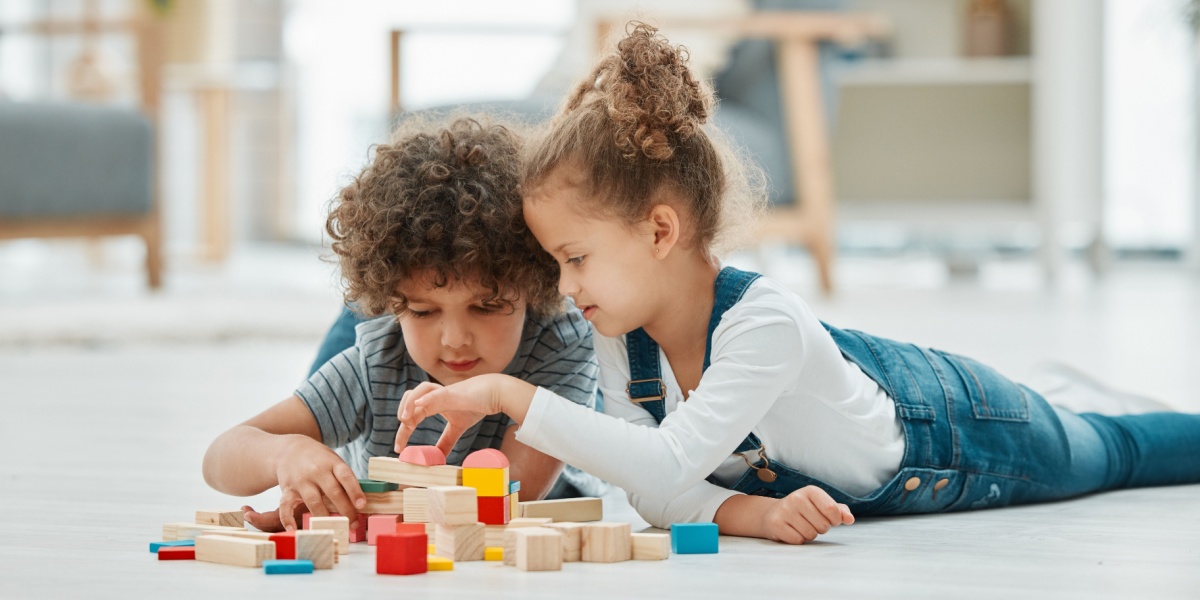
Share
Cooperative Play Explained: Why It Matters and How to Encourage It
Learn how cooperative play supports emotional and social growth in early childhood development, and how parents and teachers can encourage it.
What Is Cooperative Play in Early Childhood?
In cooperative play, children actively collaborate in an activity or game, working toward a common goal that’s stated or understood. It’s an important stage in childhood development, where kids progress from individually-focused play to play that requires cooperation and social interaction. Most children begin to join in cooperative play by age 4, with more consistent participation by age 5.
Cooperative play is an essential part of children’s development, as it helps kids build social connections, improve communication skills, and encourage teamwork. As kids engage in group activities, they learn how to share ideas, compromise, and appreciate different perspectives—key experiences that support both emotional and cognitive growth.
What Does Cooperative Play Look Like?
Cooperative play is more organized than earlier forms of play—players work together to define the rules and assign roles, and they share any toys or materials required. The play itself is often creative or imaginative, though it can also involve more structured activities like games and sports.
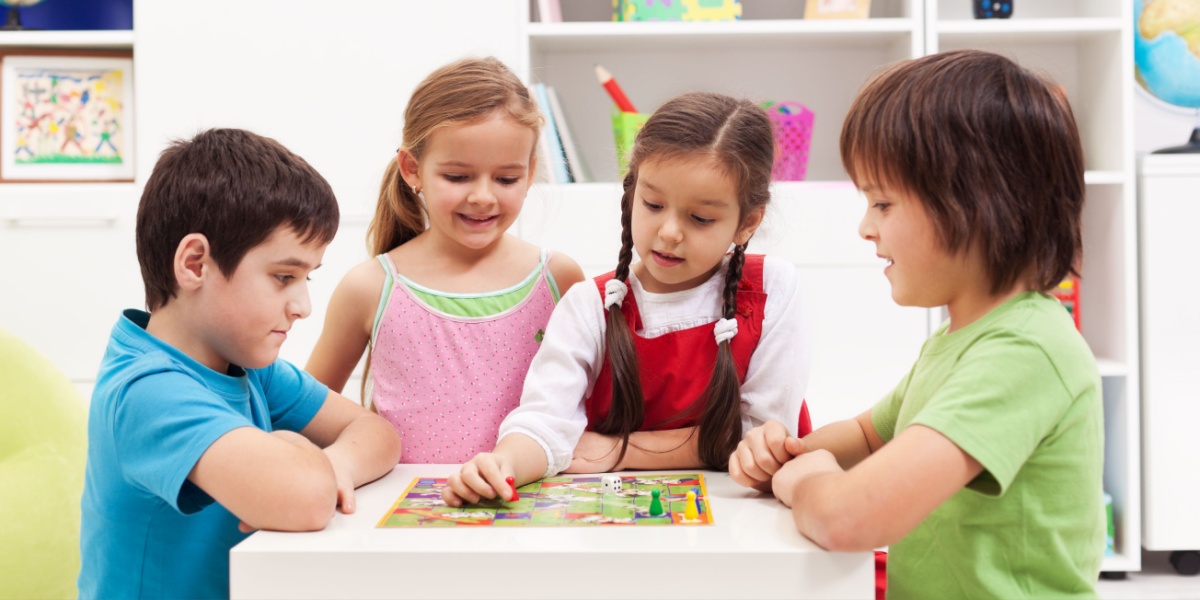
Examples of cooperative play:
- A group of children playing “House” or “Restaurant,” taking turns being the chef, server, and customers
- Three kids working together to build a tall tower of blocks, with each offering ideas on how to construct it
- Half a dozen kids playing a ball game, with rules they establish at the beginning
To bring cooperative play into your home or classroom, check out these 15+ cooperative play activities for young kids, plus get tips for encouraging cooperative play.
Cooperative Play Summary: Cooperative play is a type of play where children work together toward a shared goal, typically beginning around age 4 or 5. It supports emotional, social, and cognitive growth by helping kids learn communication, teamwork, empathy, and problem-solving.
Playing Together vs. Playing Cooperatively
Sociologist Mildred Parten considered cooperative play to be the final stage in her theory of the 6 Stages of Play. The first five stages progress from infants playing by moving their bodies or observing their environment to toddlers and preschoolers playing individually and in group settings. Learn more about the 6 Stages of Play here.
Cooperative play often follows associative play, which is when children are still focused on their own goals but talk to other kids while playing, sometimes sharing toys or materials. The term “playing together” often encompasses various social play types, including associative and cooperative play.
Examples of Associative Play and Cooperative Play:
Associative Play
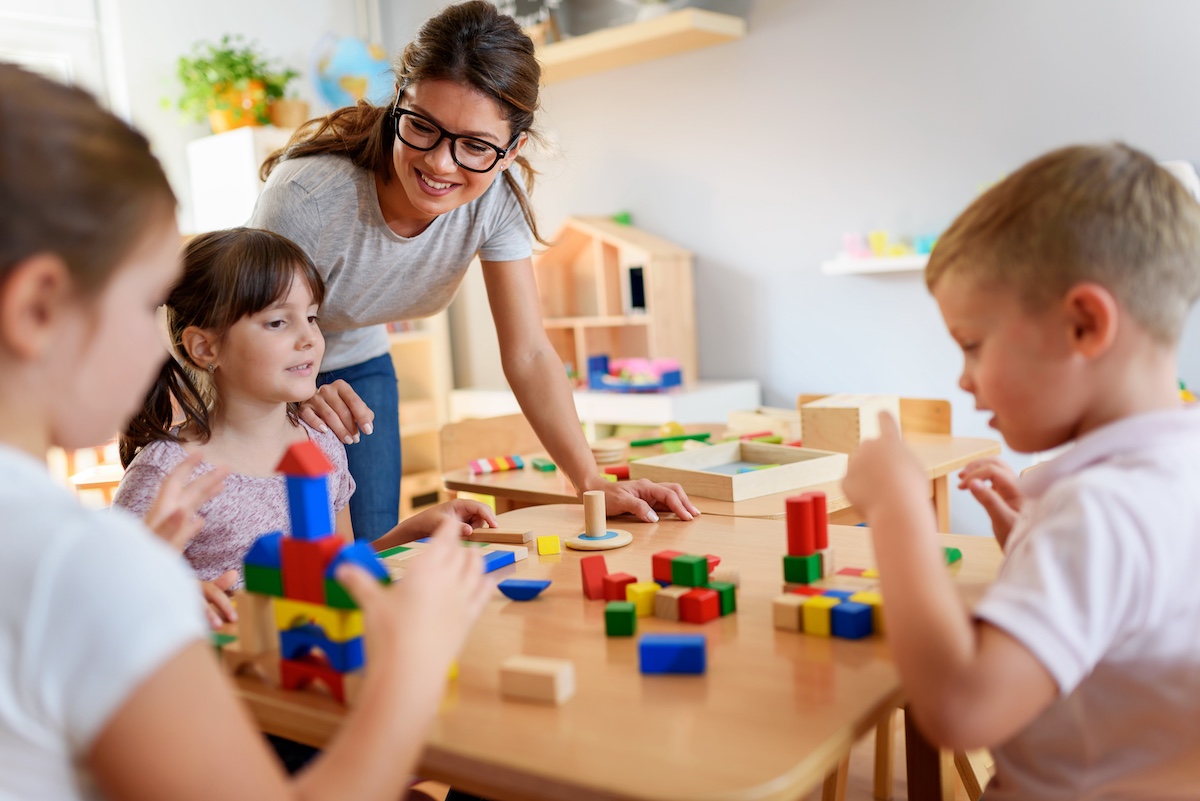
Four children are using finger paints at a table. Each one is creating their own picture. They talk about their creations, and ask each other to share paints or materials. They’re playing together, but each has their own end goal and result. If one child leaves, it won’t affect the overall activity. So while they’re playing together, they’re not playing cooperatively.
Cooperative Play
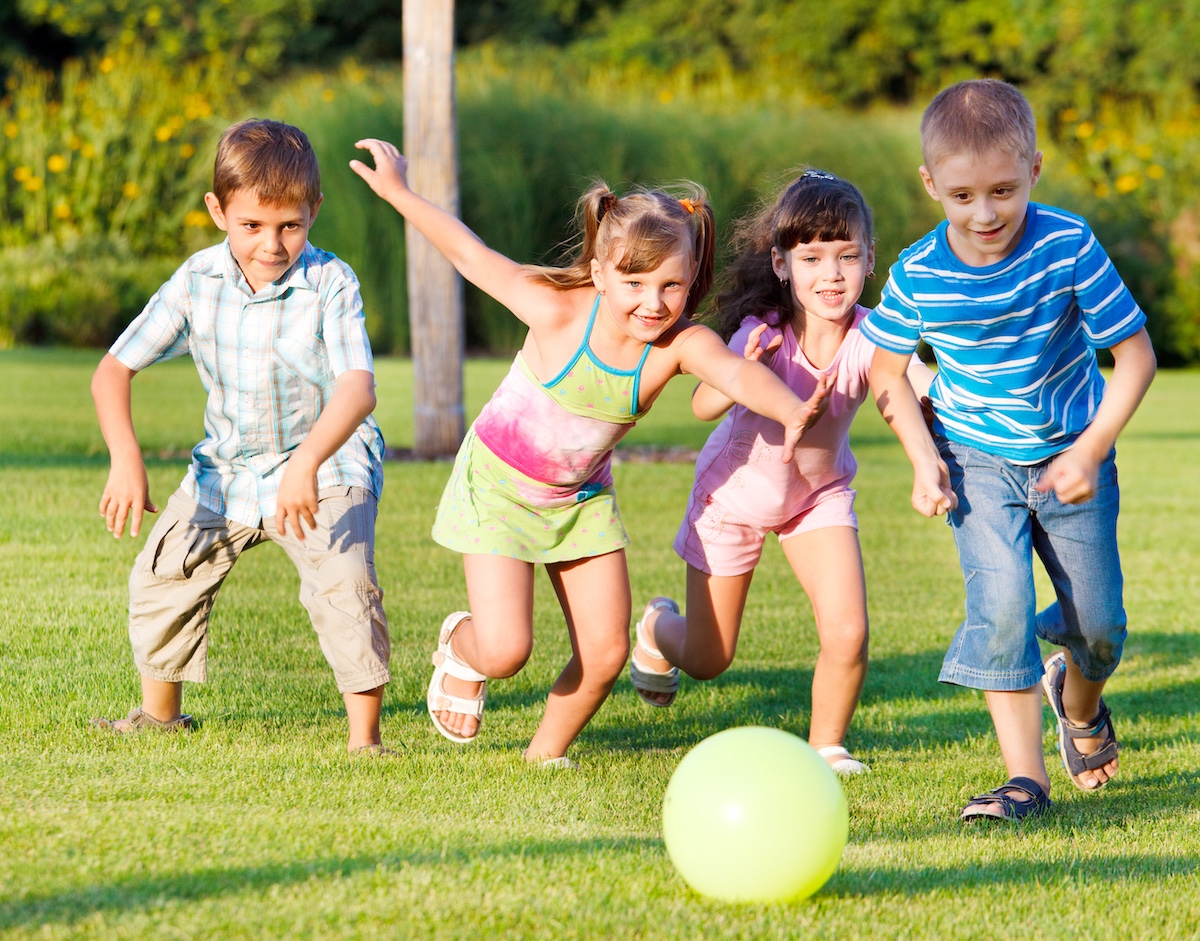
Four children decide to paint a mural of their town together. They spread out a large piece of paper and decide what they want to paint where. They cooperatively decide who will paint the school, who will paint the park, etc. If one child leaves, the others will have to reassign their role, or make changes to their plan. When these kids finish, they have one common shared project, the result of collaboration. This is true cooperative play.
The biggest difference between playing together and cooperative play is…
…in cooperative play, kids work together, talking, helping, and engaging with each other, to reach the same goal.
The Benefits of Cooperative Play for Children
While all types of play are valuable, cooperative play is a vital step in early childhood development, as it helps them naturally develop key social emotional skills. It also lays the foundation for learning to work as part of a team, skills every adult uses on a regular basis at work and at home.
Here are some of the benefits of cooperative play:
Communications Skills
In order to play collaboratively, kids must be able to communicate with one another. Verbally, this means speaking clearly with a broad vocabulary that enables you to express your thoughts. (This also applies to children who communicate through sign language.) Children may also need strong reading and writing skills, depending on the game or activity.
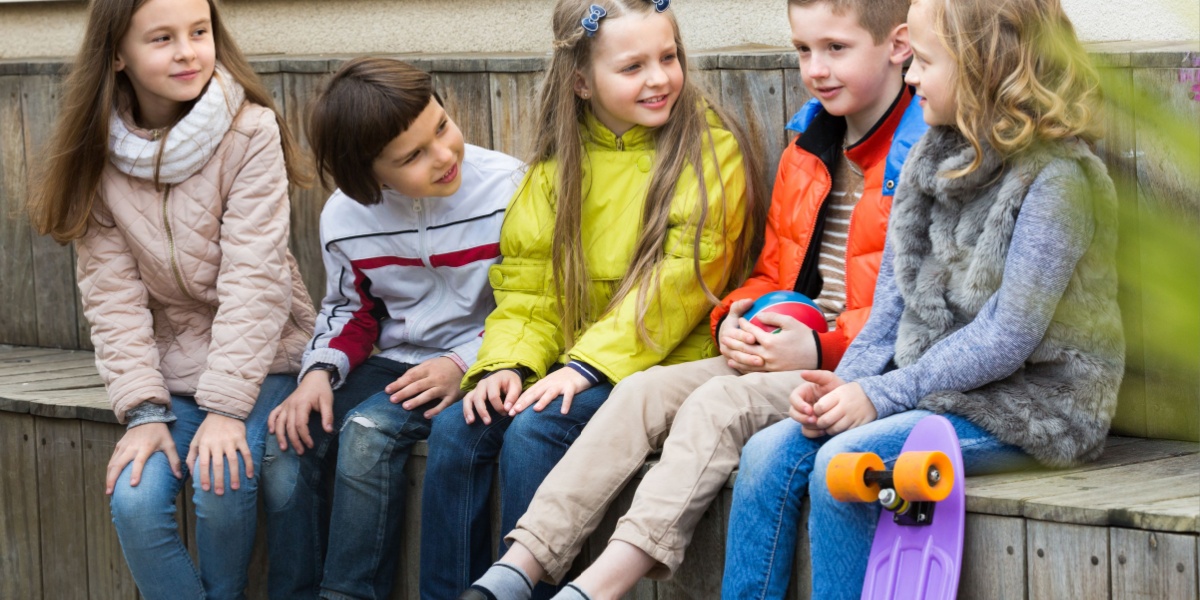
Kids also need good nonverbal communication skills to play cooperatively. They have to learn how to recognize facial expressions and social cues. Collaboration also requires us to listen actively, taking part in a conversational flow. The more kids play cooperatively with their peers, the stronger their language skills become.
Teamwork Skills
For most of us, life is all about collaboration. Whether we’re working with a team in our jobs or sharing responsibilities with family or friends at home, teamwork skills are a must.
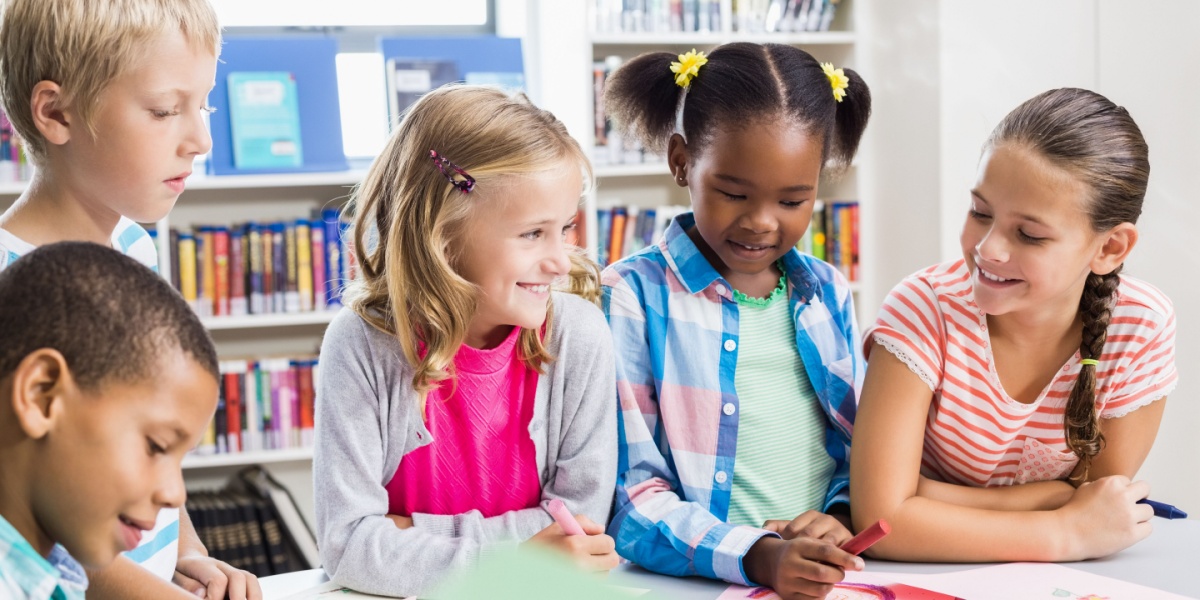
Cooperative play helps children develop these skills, teaching them to take turns and work together to find solutions to problems. Some children naturally emerge as leaders in cooperative play, but all kids can develop leadership skills when they play collaboratively.
Emotional Regulation
As adults know, being part of a team can be hard sometimes. You have to learn to compromise, and know when to speak up and when to go with the flow. Sometimes you feel frustrated or angry, but to be a good collaborative player, you have to recognize and share your emotions constructively. These are advanced social emotional skills, but kids develop them naturally as they play cooperatively.
TIP: Game-based learning is another great way to boost social emotional learning.
Empathy and Tolerance
The way we view and treat others says a great deal about our character. Parents and teachers must teach kids to make an effort to understand what others are going through and recognize that there are many different ways of being a human.
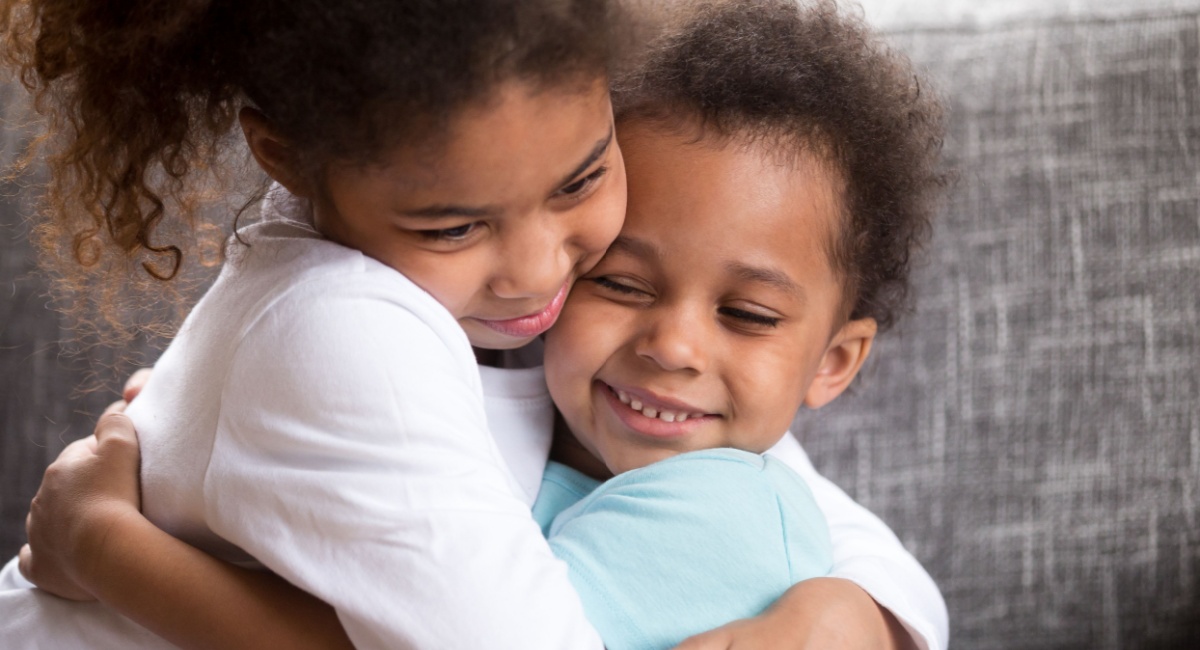
Cooperative play is an excellent way to teach both empathy and tolerance—in order to play peacefully together, kids must be willing to accept different ways of doing things, and care about the feelings of others as well as their own.
Executive Function
This refers to “life skills” like time management, impulse control, planning and organization, and working memory. Since cooperative play is more organized than the earlier stages, it requires a higher level of executive functioning. Players have to remember and follow the rules, planning their own actions as they relate to their role in the game. They need to stay focused on the overall group goal, whether that’s running a “restaurant” or trying to score the most goals. All of these take good executive function skills.
Conflict Resolution
Here’s another truth that all adults know: when people do something together, they’re going to disagree sometimes. In order to continue, you have to find a way to resolve the conflict.
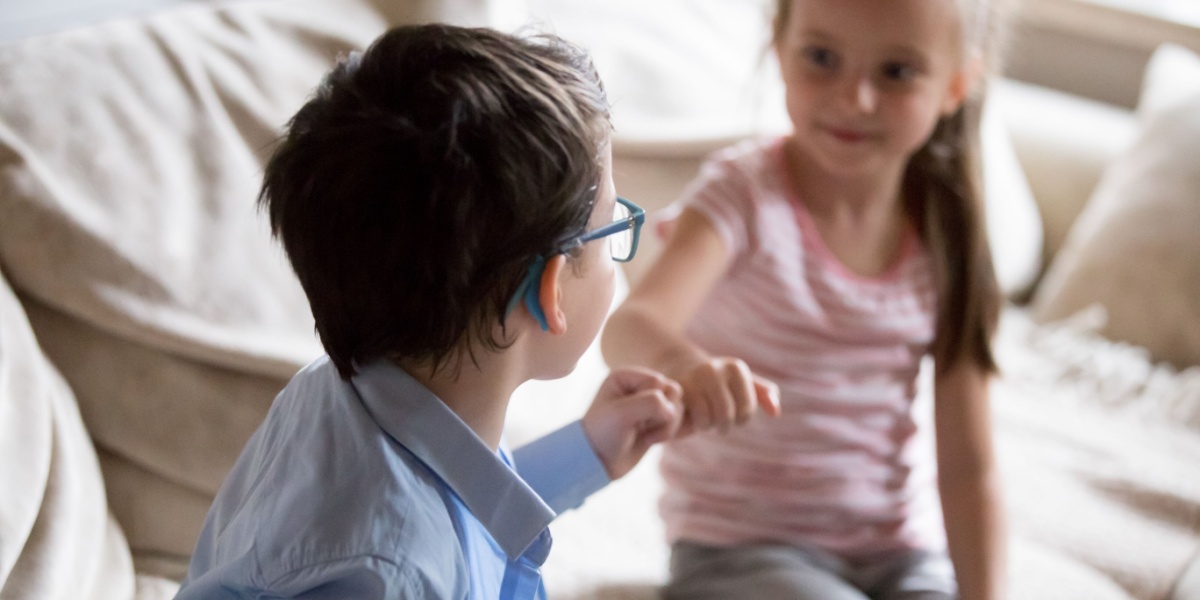
Cooperative play is full of arguments, and that’s okay! Kids have to think creatively and empathetically to find solutions so their game or activity can continue. Sometimes they need guidance from adults, but often, children will find their own way to a resolution they can all agree on.
Learn About Other Types of Play
Cooperative Play Frequently Asked Questions (FAQ)
When does cooperative play begin?
Children generally begin to play cooperatively around age 4 or 5, though this varies from child to child. If you’re concerned about your child’s social development, talk to their teacher or pediatrician.
What are some examples of cooperative play?
In cooperative play, children share a defined common goal as well as toys and materials. They communicate actively throughout, and assign specific roles and responsibilities. Examples include:
- A group of children playing “Vet Clinic,” taking turns being the vet, the assistant, or the various animals being treated
- Three kids working together to build a fort, with each offering ideas on how to construct it
- Half a dozen kids playing a game of tag on the playground, with rules they establish at the beginning
Why is cooperative play important for kids?
Cooperative play offers children valuable opportunities to build social and emotional skills that last a lifetime. As they work together toward shared goals, kids learn how to communicate clearly, listen to others, take turns, and resolve conflicts. This type of play fosters empathy, teamwork, and a sense of belonging, helping children feel more confident and connected. Over time, cooperative play supports not just stronger friendships, but also essential skills like problem-solving, patience, and emotional regulation.
How can I encourage cooperative play at home?
It’s easier to encourage cooperative play when children have siblings or neighbors their own age nearby. But kids and adults can engage in cooperative play, too! Invite your child to join you in an activity, and model good cooperative behavior as you play. Initially, it’s best to use activities you already know they enjoy, so they can focus more on learning the new behaviors. As they get older, cooperative play with adults is a great way to introduce new games or activities too.
What’s the difference between cooperative play and parallel play?
In parallel play, kids play near each other, usually using the same toys or activities. However, each child is focused on their own place, and kids rarely interact though they may talk occasionally. Example: Two children play in the sandbox, but each is absorbed in their own tasks, one building a structure while the other pretends to plant seeds in the sand to make flowers grow.
In cooperative play, kids join together to achieve a common goal or purpose, using the same toys or materials and a set of shared rules. Example: Two children play together in a sandbox, building the one big sandcastle. They agree on a plan and tasks each will handle, and work together until their structure is complete.
Can group play help prepare children for kindergarten?
Group play is one of the very best ways to prepare kids for kindergarten! In fact, most kindergarten teachers say that they’d prefer children to know how to share, take turns, and cooperate than to be able to count to 100 or say their ABCs. Cooperative group play teaches those vital social and emotional skills naturally, effectively, and enjoyably. Parents should include both academic readiness and social emotional learning through activities like group play as they prepare kids to start kindergarten.
Legal disclaimer: Any information, materials, or links to third-party resources are provided for informational purposes only. We are not affiliated with and do not sponsor/endorse these third parties and bear no responsibility for the accuracy of content on any external site. All information provided in this article is current as of May 2025.
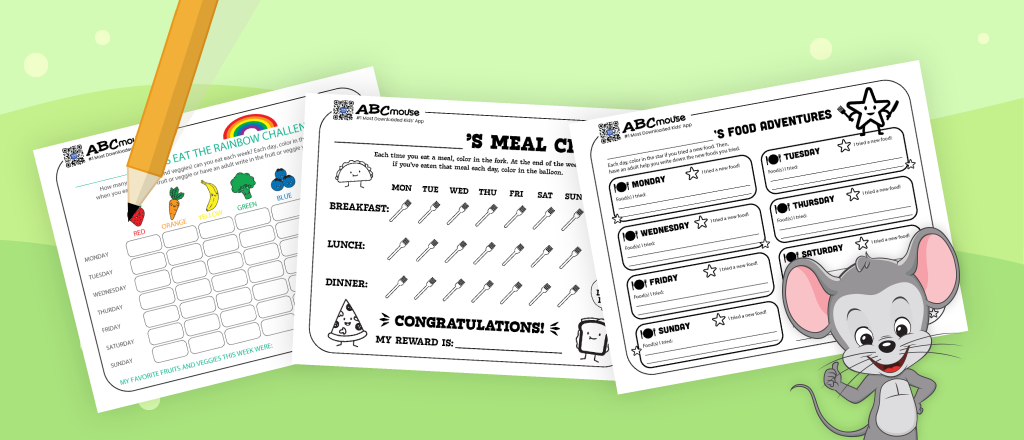
Free Picky Eater Printables to Help Kids Try New Foods and Eat Better
Whether you’re trying to motivate a picky eater, introduce new foods, or make fruits and veggies more enticing, these free printable mealtime reward charts are here to help. Designed for parents and caregivers, each printable offers a simple and playful way to support healthy mealtime.
Table of Contents–Jump to Each Section
Free Mealtime Printables
Pick the printable chart that best suits the mealtime skills your child is working on, whether it’s eating more fruits and veggies, improving their willingness to try new foods, or eating each meal of the day. Personalize each printable with your child’s name and designate a fun reward to celebrate their successes.
More Helpful Mealtime Resources
Online Fruit and Vegetable Jigsaw Puzzles
As kids work on assembling these digital puzzles, they’ll also practice color recognition and learn about fruit and veggies.
Digital Healthy Foods Coloring Pages
Kids can continue exploring different fruits, vegetables, and more while working on early phonics skills as they connect letter sounds to the images they’re coloring.
Fun Mealtime Songs for Kids
I Love Veggies! Song
If your child needs help remembering why veggies are important, this fun video and tune drives the message home.
Hungry, Hungry Time Song
Explore sweet, sour, and spicy flavors and which ones your child prefers with this catchy song and video for kids.
Want even more resources? Try our free printable Healthy Habits Worksheets, 80+ Vegetable Names for Kids, and Potty Training Charts.
Picky Eater Frequently Asked Questions (FAQ)
What causes a child to be a picky eater?
Picky eating can stem from a variety of factors including genetics, sensitivities to smells and textures, negative past experiences with food, or fear of trying something new. Research shared by Harvard Health Publishing also suggests a child’s temperament can impact picky eating.
When should I be concerned about my child’s picky eating?
According to Feeding Matters, an organization focused on pediatric feeding disorders (PFD), excessive picky eating may be a cause for concern. Extreme picky eating can look like:
- Extreme food selectivity and food refusal
- Limited appetite
- Low weight or failure to gain weight
- Delayed or dysfunctional eating skills
- Disruptive mealtime behavior
- Eats differently in different environments
How can I help a picky eater?
According to an article from Child Mind Institute, its recommended to work on breaking down barriers around new foods, slowly and repeatedly exposing children to new foods and textures, and keeping the experience positive. Here are a few tips from the Center for Disease Control:
- Try eating the food first to show them you like it. Then, let them try it.
- Give them a choice of different foods to try. Let them decide which one to try today.
- Wait a couple of days before offering the food again. It can take more than 10 times before your child likes it.
- Keep it fun and try a variety of approaches.
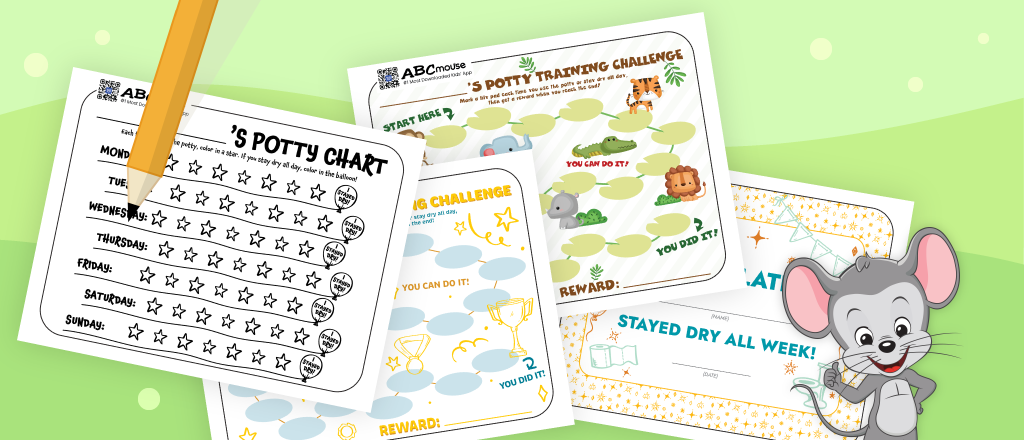
Free Potty Training Printables to Help Your Child Potty Like a Pro!
Potty training is a big milestone, and a little interactive encouragement can go a long way! These free printable potty training charts are designed to make the journey more fun, engaging, and rewarding for young children. The collection includes daily and weekly potty training charts kids can decorate with stickers or crayons, themed potty training challenges, and a colorful certificate to celebrate potty training success!
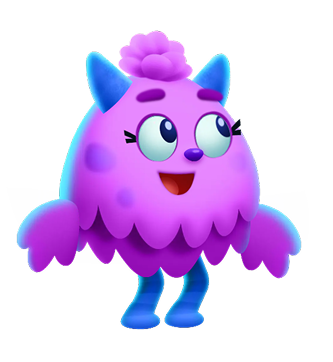
According to research from American Family Physician Journal, “In the United States, the average age at which [potty] training begins has increased over the past four decades from earlier than 18 months of age to between 21 and 36 months of age.”
Free Potty Training Charts & Certificates
Personalize each potty training chart by writing in your child’s name. You can also choose options that allow you to designate a special reward for your child when they successfully complete their potty training challenge. You can also celebrate your child’s achievements with our free printable potty training certificate!
More Potty Training Resources for Kids
Keep Learning Healthy Habits
Potty Training Frequently Asked Questions (FAQ)
What is a normal age for a child to be potty trained?
Most children are fully potty trained between 3 to 4 years old, though some start as early as 18 months, and others may take longer. However, experts recommend starting potty training based on when your child seems ready to try it, not just their age.
When should I potty train my child?
Pediatricians from the University of California, Davis Children’s Hospital suggest waiting until children are “ready physiologically, cognitively and emotionally.” In other words, your child should have the muscle control to control their bladder, the physical ability to pull their pants up and down and get on and off of a potty chair, and show interest in learning to use a toilet.
What are the signs of potty training readiness?
A few sign that your child may be ready to try potty training include:
- Staying dry for longer stretches
- Recognizing when they need to go
- Being able to undress themselves
- Following simple instructions
What are some tips for potty training?
Helpful approaches include:
- Avoiding pressure, embracing flexibility, and setting realistic expectations.
- Using positive reinforcement like stickers or simple rewards.
- Recognizing the importance of comfort, consistency, and patience-every child learns at their own pace.
- Establish a routine with regular potty breaks.
- Using a child-sized potty chair and clothing that’s easy to pull up and down (no snaps, buttons, or zippers).
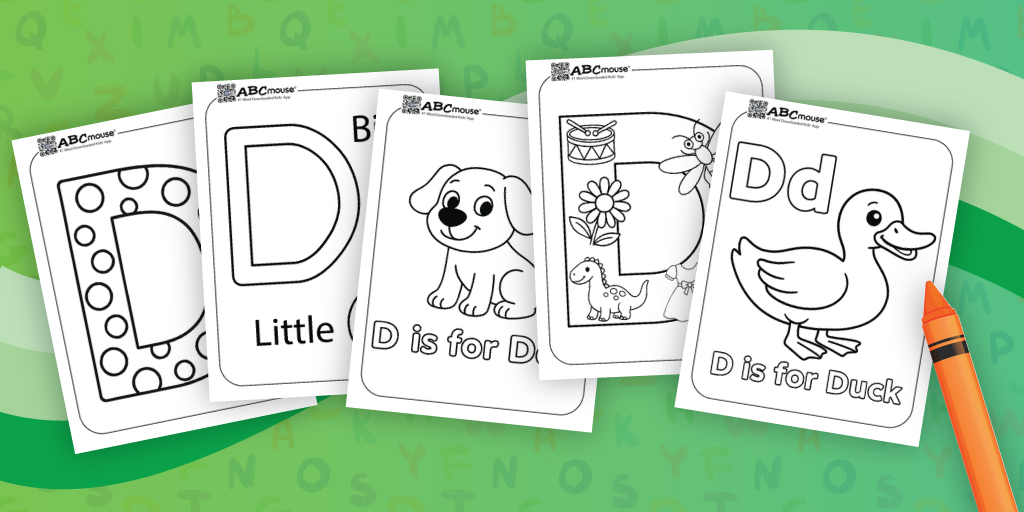
Letter D Coloring Pages for Kids (FREE Printables)
These letter D coloring pages provide a fun and simple way to help young children learn the letter D. Each page highlights the letter and features fun D-themed objects or cute characters like dogs, ducks, and dinosaurs to help children connect the shape of the letter with its beginning sound.
Print the letter D coloring pages out and keep them handy for a playful, low-prep activity that builds letter recognition skills. These pages are a fun and easy way to develop early literacy as kids explore the alphabet one letter at a time!
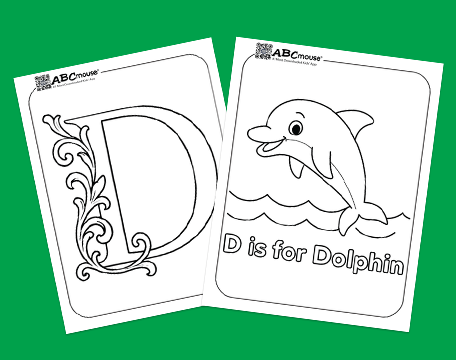
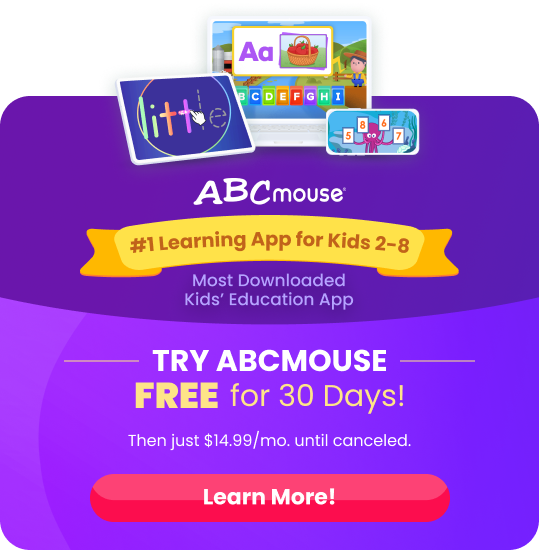
Overview of the Free Printable Letter D Coloring Pages
Pick your favorites from the letter D coloring pages below, or download the complete set using the button above. These pages focus on the /d/ sound and showcase kid-friendly images like drums, dogs, and donuts to make learning extra fun. Don’t forget to check out the letter D activities at the bottom for even more hands-on learning!
Fun Activities for Learning the Letter D!
Recommended for: Toddlers, Preschoolers, & Kindergarteners
⭐ Dig for Letter D Objects
Fill a shallow plastic bin with kinetic sand, shredded paper, or dry beans, oats, or pasta to create a “D is for Dig” sensory bin. Hide letter D foam letters, toys, or objects like dinosaurs, ducks, mini-dolls, and dice inside. Let your child dig and discover, saying the /d/ sound as they pull each item out. You can even make it into a game—how many letter D items can they find in a minute?
⭐ Free Online Letter D Tracing Game

Try a fun and colorful letter D tracing game on ABCmouse.com!
Kids can follow the dotted lines to form uppercase and lowercase Ds using rainbow colors. It’s a great way to develop handwriting and letter recognition skills.
⭐ D is for Dot Art
Grab some dot markers or a cotton swab and paint, and let your child decorate a large printable letter D with dots. Say “D is for dots!” as they fill it in. For more fun, add drawings or stickers of things that start with D—like a donut, dog, or drum—around the letter.
More Free Printable Coloring Pages
-
Letter D Coloring Pages (Free Printables!)
Explore free letter D coloring pages featuring dogs, ducks & dinosaurs—fun printables that help kids learn the alphabet through play.
-
Numbers Coloring Pages
Free number coloring pages from 0–100 help kids build counting skills through fun, hands-on printables and creative math activities
-
Reptiles Coloring Pages for Kids (Free Printables!)
Download free printable reptile coloring pages for kids! Fun and educational designs featuring snakes, turtles, lizards, and more to color at home.
-
Mammals Coloring Pages
Download over 300 free printable mammal coloring pages featuring cats, lions, sloths, and more—perfect for fun and learning at home or school.
-
First Day of School Signs (Free Printable Posters)
Capture the excitement of a new school year with free printable first day of school signs for preschool through 5th grade.
-
Back to School Coloring Pages (Free Printables!)
Free printable back-to-school coloring pages to ease into the year—perfect for home or classroom fun!
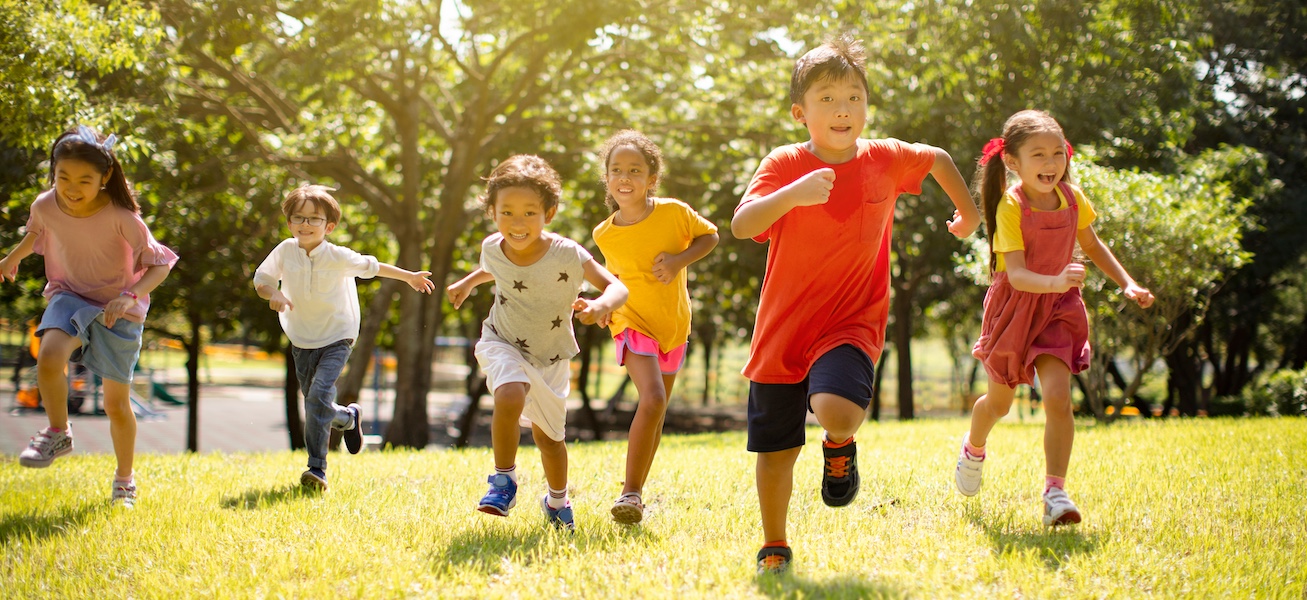
Share
The 6 Stages of Play in Child Development (And How to Support Each One)
Learn how to engage with your child during each stage of play and the difference between unoccupied, solitary, parallel, and cooperative play.
What Are the Stages of Play in Early Childhood Development?
Nearly one hundred years ago, sociologist Mildred Parten developed the theory of the 6 stages of play in early childhood social development. She observed a group of preschool children aged 2 to 5 and noted the different ways in which they played socially and non-socially. In her doctoral dissertation, she first defined the six stages of play that are still recognized today:
The 6 Stages of Play
Parten found there were two general types of play, non-social and social, which she then broke down into the six stages of her theory.
- Unoccupied Play
- Solitary Play
- Onlooker Play
- Parallel Play
- Associative Play
- Cooperative Play
Both social and non-social stages of play have their place in early childhood development, and children generally progress through them as they grow. However, it’s not a strict hierarchy—many children move back and forth between these stages as they develop. And while Parten noted general ages at which children participated in certain types of play, these ages are guidelines rather than strict rules.
Mildred Parten’s 6 Stages of Play
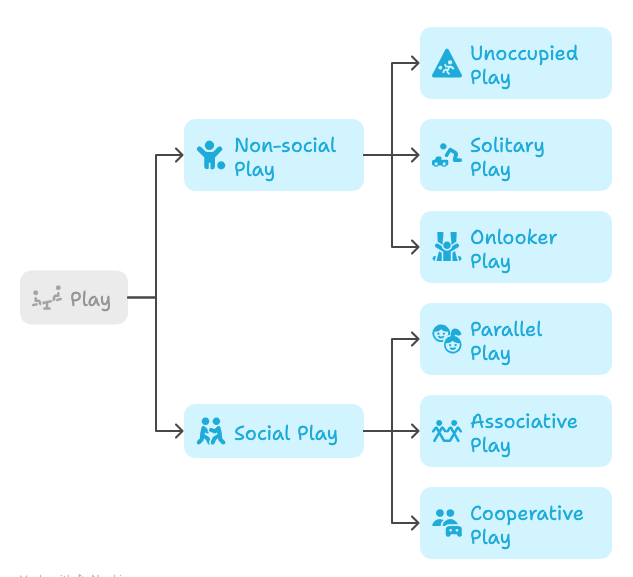
Why the 6 Stages of Play Are Important
Child psychologists and early childhood development specialists may use these stages of play to evaluate and assess children for age-appropriate behaviors. An understanding of the 6 stages can help parents encourage age-appropriate play styles and recognize when a child might need further guidance or professional help. Knowing the stages also helps parents avoid pushing their kids into types of play they might not be ready for.
For example, expecting a 2-year old to regularly play cooperatively with others is unrealistic. But if a 5-year old still only mainly engages in solitary play, this could indicate a need for further observation or support in developing social skills. To learn more about your child’s play stages, watch them in group settings with other children and look for the behaviors associated with each stage.
The 6 Stages of Play: Explanations, Examples, and Tips for Parents & Teachers
Mildred Parten’s 6 stages of play explain how children use play to learn about the world around them, expanding outward from understanding their own body and its movements to learning to function in social groups.
Note: The ages given here are guidelines only. It’s normal for children to move back and forth between stages and progress at their own speed. If you have any concerns about your child, consult an expert.
What Is Unoccupied Play?
Unoccupied play refers to a type of free, self-directed play where infants engage with their surroundings and their own bodies without any set objective or adult guidance.
Most Common at Age: Birth to 3 months
Characteristics of Unoccupied Play:
- Seemingly random movements, often repetitive
- Watching others closely, but not interacting
- Reaching for an object without necessarily grabbing it
Examples of Unoccupied Play:
- Kicking legs and waving hands
- Watching a crib mobile or ceiling fan spin
- Splashing water in the bath
- Grabbing their own toes
- Pointing at people or things
What Unoccupied Play Looks Like:
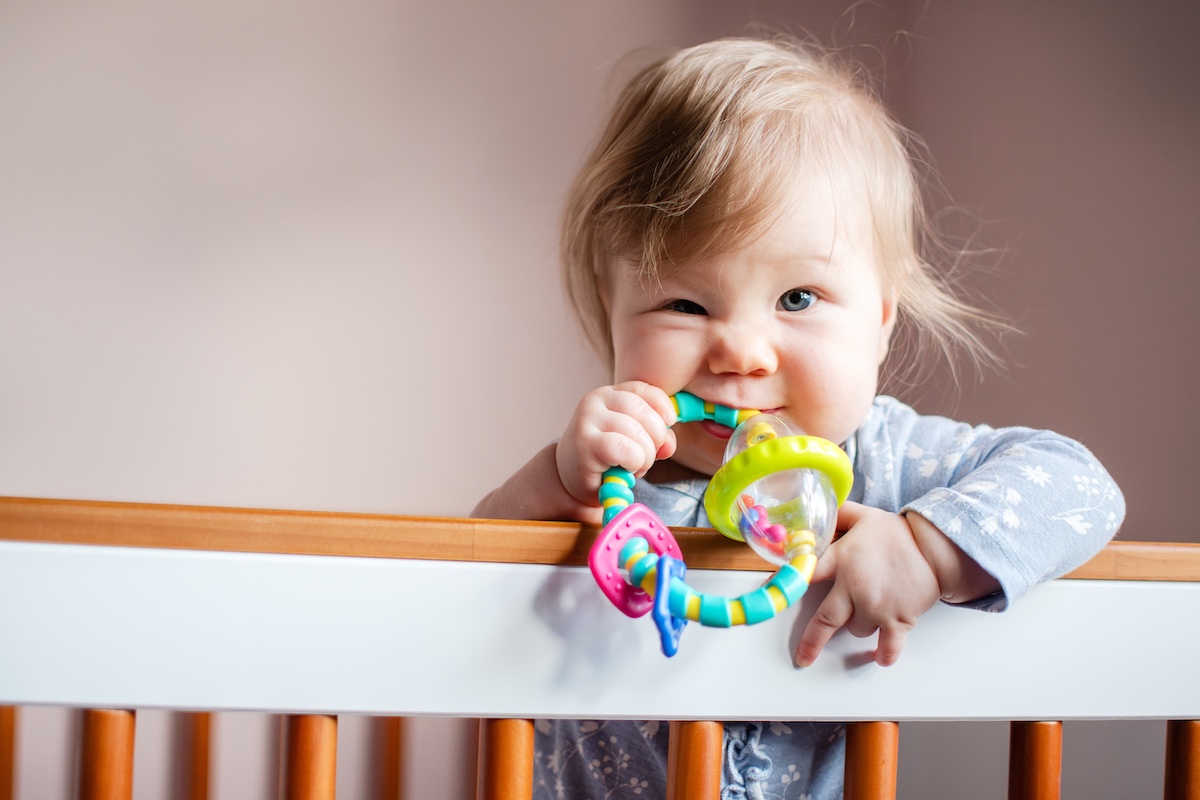
Babies begin to play from the moment they’re born. Their earliest play involves their body itself, as they try out different movements to see what the results will be. Though these behaviors may seem meaningless to adults, they’re actually a very important part of early motor skills development. Infants are learning how to process sensory input from the world around them, gathering information from what they see, hear, and feel.
How Parents/Teachers Can Support Unoccupied Play:
- This is the age at which experts strongly recommend “tummy time,” which helps strengthen shoulder and neck muscles. Simply place your child on their stomach for a few minutes each day. As they get older, you can place toys nearby for them to focus on and reach for.
- Provide safe, stimulating places for infants to explore. Give them room to wiggle and move, and provide new objects to look at, sounds to hear, and other sensory experiences like sensory mats or mirrors.
- It’s okay not to interact with your infant constantly! In fact, they need time for unoccupied play on their own, allowing them to process their bodies and environment at their own pace.
What Is Solitary Play?
Solitary play—also called independent play—is a developmental stage where a child plays on their own, without engaging or interacting with others.
Most Common at Age: 3 to 24 months
Characteristics of Solitary Play:
- Independent
- Highly focused
- Experimental
- Often repetitive
- Unaware of or unresponsive to other children playing nearby
Early Examples of Solitary Play:
- Stacking blocks
- Throwing items away over and over again
- Shaking a rattle or squeezing a squeaky toy
- Banging objects together or on a hard surface
Older Examples of Solitary Play:
- Coloring or drawing by themselves
- Looking through a book
- Singing to themselves as they play with stuffed animals or dolls
What Solitary Play Looks Like:
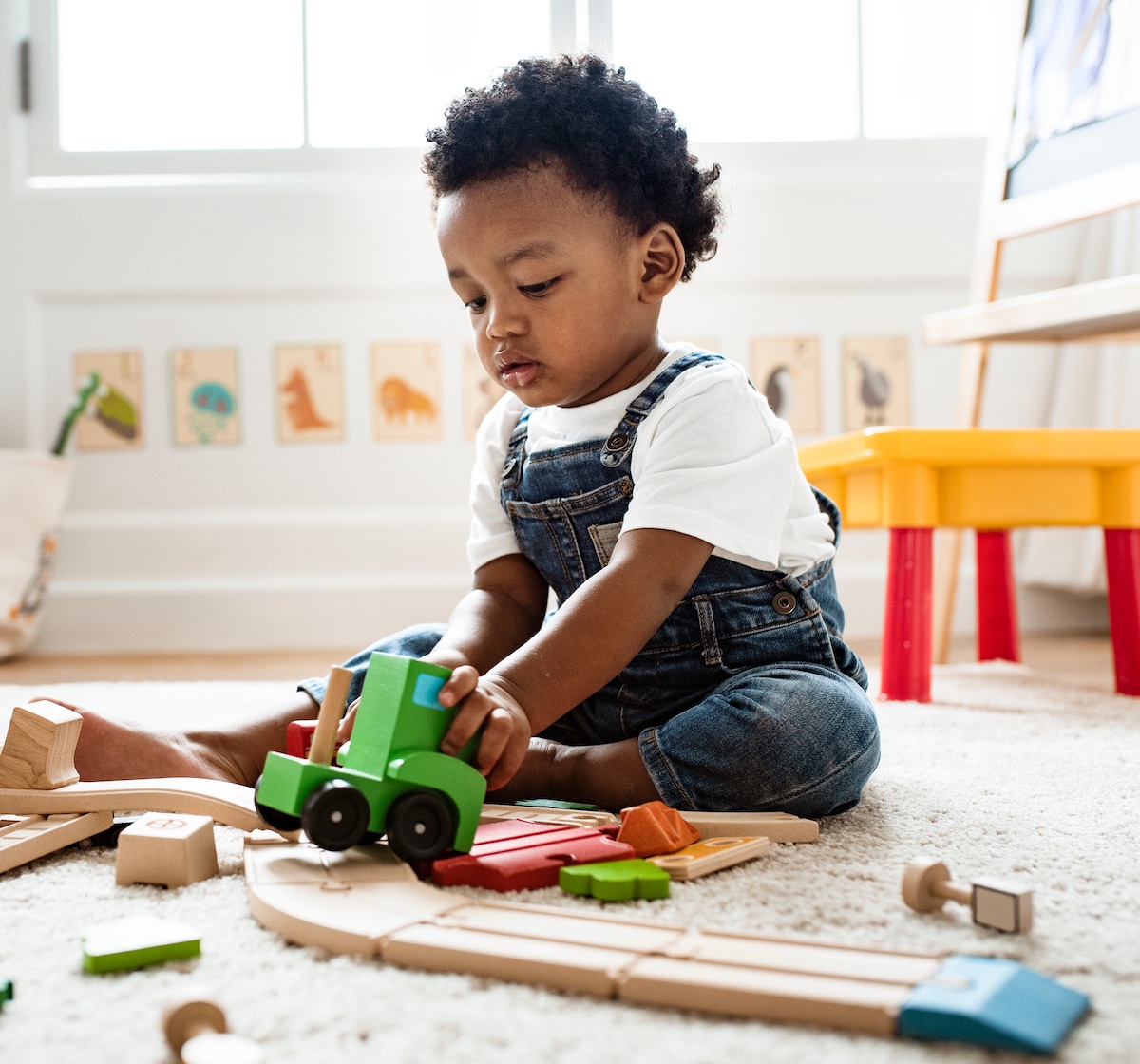
This is the stage at which play becomes more recognizable to parents. Children start to interact with toys and other objects, often in a repetitive way. They become extremely focused and tend to ignore others around them, including other babies and even parents and caregivers. This is completely normal! Kids are now starting to develop concentration, imagination, and problem-solving skills. Solitary play at this age is vital to development, as children take their first independent forays into the world.
Note: Solitary play continues throughout childhood. Many kids are content when they’re playing on their own at any age. But as children get older, they should combine independent play with more social forms of play. Even if they prefer to play by themselves, it’s important for them to develop the social skills needed to play and interact with others. However, some solitary play is perfectly fine at any age.
How Parents/Teachers Can Support Solitary Play:
- Be tolerant of noise and mess. Toddlers haven’t mastered gross and fine motor skills yet, and they can’t always control their movements or voices. When you can, let them play and express themselves freely. (This doesn’t mean children don’t need guidance and boundaries, even at this age. It just means knowing when it’s worth reining in a child’s behavior and when to just let them do their own thing.)
- Allow kids time to play on their own and in any way that they like as long as it’s safe. Don’t feel the need to step in and show them how something works—let them experiment and figure it out on their own. Observe their play, rather than trying to direct it.
What Is Onlooker Play?
Onlooker play, sometimes called spectator play, is a stage of development where a child watches others play but doesn’t join in themselves.
Most Common at Age: 2 to 3 years
Characteristics of Onlooker Play:
- Closely watching other children or groups of children playing
- Laughing, cheering, or otherwise responding to the action
- Asking questions or making comments to players or others nearby
Examples of Onlooker Play:
- A toddler watches other kids playing tag, closely focused on the action
- Child asks a group of children playing with playdough, “What are you making?”
- A preschooler listens as a group nearby pretends to run a restaurant and laughs when one child pretends to serve “mud soup”
What Onlooker Play Looks Like:
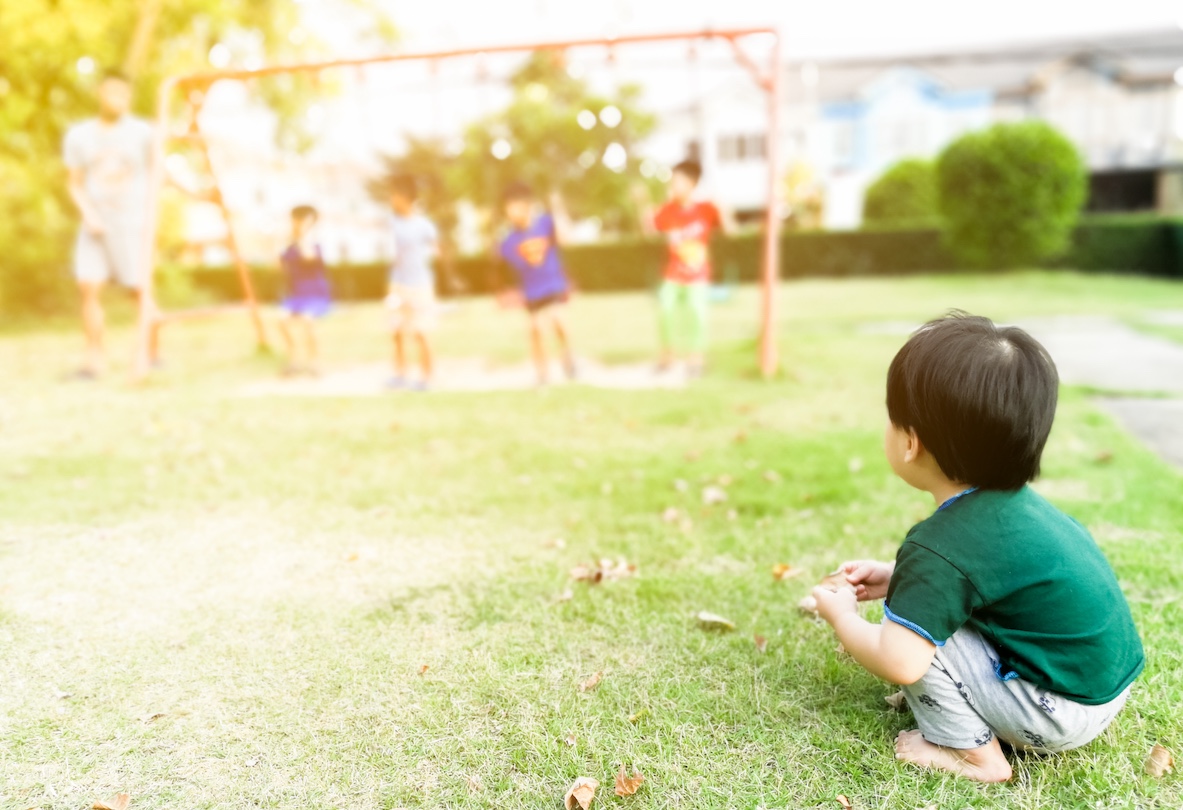
Onlooker play is a transition stage between non-social and social play. Kids spend time watching others in their general age group, observing their actions but making no effort to join in. They might ask questions, laugh with or cheer for the players, or make comments to others about what’s happening. For now, though, they’re content to sit on the sidelines.
Parents may sometimes worry that onlooker play means their toddler is too shy to get involved, but that’s usually not the case. Generally, kids are just subconsciously waiting until they feel confident that they understand the “rules.” They learn so much through these observations, developing an awareness and understanding of how social groups function.
As with solitary play, kids return to this stage from time to time as they get older. This can happen when they’re meeting new groups of people, learning how a game or toy works, or just want to know more before deciding to join in. By the time your child reaches school age, they should spend less time in onlooker play and more in social forms of play instead.
How Parents/Teachers Can Support Onlooker Play:
- Recognize that watching others is an important way to learn. Kids pick up many social-emotional skills simply by observing those behaviors in the people around them. Model good social behavior, and point it out when you see it too. “Look at those kids sharing toys in the sandbox! That looks like fun.”
- Don’t push your child to join in. Most kids will make their own moves toward social play when they’re ready. Sit with them and watch, answering any questions or responding to comments. If they ask if they can join in, gently encourage them to ask, “Can I play with you?”
- Know that even older kids engage in onlooker play from time to time, especially in new situations. For example, a fifth grader who’s new at school might watch others playing soccer on the playground for a day or two before asking to join in. Give kids space to build comfort and confidence, and try not to step in unless it’s truly needed.
What Is Parallel Play?
Parallel play is a developmental stage where toddlers play next to one another, often doing similar activities or using the same toys, but without interacting or influencing each other’s play.
Most Common at Age: 2 to 3 years
Characteristics of Parallel Play:
- Independent but not solitary
- Little or no interaction between children
- Minimal sharing or cooperation
- Comfortable with other kids playing nearby
- Some observation and imitation of others
Examples of Parallel Play:
- Four kids finger painting at the same table, but each is only focused on the pictures they’re making. They don’t talk to each other about their work.
- Two children playing in the sandbox, digging their own holes and making their own structures. One quietly watches the other fill a pail with sand and dump it over to make a tower, then does the same themselves, but doesn’t say anything to the other child.
- Three kids play in the same room. One sings quietly to themself as they put together a puzzle, one builds structures out of LEGO® bricks, and the third draws pictures with crayons. A fourth child comes in, sits down nearby, and begins to look through a picture book, comfortable with the presence of the other kids.
What Parallel Looks Like:
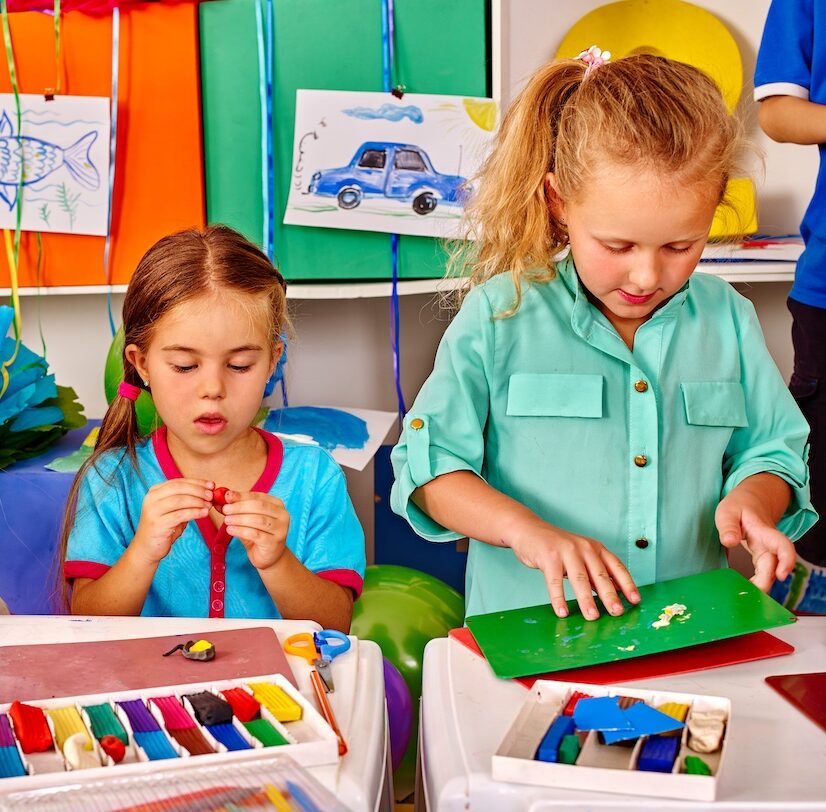
Parallel play is another transition stage, but this stage has a more actively social aspect. In parallel play, kids play side-by-side with the same toys or activities, but don’t directly interact with one another.
Sometimes they watch each other or imitate what they see, but they’re still more focused on their own play. Parallel play is an important bridge between solitary and social play.
Walk into an early preschool classroom, and you’re likely to see a lot of parallel play. Three kids might be playing with blocks, but they’re all building their own structures. They’re more likely to talk to themselves than with others, or just play quietly. It may seem like solitary play, but these children are actually developing important social skills. They’re becoming comfortable around others and learning new ideas by watching and imitating.
The more a child engages in side-by-side play, the more they learn to tolerate the presence of others. Parallel play actually helps them fine-tune their concentration, since they may need to tune out other actions and noises while they play. It also develops their spatial awareness, giving them the ability to move around in crowded spaces without running into each other.
Older kids may participate in parallel play too. A new kid on the playground might watch others kicking a ball around, then start kicking around another ball on their own nearby. It’s a subtle way to express interest in more social play before taking more deliberate steps to join.
How Parents/Teachers Can Support Parallel Play:
- At younger ages, playgroups are often all about parallel play. It may seem like there’s no point in getting kids together just so they can play on their own, but it’s actually a valuable experience. Children must become comfortable with having others nearby, especially those their own age. Start playgroups early to encourage your child to tolerate social situations, even if they don’t interact.
- In groups, provide multiple versions of the same toys so kids can play side-by-side. For instance, have several sets of crayons and coloring books, more than one puzzle, or separate bins of building blocks kids can use.
- Provide plenty of space for kids to play near each other without crowding each other out. When kids play more active games, help them learn how to move around a space while being aware of others. “Your jumping game looks like fun! Why don’t you move over here a bit so you don’t run into Olivia and her block towers?”
What Is Associative Play?
Associative play is a stage of social development where children play near each other, interact, and share materials, but their play isn’t coordinated around a shared goal or structured activity.
Most Common at Age: 3 to 4 years
Characteristics of Associative Play:
- Shared materials or toys, but separate goals
- Increased interaction and conversation
- Play is usually unstructured
- Often includes preferred playmates
- Kids begin to share and resolve conflicts as they play
Examples of Associative Play:
- Two kids share a set of building blocks, chatting while they work, but each still building their own structures. From time to time, they comment on what the other has built.
- Four children coloring pictures talk to each other about what they’ve created, sharing the contents of a crayon box and asking each other for the colors they want. When two kids both want to use the red crayon at the same time, they eventually figure out that they need to take turns.
- One child shows another how to throw sticky balls at a target, offering tips for getting closer to the center. They take turns, but don’t keep score or compete in any way, just enjoying each other’s company and the challenge of the game.
What Associative Play Looks Like:

This is the first stage where kids truly begin to regularly interact while they play. Kids talk, share toys, and demonstrate and imitate activities and games. However, at this stage, children don’t fully organize or collaborate during play—in other words, they don’t have a clearly defined shared goal. It’s essentially parallel play, but with interaction between kids.
Older preschool classrooms host a lot of associative play. This is a huge social leap for early childhood development—showing an interest in what others are doing and joining in the activity in their own way. To reach this stage, kids need language and communication skills, social awareness, cooperative skills, some degree of empathy and self-control, and tolerance for those different from themselves.
Older children return to associative play from time to time, especially in creative endeavors. For instance, fourth grade students might share a box of art supplies, but each make individual creations. They talk and laugh while they work, sharing ideas but ultimately focused on their own work.
How Parents/Teachers Can Support Associative Play:
- Allow time for free play without restrictive rules or structure. Provide open-ended toys that encourage use by multiple children at once, such as building blocks or art supplies.
- Encourage conversation as kids play. “Emmet, your tower is so tall! Can you tell Liam how you did that?” or “You’re doing a great job of sharing the kitchen toys! What are you both making?”
- Model social skills and awareness. “Taylor, you’re taking up a lot of space on the table, and Ashton doesn’t have much room. Could you move over a bit and try to keep your painting supplies on your side of the table, please?’”
- Teach conflict resolution skills. As kids learn to share and play together, conflict is inevitable, and adults must demonstrate and model the right behaviors. “Jaxon, you grabbed the green crayon even though you knew Emma was using it. Remember to ask first: ‘Emma, are you done with the green crayon? Can I use it now, please?’” or “Charlotte, you and Noah can’t both use the swing at the same time. What can you do while you wait for him to finish his turn? Noah, remember that Charlotte is waiting for the swing, so you get two more minutes, then it’s her turn.”
- Occasionally nudge kids into true cooperative play, but don’t insist on it. “I love the buildings you’re each making! What if you worked together to build a whole town?” or “Morgan, it looks like Lin wants to kick the soccer ball around too. Could you two try playing with it together?”
What Is Cooperative Play?
Cooperative play happens when children work together toward a common goal, using communication, teamwork, and problem-solving to complete a shared task or activity.
Most Common at Age: 4 to 5 years and up
Characteristics of Cooperative Play:
- Shared materials and goals
- Players have different assigned goals in the game
- Players agree on the rules up front or develop them throughout
- Regular communication amongst players
- More autonomous conflict resolution and compromise
- Longer play sessions that often involve creativity and imagination
Examples of Cooperative Play:
- Four children play “House” together. One is the mom, one is the grandma, and two are the kids. They invent and role play domestic scenarios together.
- Two children create a new ball game together involving bouncing a ball off the wall and ground, with complex rules and scoring. When other kids come along, they invite them to join in, explaining the rules of the game.
- Three children work together to put together a jigsaw puzzle. They agree on a plan (“First we’ll do the edges, then work on the middle”) and assign roles (“Katelyn, you work on the pink pieces of the house, and I’ll try to put together the sky.”) They chat while they work, sometimes about the puzzle and sometimes about other topics.
What Cooperative Play Looks Like:

This is the final and most social of the 6 stages of play. Children collaborate as they play, sharing the same materials or toys, following the same set of rules, and working together for a common purpose. They communicate often, verbally and nonverbally, usually to specifically advance the game.
For older children (post-preschool), this is the most common form of social play. Their games and play activities last longer, are more complex, and may involve larger numbers of participants. Kids develop more social awareness, understanding what’s expected of them and what to expect of others. They tend to resolve conflicts on their own when they can, and while they may invite adults to play, those adults must follow the “rules” developed by the children. For example, in a game of The Floor is Lava, a child might say, “No, you can’t walk there! That part of the floor is hot lava!”
The benefits of cooperative play are numerous and well-established. Children develop social skills through all the stages of play, but this is the stage where they truly need strong social skills to succeed and thrive as part of the group. They’re learning by experience and nearly all will hit rough patches from time to time. Learn much more about the benefits, challenges, and importance of cooperative play here.
How Parents/Teachers Can Support Cooperative Play:
- Provide big open play spaces and materials to spark imagination (dress-up clothes, building toys, toy food and kitchen utensils, loose parts boxes, etc.). You can also offer prompts to get them started: “Let’s pretend this jungle gym is a tree in the actual jungle!” or “What if you built a model of our town?”
- Allow kids to develop their own games and play activities. Give them room to create their own rules, asking questions to guide only if needed: “How will you decide the winner?” or “What do you think you should do first?”
- Encourage social awareness and model good behavior. “Amelia, I don’t think Sarah has a job in your store yet. Why don’t you ask her what she’d like to do?” or “Your game of Aliens and Puppies Freeze Tag looks so fun! But you keep running into the area where Quinn, Parker, and Riley are playing airport. Can you move a little further down the playground and give them some room?”
- Give kids time to resolve conflicts independently before stepping in. Then, guide them toward the right behavior. “Looks like Lane and Allie both want to be the leader. Can you take turns, or share the leader role?” or “You all agreed on the rules up front, but this particular rule seems to be causing a lot of arguments. Do you think you should consider changing it?”
- Recognize good collaboration and teamwork when you see it. “Way to go! You managed to get every member of your team through the obstacle course by helping each other! I’m so impressed!” or “Alex, I really liked the way you found a way for Miguel to join in your game halfway through. He really wanted to play, and you all had so much fun together.”
Other Types of Play
While Parten’s 6 stages describe the social aspects of play, there are many other terms that child development experts use to describe the way kids play. Experts have determined that there are 12 to 16 ways that children play. Here are a few you may hear as a parent or teacher.
Other Ways Children Play
- Attunement play
- Physical play
- Social play
- Constructive play
- Imaginative or pretend play
- Functional play
- Symbolic play
- Expressive or creative play
Attunement Play
Attunement play is one of the earliest forms of interaction between an infant and caregiver, laying the foundation for emotional connection. This type of play fosters trust, empathy, and emotional regulation, supporting healthy social and emotional development. It includes
- shared eye contact
- smiles
- facial expressions
- responding to one another’s coos, babbles, and gestures
These “serve and return” exchanges—where the baby initiates with a sound or movement and the adult responds with attention, smiles, or soothing touch—help build secure attachment.
Example: A father and baby make silly faces at each other, laughing as they do; a baby points to a toy and a caregiver brings it over, making it dance for the baby.
Physical Play
Physical play uses the body in active ways. Babies engage in this type of play from a young age, though it advances when kids can walk on their own. It helps to
- build strength and improve overall physical health
- develop gross and fine motor skills
Example: Running, jumping rope, riding a tricycle or bicycle, dancing, skipping, playing a sport
Social Play
Social play is any form of play where kids interact and talk with each other as they play together or near each other. This can involve:
- interaction related to the activity or game they’re enjoying
- conversing while playing side-by-side
Example: Team sports, parallel play, associative play, cooperative play, board games, imaginative games
Constructive Play
In constructive play, participants build or create something with a specific purpose. They may
- play collaboratively in a group
- play with one other child to build something
- play individually to make something on their own
Example: Working together to put together a puzzle, creating a large mural, building a city from blocks, writing and acting out a skit or play
Imaginative Play
Imaginative play, or pretend play, occurs when kids use their imagination heavily in an activity or game. They may
- make up stories to share with each other
- act out themselves or with toys
- invent entire new worlds with characters and storylines
Example: Playing house, school, or hospital; dressing up in play clothes; having a stuffed animal tea party; pretending to be a superhero
Functional Play
In functional play, children are learning how something works, with the essential question of, “What happens if I do this?” Here are few characteristics of this type of play:
- It often includes repetitive actions
- It’s especially common with very young children
- Kids of any age engage in functional play when they encounter something new
Example: Throwing a ball in different ways to see how high it bounces, pushing all the buttons on a toy in turn or at once, stacking objects until they fall over
Symbolic Play
This form of imaginative play turns objects or actions into whatever kids want or need them to be. For example, a red block becomes an apple for their game of grocery store or a large box becomes a space ship.
- Children use symbolic play more when they have fewer structured toys at hand
- Symbolic play helps develop stronger creativity and problem-solving skills
- Requires imaginative and abstract thinking
Example: A stick becomes a magic wand, a box is a castle on Mars, a blanket is a magic cape, a wooden spoon is a telephone
Expressive or Creative Play
In this type of play, children share their thoughts, feelings, and creativity through their activities. It includes
- Creative and joyful activities like singing, dancing, drawing, or writing
- It can also be a way to express negative thoughts or feelings: “I’m coloring black rain clouds because I’m angry.”
Example: Singing out loud to themselves or an audience, drawing pictures to share with others, writing poems when they’re sad, or putting on a puppet show
How to Support Healthy Play at Every Stage
No matter what stages of play your child currently participates in, these simple tips help ensure they’re safe, supported, and challenged in age-appropriate ways.
Support healthy play by
- Creating safe and open places to play.
- Making time for unstructured play
- Respecting all stages of play
- Following children’s lead when playing
- Joining in play when invited
- Gently encouraging children onto the next stage of play
1. Create Safe and Open Play Spaces
Kids need room to move! It’s better to have fewer toys and structures and more open space for them to use in any way they like. When you invite kids over for a playgroup or playdate, narrow down the toys they have to play with, or choose a space where they’re free to move around and play as the spirit takes them.
2. Make Time for Unstructured Play
As kids get older, you’re likely to start filling their schedule with lessons, sports, and other structured activities. Be sure you build in time for unstructured play, too! Tip: If your child finds themselves with an afternoon of free time and has no idea what to do with it, they’re probably not getting enough unstructured play time on a regular basis. Offer some suggestions, like “Let’s build a fort!” or “How about creating a village in the sandbox for your toy people?”
3. Respect All Stages of Play
As kids get older, you’re likely to start filling their schedule with lessons, sports, and other structured activities. Be sure you build in time for unstructured play, too! Tip: If your child finds themselves with an afternoon of free time and has no idea what to do with it, they’re probably not getting enough unstructured play time on a regular basis. Offer some suggestions, like “Let’s build a fort!” or “How about creating a village in the sandbox for your toy people?”
4. Don’t Over-Direct Play
Instead of, “Here, let me show you how to put those blocks together,” say, “What do you think we can build with these blocks?” Resist the urge to jump in and show them how to do everything “the right way,” and don’t get angry if they play games by different rules. Accept their lead and follow it, or simply step back and observe what they do.
5. Join In When Invited
Those moments when a child actively wants to spend time with you go by faster than you think. Join in enthusiastically, praise their creativity, and let them show you new ways to have fun!
6. Gently Encourage Children to Move to the Next Stage
The key here is gently—and only when it’s age- or developmentally-appropriate. The best way to do this is by modeling behavior. “Let’s ask those kids if we can play tag, too,” or “Can Maria share your crayons and draw her own picture?” Do not force your child to move on. If you’re worried that they aren’t progressing through the social stages of play as they should, talk to your child’s teacher or pediatrician.
Why These Stages Matter for Learning and Development
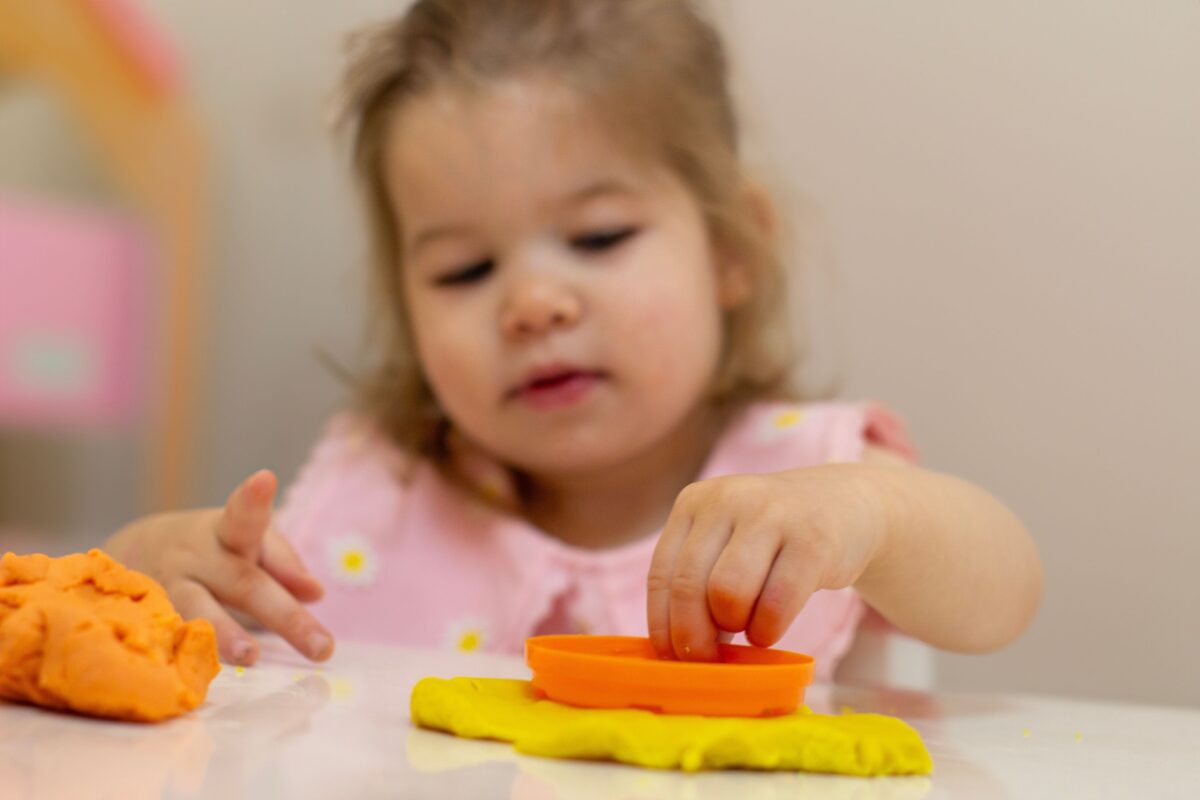
Child development experts now consider play so essential that Unicef’s Convention on the Rights of the Child includes it as article 31: “That every child has the right to rest and leisure, to engage in play and recreational activities appropriate to the age of the child and to participate freely in cultural life and the arts.”
An April 2012 report on The Importance of Play states: “The evolutionary and psychological evidence points to the crucial contribution of play in humans to our success as a highly adaptable species. Playfulness is strongly related to cognitive development and emotional well-being.” The report also noted that play has an important role in language development, self-regulation, and metacognition (learning how to learn).
Perhaps Fred Rogers, beloved television host of the show Mr. Rogers’ Neighborhood, summed it up best: “Play is often talked about as if it were a relief from serious learning,” he wrote. “But for children, play is serious learning. At various times, play is a way to cope with life and to prepare for adulthood. Playing is a way to solve problems and to express feelings. In fact, play is the real work of childhood.” Decades of research all point to the same conclusion: all stages of play matter.

Stages of Play FAQ
What are the 6 stages of play development?
The 6 stages of play include unoccupied, solitary, onlooker, parallel, associative, and cooperative play and are based on the research of sociologist Mildred Parten. Parten developed her theory of the six stages of play based on her 1929 doctoral dissertation, which was published in 1932 and identified six stages of play based on her observations of preschool children aged 2 to 5. She grouped these into non-social and social categories, noting that children typically move through them as they develop, though not in a fixed order. The stages remain widely recognized today, with age ranges serving as flexible guidelines rather than rigid benchmarks.
What’s the difference between solitary play and parallel play?
In solitary play, children play independently and alone. They are completely focused on their own activity or game and may not even realize others are there. In parallel play, kids play side-by-side with each other. They still focus on their own play and don’t communicate much with those nearby. However, they are aware of other children and may occasionally watch and imitate what they do. Parallel play is important because it helps children develop social awareness and become comfortable in social environments.
When do kids start playing together?
Around the age of three, children begin associative play, sharing toys and play spaces but without any structure or shared goals. They begin learning how to share and compromise, making room for others to play while still staking out space for themselves. At the same time, they may engage in onlooker play, watching other children or groups closely to learn more about what they’re doing.
By age four or five, most children begin to join in cooperative play. They’ve developed enough social awareness and emotional intelligence to learn and follow the rules, take turns, and navigate conflict. Adults offer guidance, but children begin to play more and more independently as they get older.
Remember that ages are only guidelines when it comes to the stages of play. Kids move back and forth freely between stages. If you’re concerned that your child hasn’t begun playing cooperatively with other children by the time they reach school age, talk to your child’s pediatrician or teachers.
How can I encourage my child to move to the next stage of play?
Model the behaviors you’d like your child to try. You might say, “Your blocks look like a lot of fun! Do you mind if we sit down and play with them too?” This could encourage a child to begin exploring parallel or even associative play.
Don’t push your child to advance if they’re not ready. Some kids need to spend more time as onlookers before they’re confident enough to join in. If you feel like your child needs a nudge, though, it’s okay to ask, “Why don’t you ask if you can play catch too? Do you want me to come with you when you go talk to them? If not, I’ll be right here if you need me.”
How do I know if my child’s play is age-appropriate?
You can use the ages listed here as very general guidelines, but remember that children move back and forth through the six stages at their own pace. If you’re concerned your child isn’t showing any of the behaviors usually associated with their age, talk to a professional like your pediatrician. It could indicate a delay in social development, which can often be helped through therapy or other interventions.
Legal disclaimer: Any information, materials, or links to third-party resources are provided for informational purposes only. We are not affiliated with and do not sponsor/endorse these third parties and bear no responsibility for the accuracy of content on any external site. All information provided in this article is current as of May 2025.

